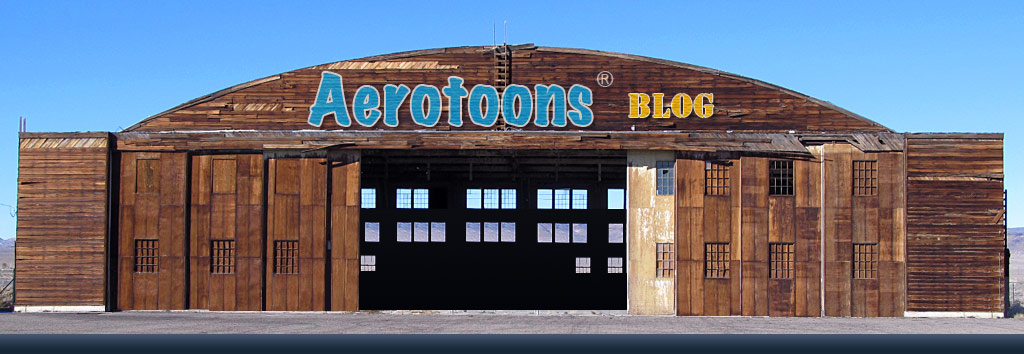Fuselage Part Two
Welcome to Fuselage part two, this is a continuation of the fuselage part of the build. Fuselage Part One was getting quite large and the page was loading slowly so I added this page to help speed things up.... |
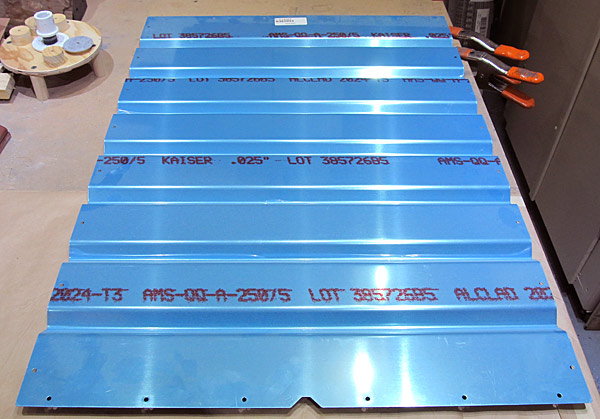 I am deburring parts listed in Section 42: Miscellanea which are basically access panels that are located in the center of the fuselage cabin interior. |
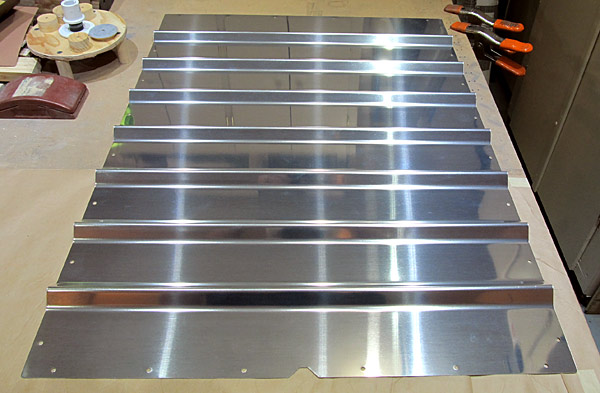 This is the "door" that separates the baggage compartment from the aft section of the fuselage. |
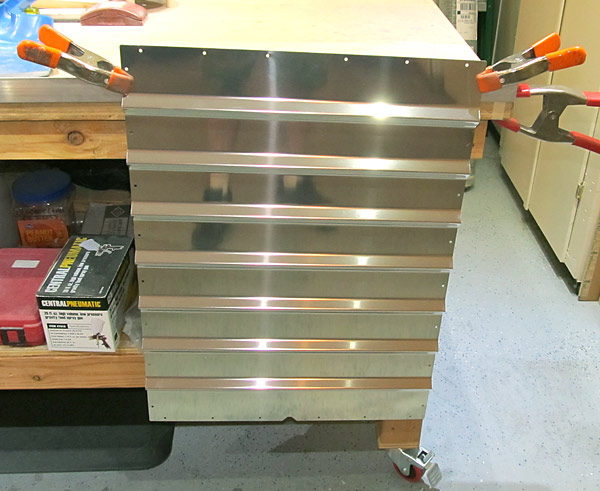 After the (F-01406F) baggage bulkhead corrugation is painted, a placard to warn passengers as to the experimental nature of this aircraft, will be placed on it to comply with FAA regulations 45.23. |
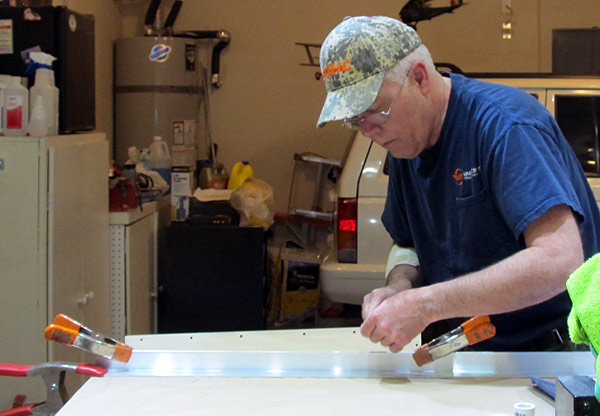 I like to use a hand file to debur the edges of parts first and follow up with sanding or polishing the edges with fine grit sand paper. It also helps to have the part clamped to the bench! |
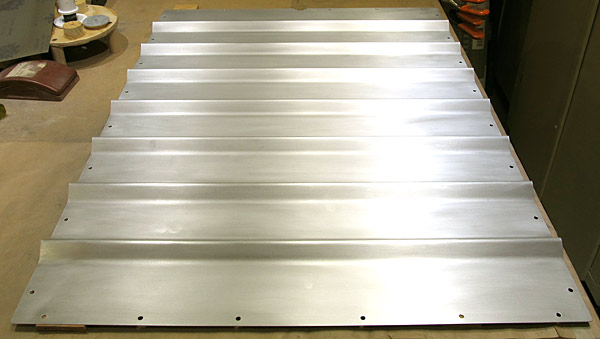 The debur process is done and now I have scuffed the front side with maroon Scotch-Brite™ pads in preparation for painting. |
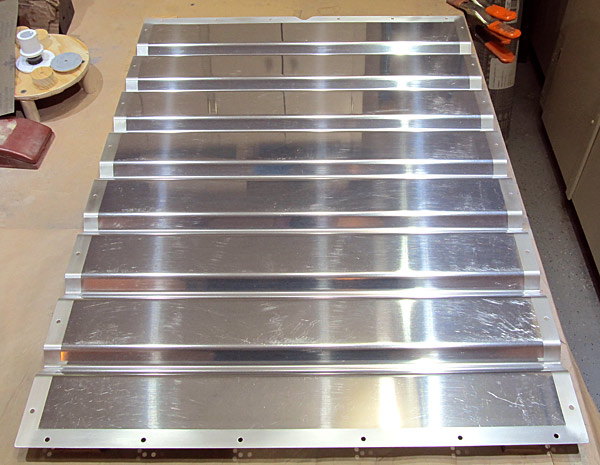 This is the aft side of the (F-01406F) baggage bulkhead corrugation. I am only going to paint the edges and the remainder will be the natural aluminum finish. |
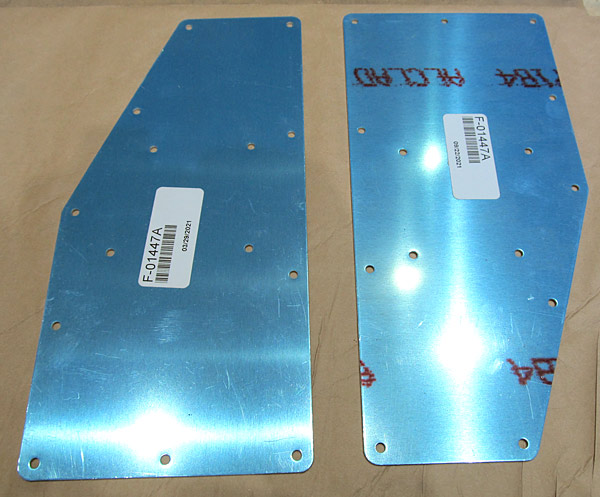 The next parts to be debuured are the (F-01447A) step access covers, there are two of them. These cover the baggage floor section where the aircraft steps are installed. |
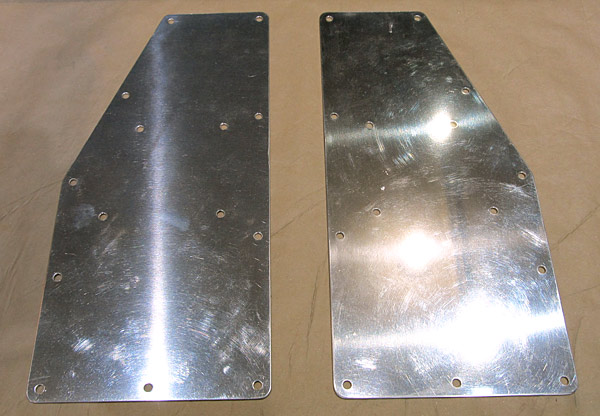 All of the edges of the (F-01447A) step access covers have been deburred and all of the holes have been deburred. |
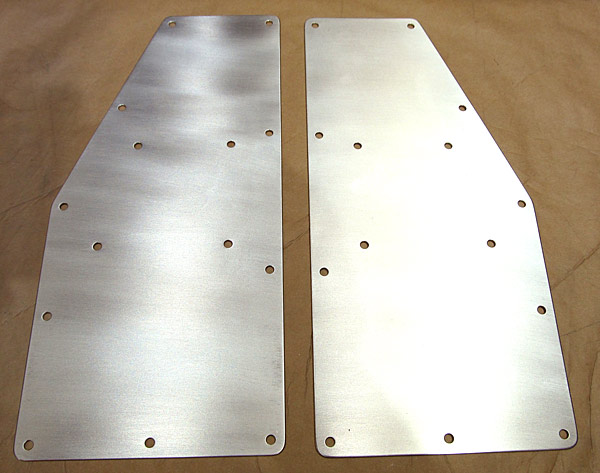 I scuffed the (F-01447A) step access floor covers with maroon Scotch-Brite™ pads in preparation for painting. |
 The (F-01446) baggage floor cover is next for deburring. |
 The edges of the (F-01446) baggage floor cover have been deburred and all of the holes have been deburred. |
 The outer surface of the (F-01446) baggage floor cover has been scuffed with a maroon Scotch-Brite™ pad in preparation for painting. |
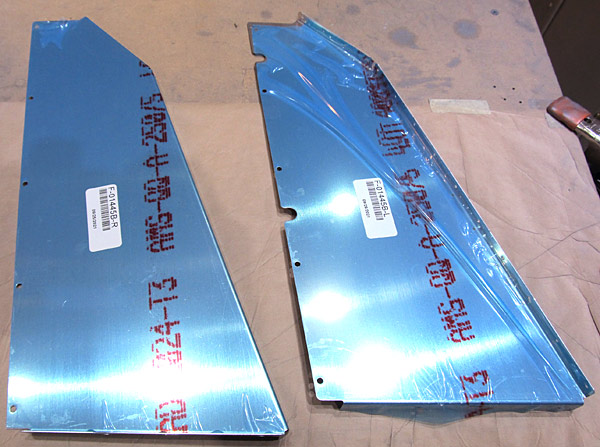 The (F-01445B-L and F-01445B-R) left and right flap motor cover sides are next to be deburred. |
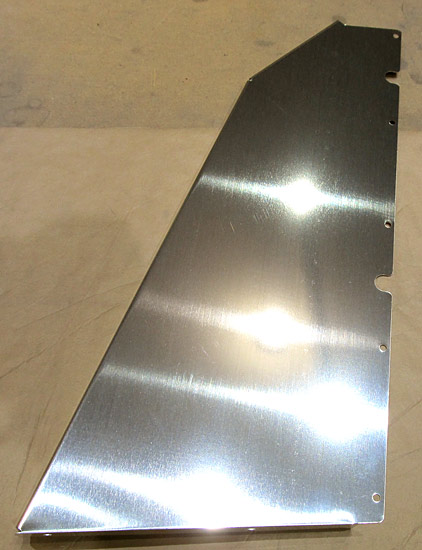 I started deburring the edges of the (F-01445B-R) right flap motor cover. The edges have been deburred here as well as all of the screw holes. |
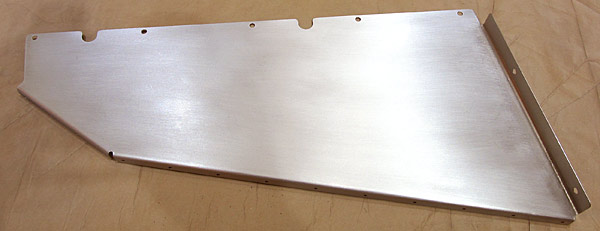 I scuffed the outer surface of the (F-01445B-R) flap motor cover with a maroon Scotch-Brite™ pad in preparation for painting. |
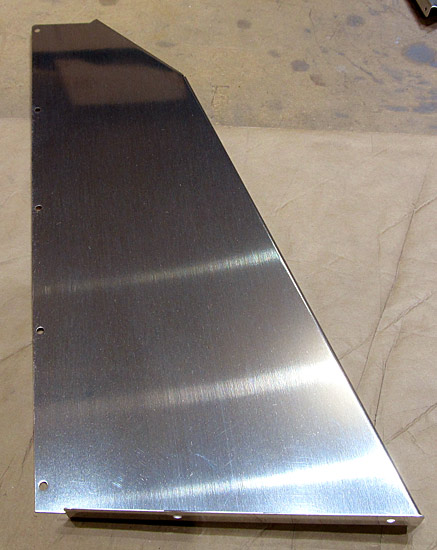 I deburred the edges of the (F-01445B-L) flap motor cover and deburred all of the screw holes. |
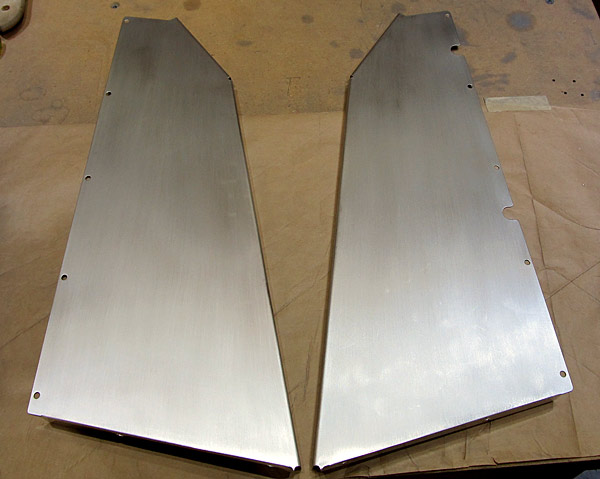 The outer surfaces of the (F-01445B-L and F-01445B-R) left and right flap motor covers with a maroon Scotch-Brite™ pad in preparation for painting. |
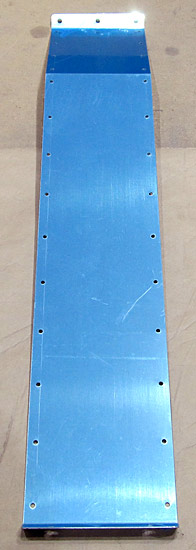 The (F-01445A) front flap motor cover is next to be deburred. |
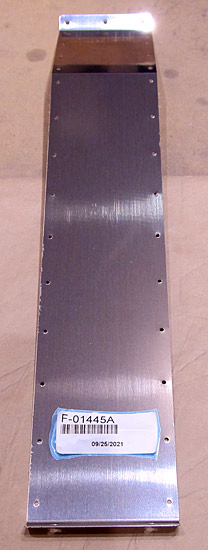 The (F-01445A) front flap motor cover edges have been deburred and all of the screw holes have been deburred. |
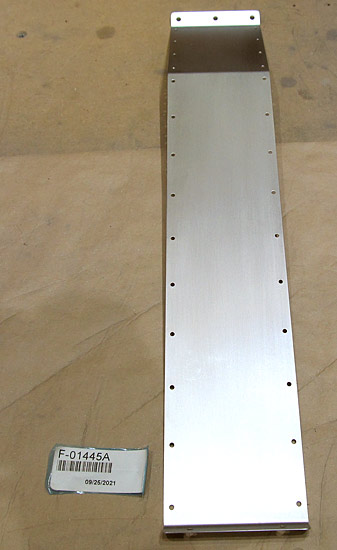 I scuffed the outer surface of the (F-01445A) flap motor cover with a maroon Scotch-Brite™ pad in preparation for painting. |
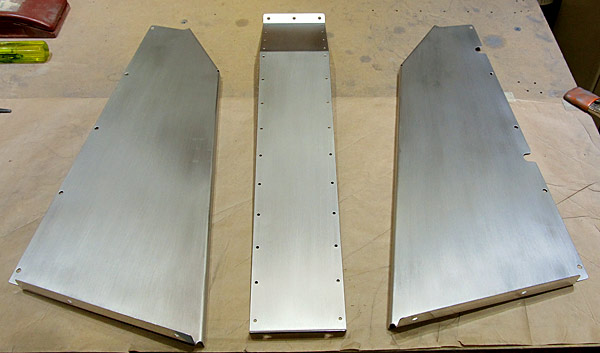 The flap motor cover assembly consists of three pieces, the (F-01445B-L and F-01445B-R) left and right flap motor cover sides, and the (F-01445A) flap motor cover front. |
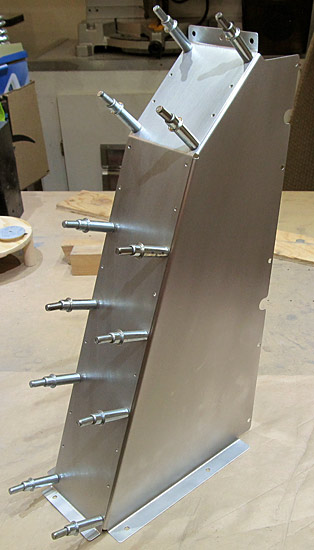 I clecoed the (F-01445B-L and F-01445B-R) left and right flap motor cover sides to the (F-01445A) flap motor cover front. |
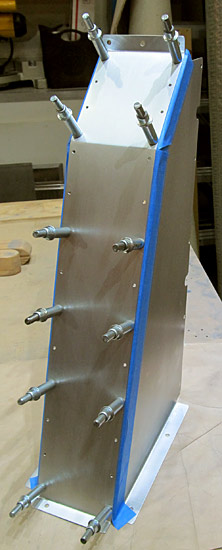 I am placing blue masking tape along the overlapping edges of the flap motor assembly so that when I disassemble the unit I can prime them. |
 I have disassembled the flap cover assembly and will prime the edges with SPI 6610-4 epoxy primer. |
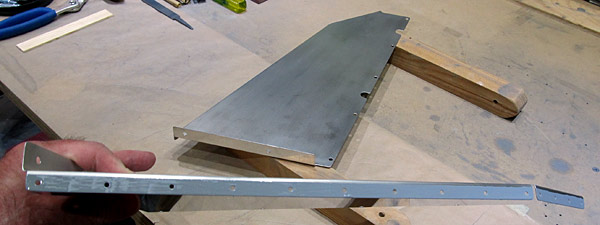 I just painted the edges with a coat of SPI 6610-4 epoxy primer using a brush, nothing fancy here; it will never be seen! |
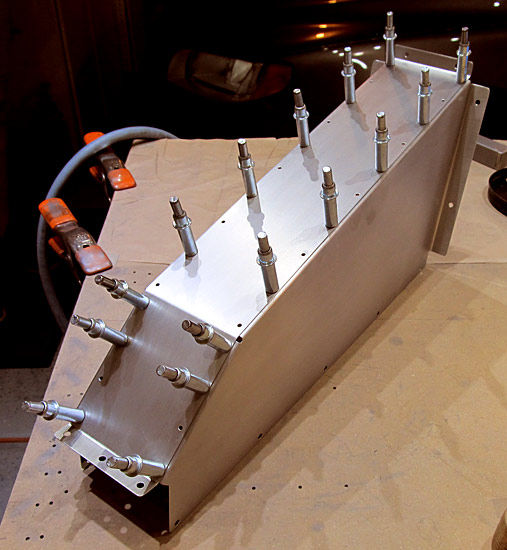 As per step three, on page 42-03, referencing figure three, the (F-01445B-R, F-01445B-L, and F-01445A) flap motor covers were clecoed together and riveted using AN470AD3-3 rivets set with a rivet gun and tungsten bucking bar. |
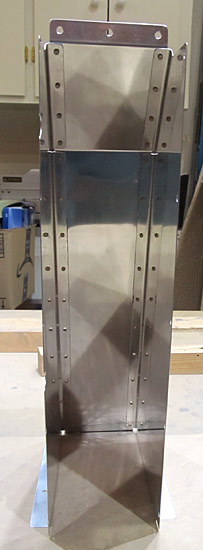 View of the inside of the flap motor cover assembly. |
 The (F-01439) seat ramp cover is next to be deburred. |
 The (F-01439) seat ramp cover edges have been deburred as were all of the screw holes. |
 The outer surface of the (F-01439) seat ramp cover was scuffed with a maroon Scotch-Brite™ pad in preparation for painting. |
 As per step two, on page 42-02, referencing figure one, four nutplate rivet holes in the (F-01439) seat ramp cover were dimpled to receive AN426AD3-3 rivets. |
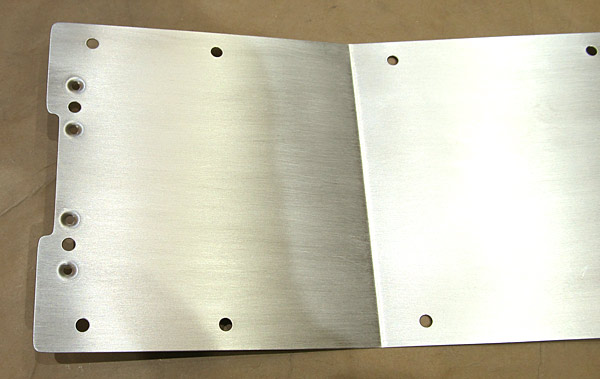 I used our DRDT2 dimple machine to dimple the holes with 3/32" dimple dies. |
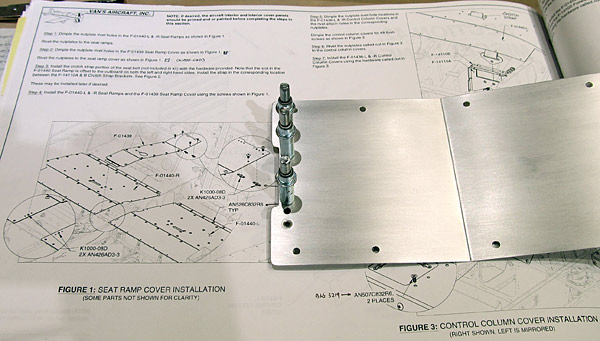 (K1000-08D) nutplates will be installed here. They are pre-dimpled in order to receive the (AN426AD3-3) rivets. |
 As per step two, on page 42-02, the (K1000-08D) nutplates were installed using our hand squeezer. |
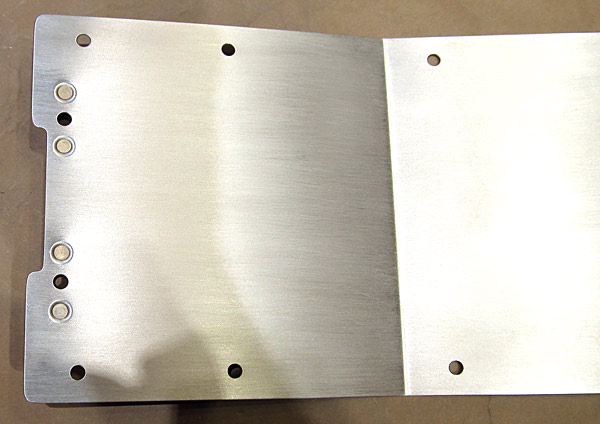 Just a closer view. |
 View from the back side of the (F-01439) seat ramp cover nutplate installation. |
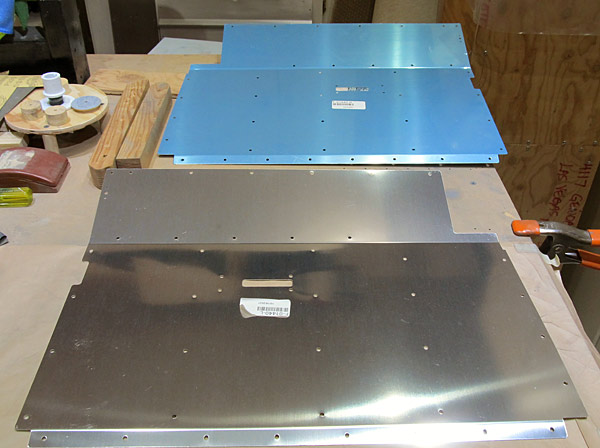 There are two seat ramps, (F-01440-L and F-01440-R). They are the at base of the front seats. |
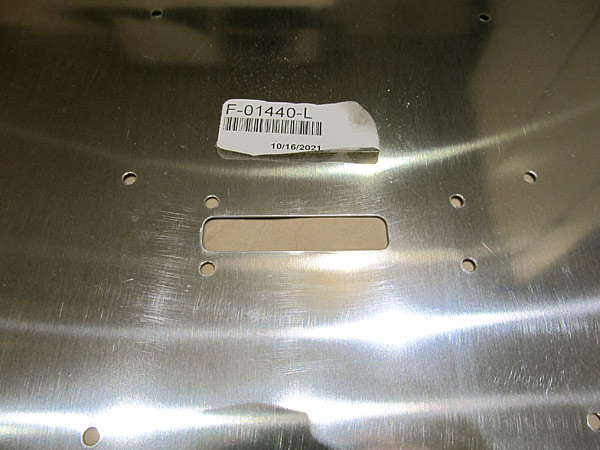 Since the crotch strap is passed through this slot, I made sure that the edges of the slot were rounded over so as to not have a point where abrasion could occur. |
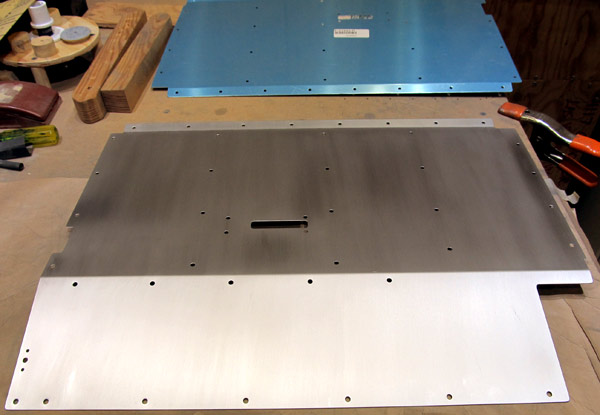 I scuffed the outer surface of the (F-01440-L) left seat ramp with a maroon Scotch-Brite™ pad in preparation for painting. |
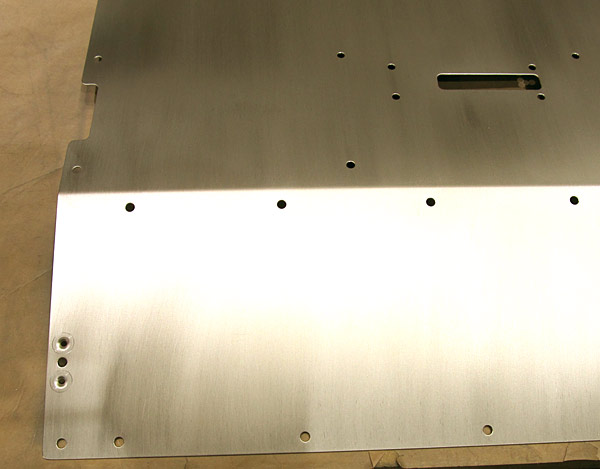 As per step one, on page 42-02, referencing figure one, the nutplate rivet holes in the (F-01440-L) left seat ramp were dimpled to accept AN426AD3-3 rivets. |
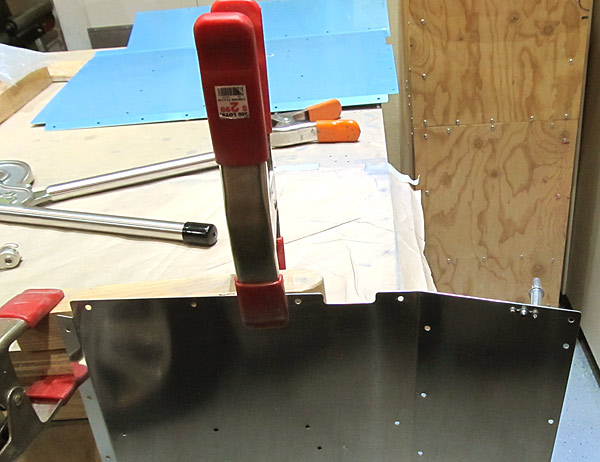 The K1000-08D nutplate was riveted to the (F-01440-L) left seat ramp with AN426AD3-3 rivets set with our hand squeezer. |
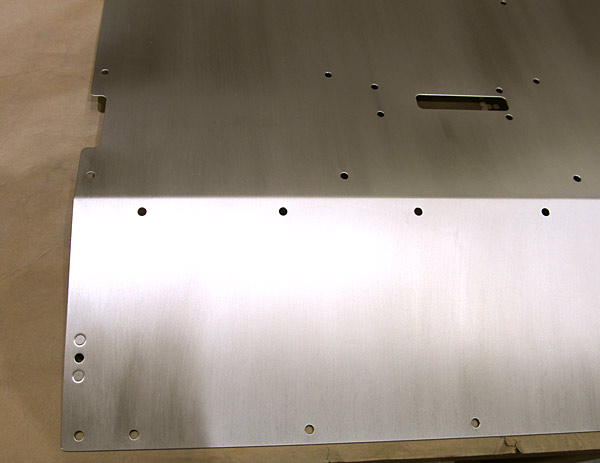 Top view of nutplate rivets set on the (F-01440-L) left seat ramp. |
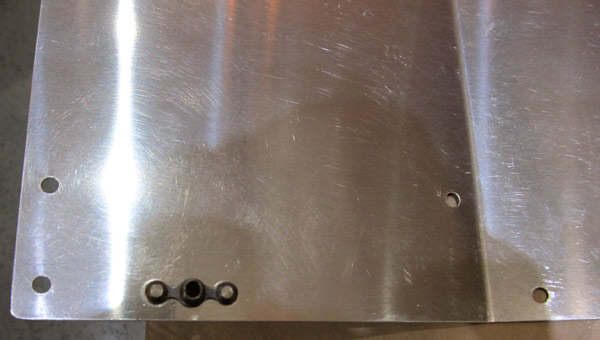 View of nutplate on the back side of the (F-01440-L) left seat ramp. |
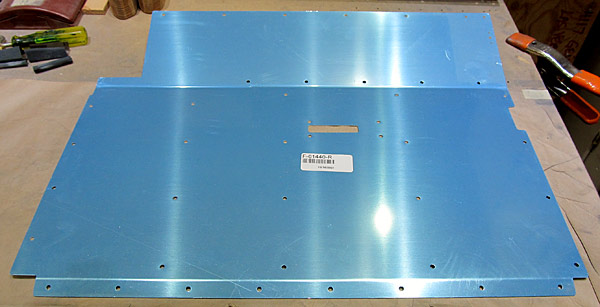 Next, on to the deburring process of the (F-01440-R) right seat ramp. Just like the left seat ramp, this panel is at the base of the seat on the right side of the aircraft. |
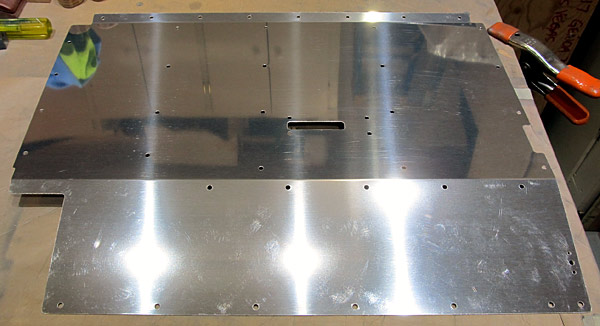 The edges of the (F-01440-R) right seat ramp and all of the screw holes were deburred. |
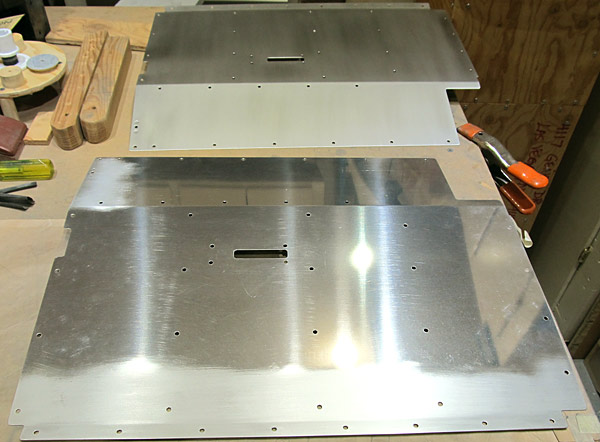 The edges were polished on this (F-01440-R) right seat ramp, (as they are on all of my deburring operations), using fine grit sandpaper. |
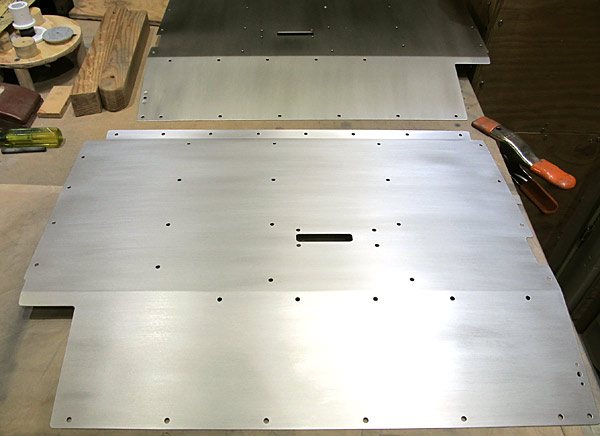 I scuffed the outer surface of the (F-01440-R) right seat ramp with maroon and gray Scotch-Brite™ pads and washed all surfaces with acetone in preparation for painting. |
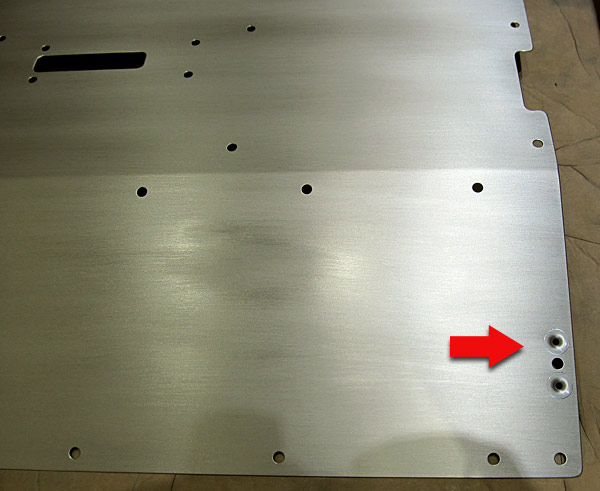 As per step one, on page 42-02, referencing figure one, I dimpled the nutplate holes in the (F-01440-R) right seat ramp in order to receive AN426AD3-3 rivets using 3/32" dimple dies set with our DRDT2 dimple machine. |
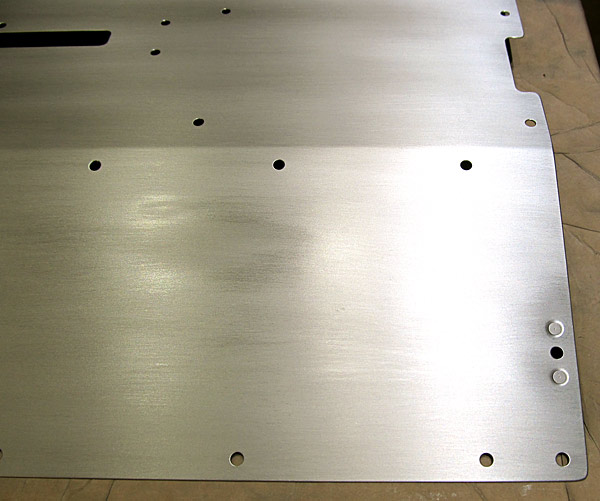 As per step one, on page 42-02, referencing figure one, I riveted the K1000-08D nutplates to the (F-01440-R) right seat ramp with AN426AD3-3 rivets using our hand squeezer. |
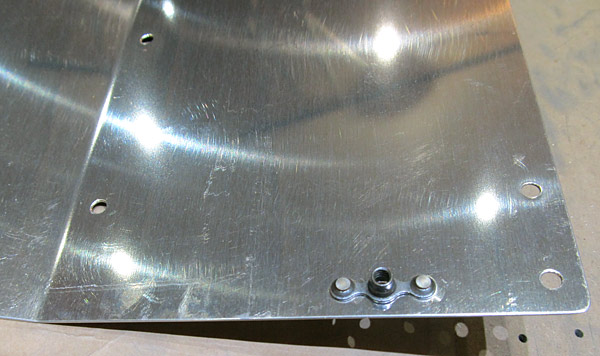 Here is the view of the riveted K1000-08D nutplate on the back side of the (F-01440-R) right seat ramp. |
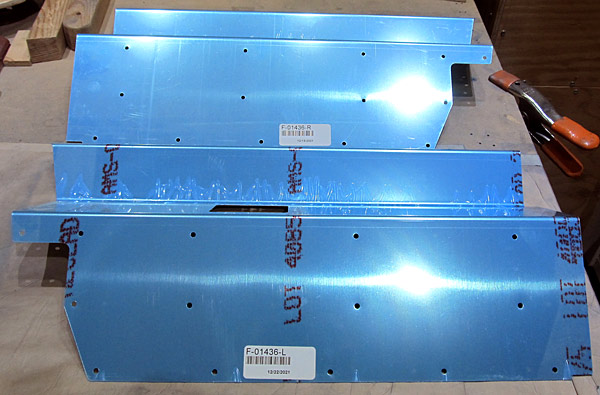 These are the (F-01436-L and F-01436-R) left and right control column covers. They are next for deburring. |
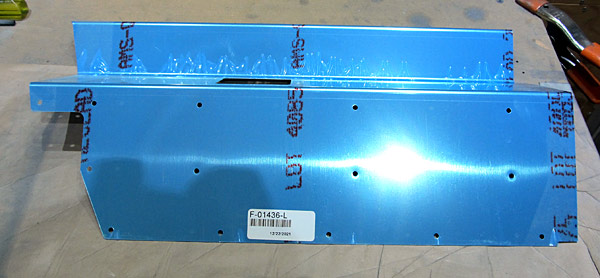 I am starting on the (F-01436-L) left control column cover. |
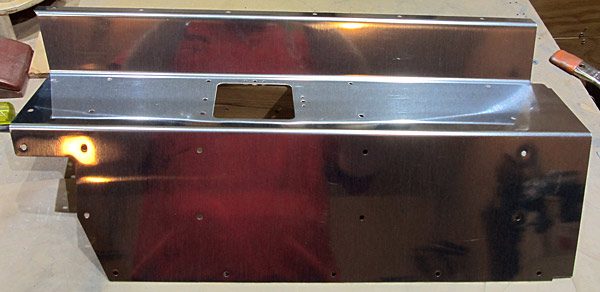 I deburred the edges and all of the holes in the (F-01436-L) control column cover using a file. |
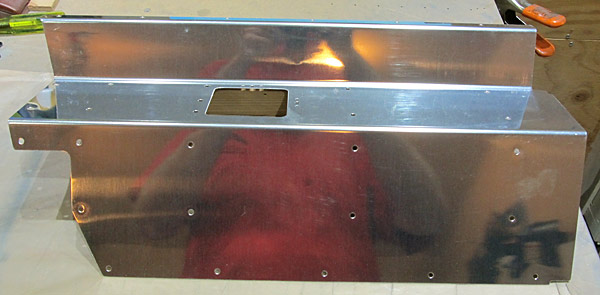 After the file work is done I like to polish the edges of the pieces with fine grit sandpaper. I usually start with 220 grit sandpaper and finish with 600 grit. |
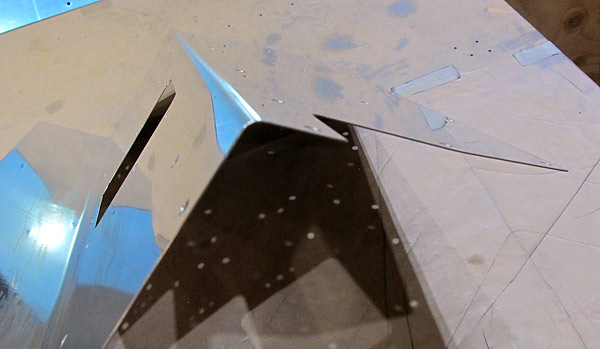 Nice! |
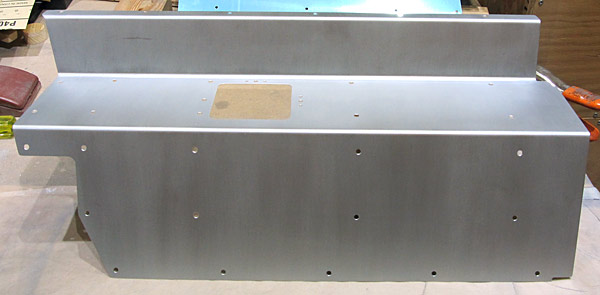 I scuffed the outer surface of the (F-01436-L) left control column cover with maroon and gray Scotch-Brite™ pads in preparation for painting. |
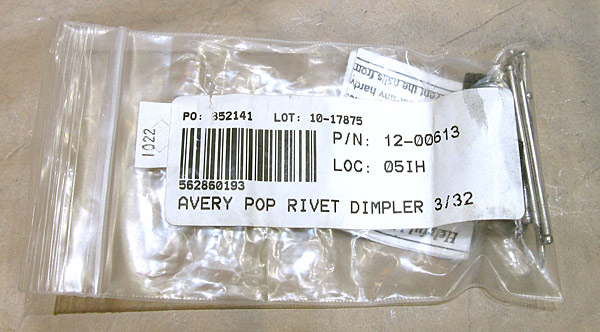 This is the part where I am a little embarassed about....there are four holes that need to be dimpled in order to install nutplates. The "throw" on our hand squeezer is 3 inches and it will not reach the two holes located at the back of the (F-01436-L) left control column cover because of the bend (almost 90°) in the piece and I can't get it into the opening to get at the holes.....what am I going to do? |
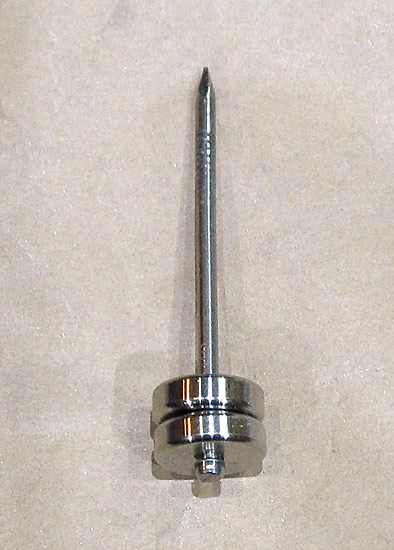 The Avery pop rivet dimpler has a male and female 3/32" dimple die set and uses a hardware nail (4D I think) as the mandrel that an ordinary pop rivet gun will use to make the dimple. |
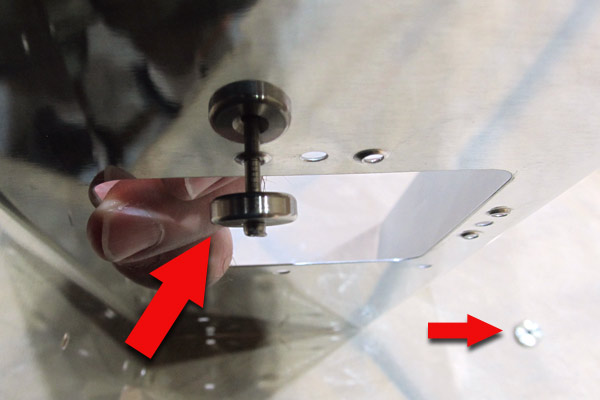 You just slip the female die and mandrel through the bottom of the metal that needs to be dimpled and the male dimple die will be placed over the mandrel on the opposite side. |
 Make sure everything is snug. |
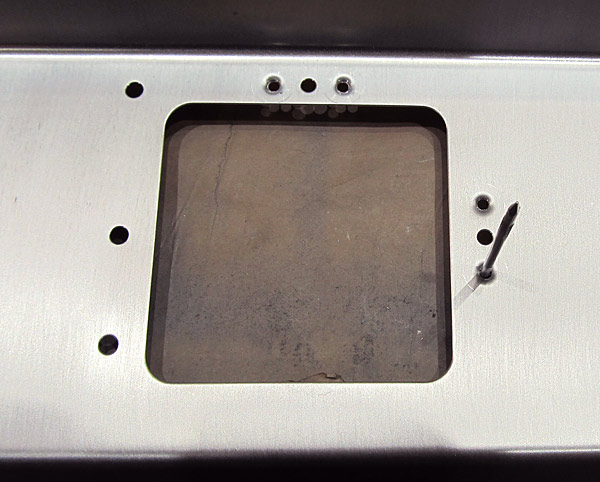 Now on the other side the male dimple die gets placed onto the nail mandrel. |
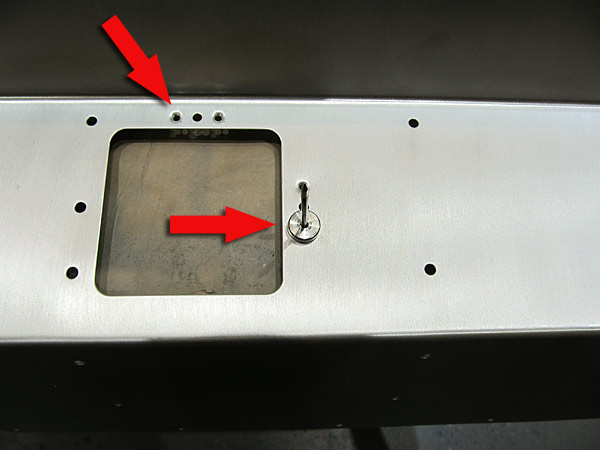 As you can see, the dimples turn out nice. |
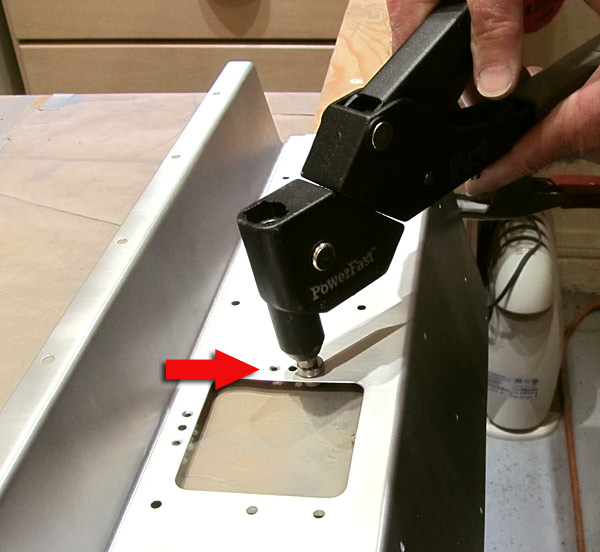 As per step five, on page 42-02, referencing figure three, I dimpled the four rivet holes on the (F-01436-L) left control column cover that will receive AN426AD3-3 rivets using the Avery 3/32" pop rivet gun dimple tool. |
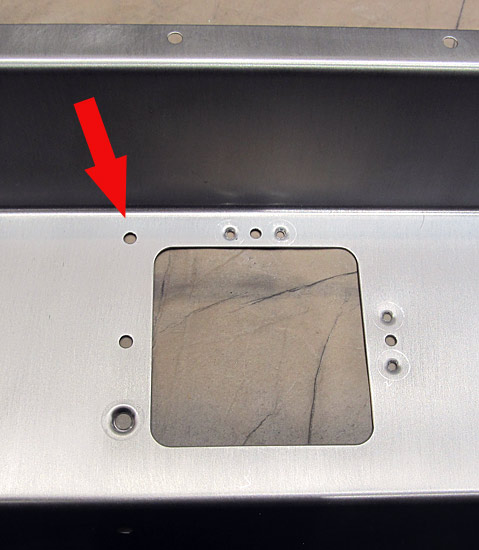 Now the next hurdle....how do I dimple the #8 screw holes? I don't have a #8 pop rivet gun dimple tool, (I still haven't figured it out that I have a 1.5" yoke for the hand squeezer) that will easily do the job. |
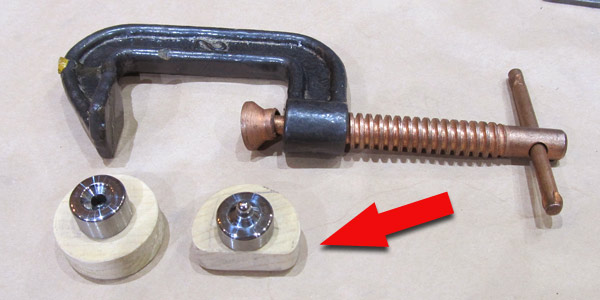 This is the apparatus that I constructed in order to dimple the #8 screw holes that are in the hard to reach areas of the (F-01436-L) left control column cover. |
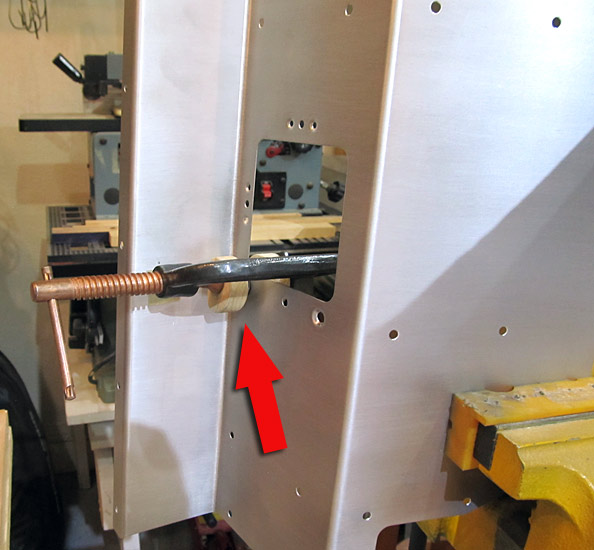 As per step five, on page 42-02, referencing figure three, I dimpled the remaining #8 screw hole on the (F-01436-L) left control coulmn cover with the "C" Clamp device. |
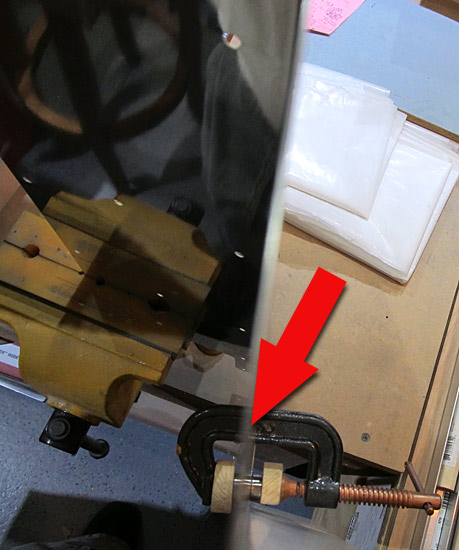 Here is what it looks like when viewing from above, you can also see why I made the one wood dimple die holder semi-circular because the edge does get a little close to the bend in the metal of the (F-01436-L) left control coulmn cover. |
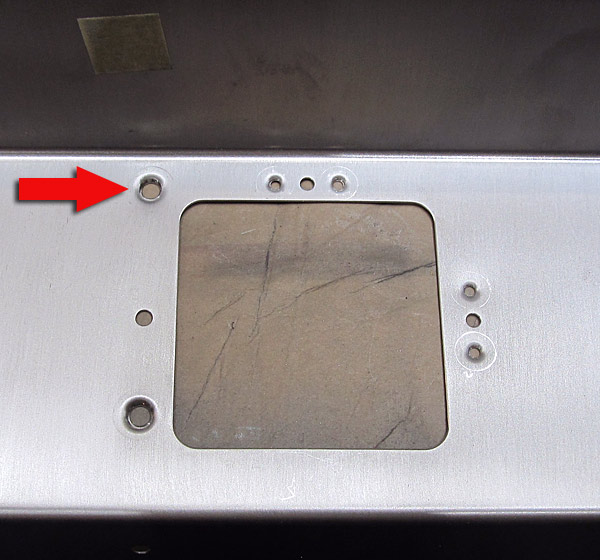 The "C" Clamp device did a nice job, the arrow points to the hole dimpled by the device and the hole at the bottom was done with our DRDT2 dimple machine. They are virtually the same in appearance! |
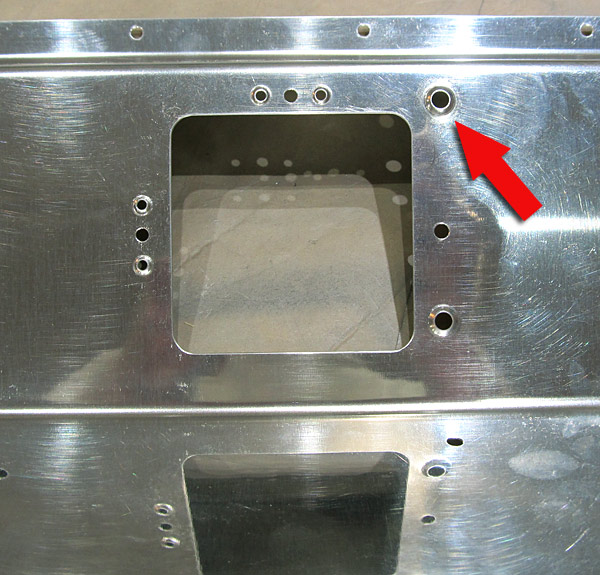 Here is what the "C" Clamp dimple looks like on the other side. |
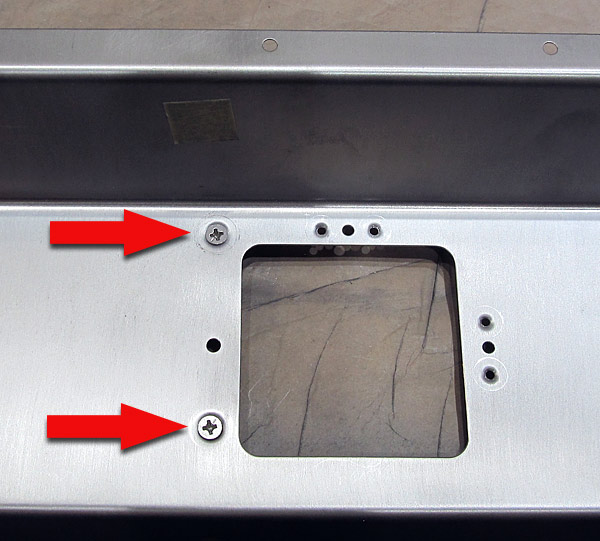 The #8 screws sit in the dimples nicely! |
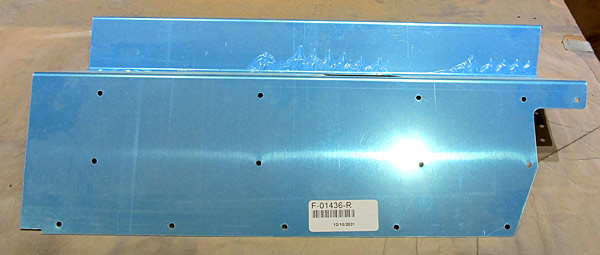 Now it's time to debur the edges on the (F-01436-R) right control column cover. |
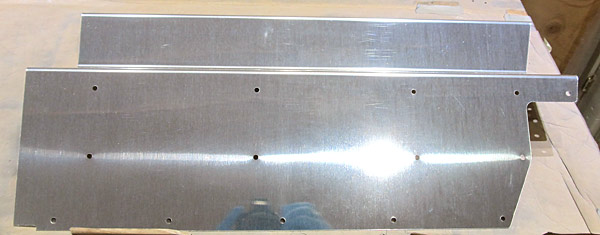 Back to the edge deburring.... |
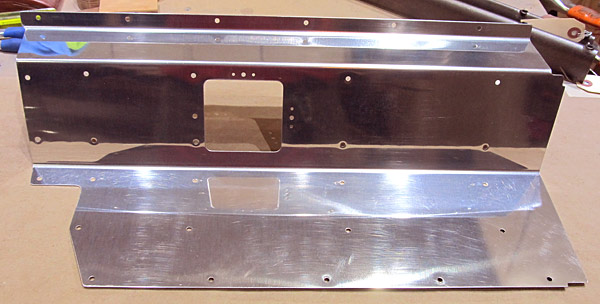 After the file work is done I like to polish the edges of the pieces with fine grit sandpaper. I usually start with 220 grit sandpaper and finish with 600 grit. |
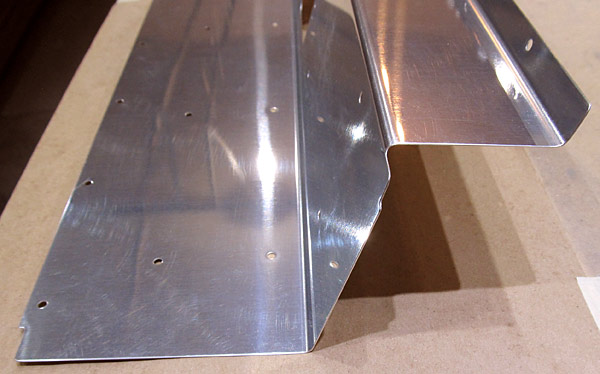 Nice! |
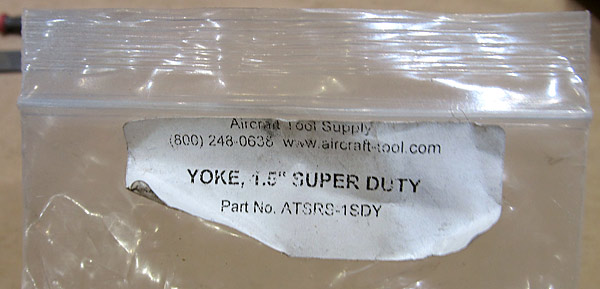 This is the 1.5" yoke for our hand held squeezer, I've had it for a long time but never needed to use it very much. |
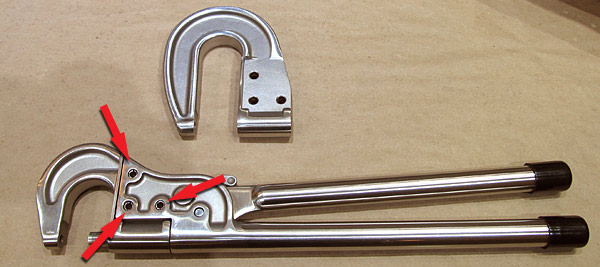 To change the yokes all you have to do is use a hammer and punch to remove the three roll pins and switch the yokes out. |
 The hand squeezer now has a 1.5" yoke installed! |
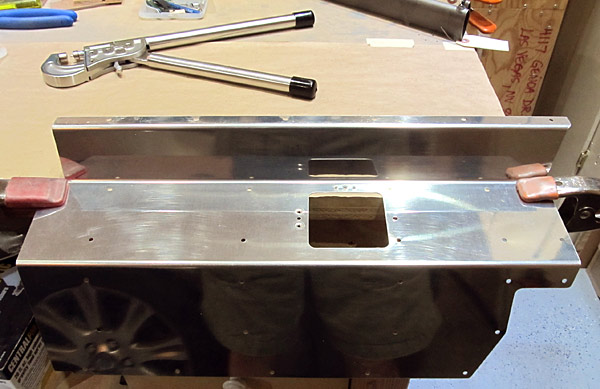 As per step five, on page 42-02, referencing figure three, I dimpled the nutplate holes in the (F-01436-R) right control column cover using our hand rivet squeezer equipped with a 1.5" yoke. |
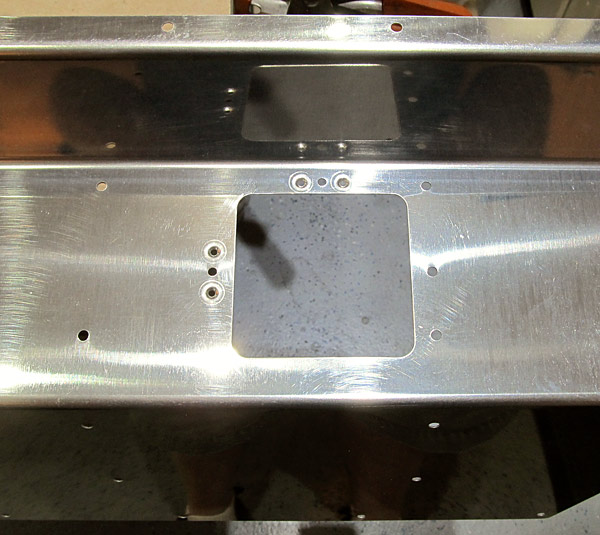 The dimpling process went a lot faster on this (F-01436-R) right control column cover because I changed over to the 1.5" yoke. There is plenty of room to get the yoke into the space through the rectangular opening. |
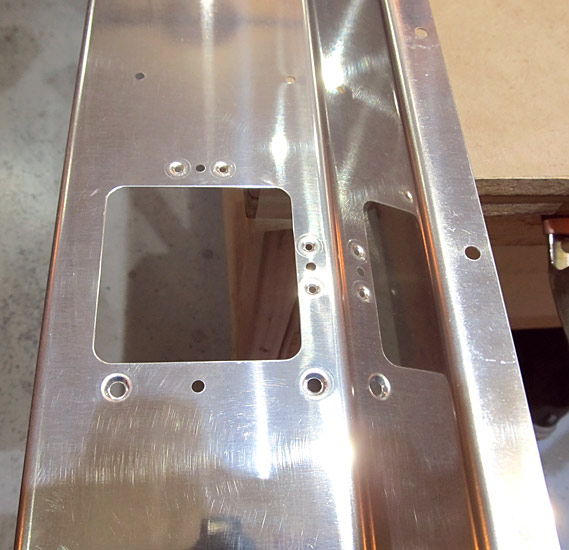 As per step five, on page 42-02, referencing figure three, I dimpled the #8 screw holes in the (F-01436-R) right control column cover using the hand rivet squeezer equipped with #8 screw dimple dies. |
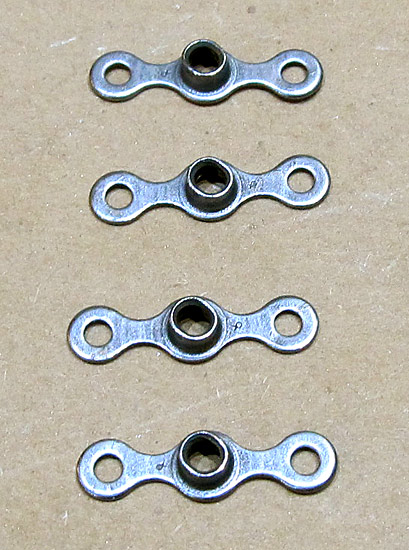 These four K1000-06 nutplates need to be dimpled. I will need to use a small diameter female 3/32" dimple die here because a regular sized one might be block by the center screw receiver post. |
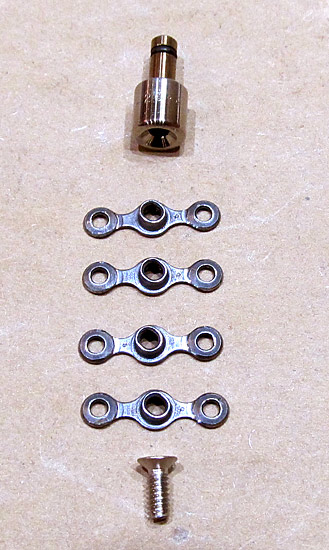 As per step five, on page 42-02, referencing figure three, the four K1000-06 nutplates were dimpled using our DRDT2 dimple machine equipped with one 3/32" male substructure dimple die set and one 3/32" small diameter female dimple die set. |
 As per step six, on page 42-02, referencing figure three, the K1000-06 nutplates were riveted to the (F-01436-L and F-01436-R) left and right control column covers with AN426AD3-3 rivets using our hand rivet squeezer. |
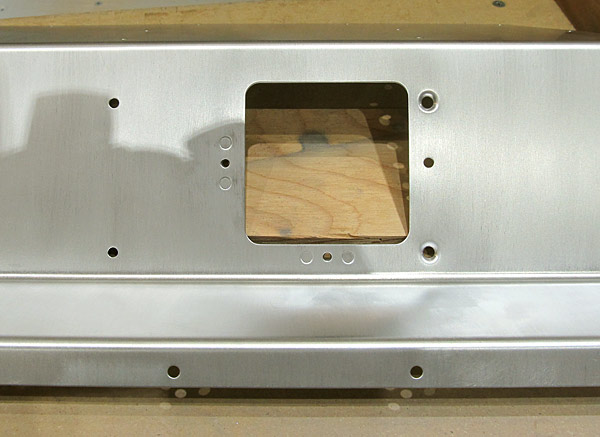 I scuffed the (F-01436-R) right control column cover with maroon and gray Scotch-Brite™ pads in preparation for painting. |
 Here is a better picture of the scuffed (F-01436-R) right control column cover. Usually I do a quick wash of acetone to clean up the fine dust particles after the scuffing process. Later, just before painting, the piece will get a soap and water washing and degreased. |
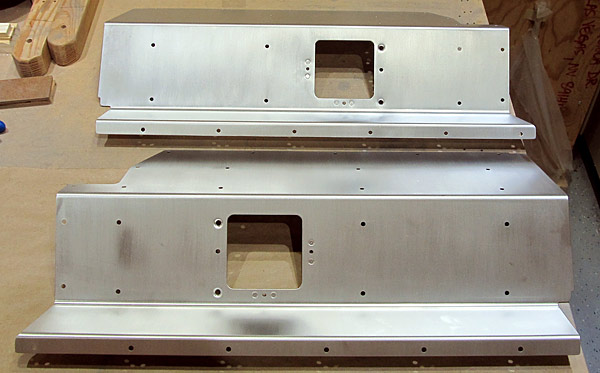 Both of the (F-01436-L and F-01436-R) left and right control column covers have been scuffed. |
 The (F-01452) aft tunnel cover is next in line for deburring. |
 I deburred the edges and all of the holes of the (F-01452) aft tunnel cover. |
 The edges of the (F-01452) aft tunnel cover were sanded and polished with various grits of sandpaper, starting with 220 grit and ending with 600 grit....I know, lots of extra work... |
 I scuffed the (F-01452) aft tunnel cover with maroon and gray Scotch-Brite™ pads in preparation for painting. |
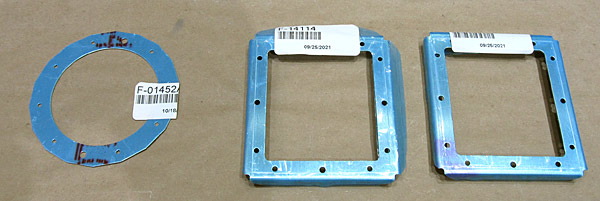 There are three small pieces that will be riveted in place on the different panels, the two (F-14114) control stick doublers, and the (F-01452A) aft tunnel cover doubler. |
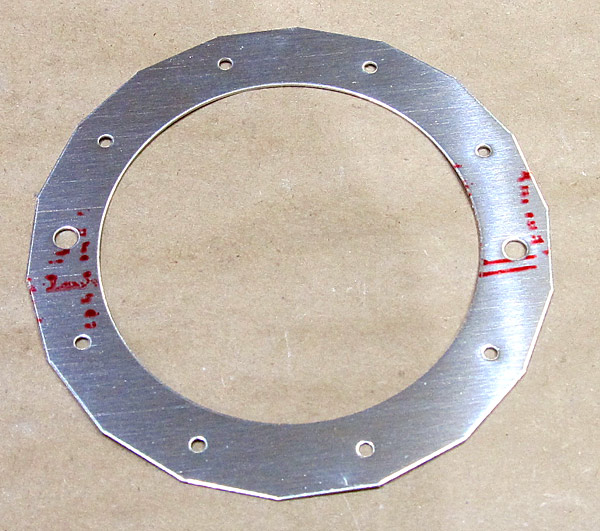 This is the (F-01452A) aft tunnel cover doubler. |
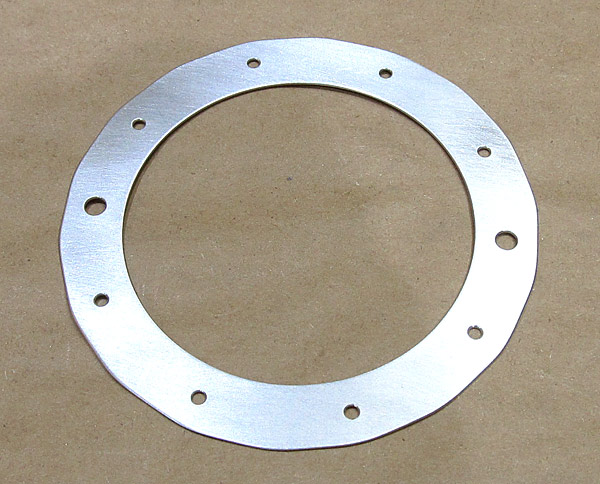 I deburred the edges and all of the holes of the (F-01452A) aft tunnel cover doubler and scuffed all of the surfaces with maroon and gray Scotch-Brite™ pads in preparation for painting. |
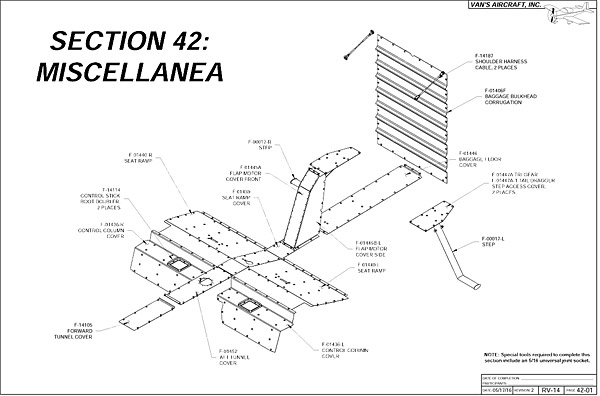 I just wanted to recap that I am in Section 42 called Miscellanea which is basically all of the access covers in the interior of the aircraft cabin plus the outside steps. |
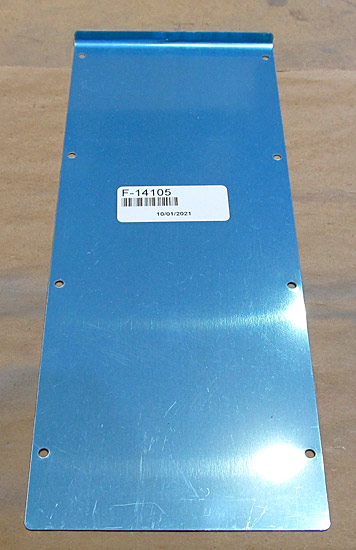 This is the (F-14105) forward tunnel cover. I start out with a file and debur the edges. |
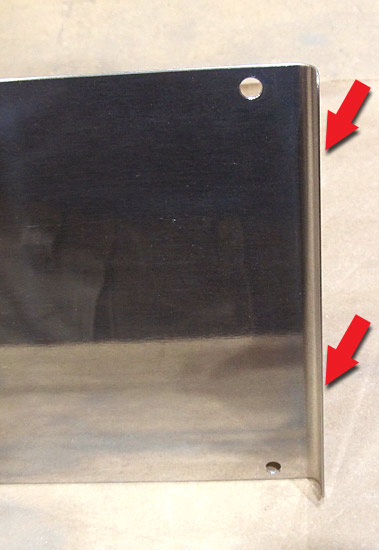 After I debur the edges I like to "polish" them with fine grit sandpaper. |
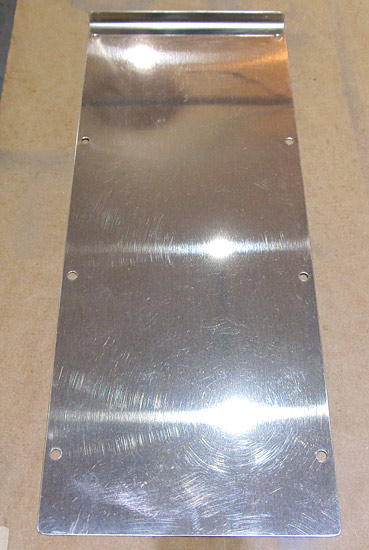 All of the holes are deburred in the (F-14105) forward tunnel cover. |
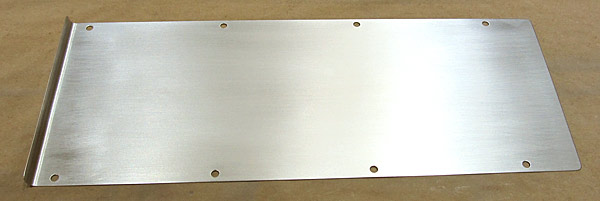 I scuffed the outer surface of the (F-14105) foward tunnel cover with maroon Scotch-Brite™ pads in preparation for priming. |
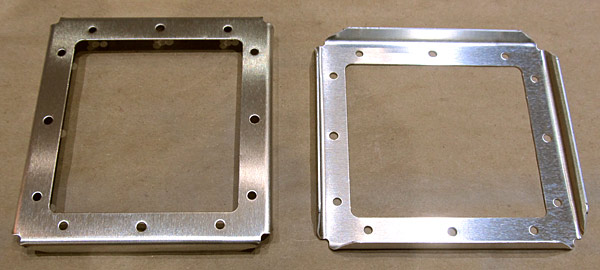 These are the two (F-14114) control stick boot doublers. |
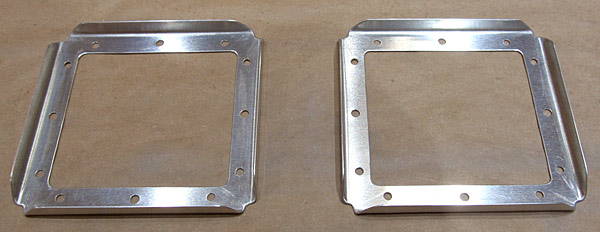 The deburring process begins again starting with deburring the edges with a small file and all of the holes were deburred. |
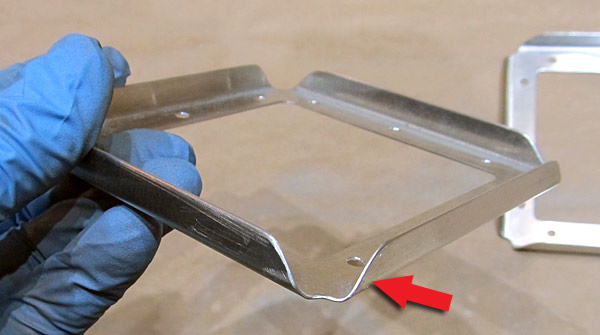 After deburring the edges and deburring all of the holes of the (F-14114) control stick boot doublers I polished the edges with fine grit sandpaper. |
 The surfaces of the two (F-14114) control stick boot doublers were scuffed with maroon Scotch-Brite™ pads in preparation for priming. |
 As per step one, on page 42-07, and referencing figure one, the instructions mention that the holes in the (F-14114) control stick boot doublers need to be dimpled on the bottom sides so that the stick boots (not included in the kit) can be attached with AACQ 4-3 rivets (also not included in the kit). The question is, which holes need to be dimpled? I set up the (F-01436-L and F-01436-R) left and right control column covers onto the bench and then placed the two (F-14114) control stick boot doublers into position to figure this out. |
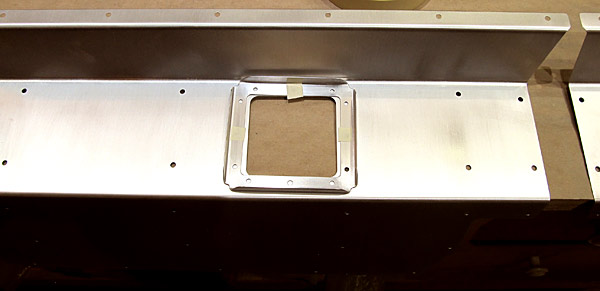 Remember that in step six, on page 42-02, and referencing figure three, nutplates were installed onto the (F-01436-L and F-01436-R) left and right control column covers so these holes had to remain open. Knowing that the (F-14114) control stick boot doublers were held in place by three MS35206-228 screws and these three holes had to remain open, placing the control stick boot doublers in the proper orientation is important. |
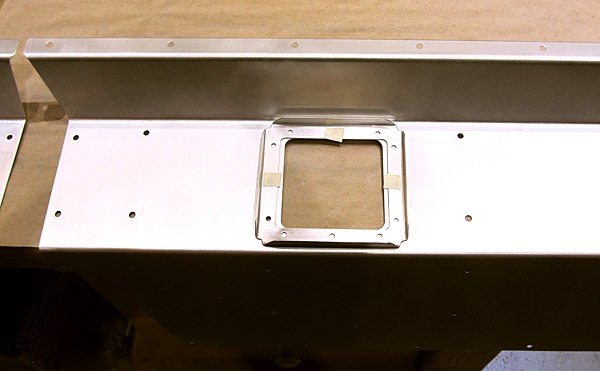 This is the left control column cover. |
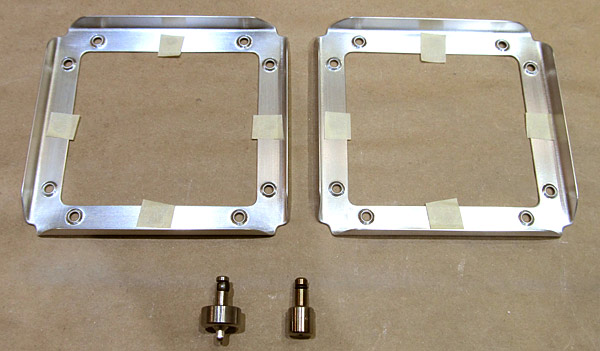 As per step one, on page 42-07, referencing figure one, the two (F-14114) control stick boot doublers were dimpled in the appropriate holes, and from the bottom side, in order to receive (AACQ 4-3) rivets. |
 I primed the (F-01452A) aft tunnel cover doubler and the two (F-14114) control stick boot doublers with SPI (Southern Polyurethanes, Inc) 6610-4 gray epoxy primer. |
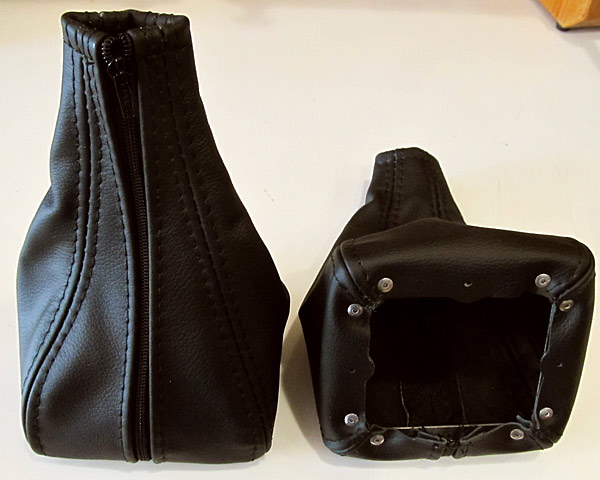 I ordered stick covers from Classic Aero Designs, located in Albany, Oregon and ironically if I had known that their stick covers came with the (F-14114) control stick boot doublers already attached, I would not have had to do all of the previous work on the stick boot doublers that came with the kit from Van's Aircraft. |
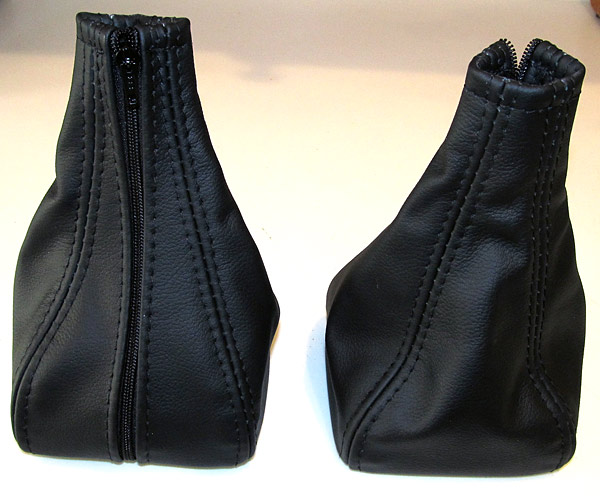 These stick covers are really nice and they are made of FAA approved leather. These are Orion/Raven colored, but you can order different colors from them. |
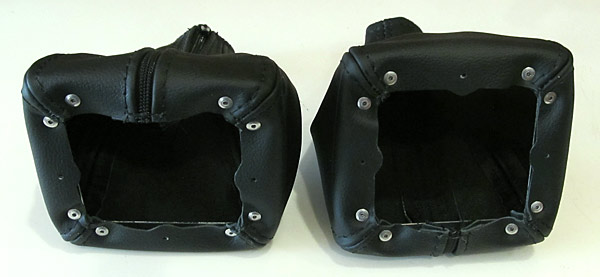 You can see the AACQ 4-3 rivets that hold the leather to the (F-14114) control stick boot doublers. |
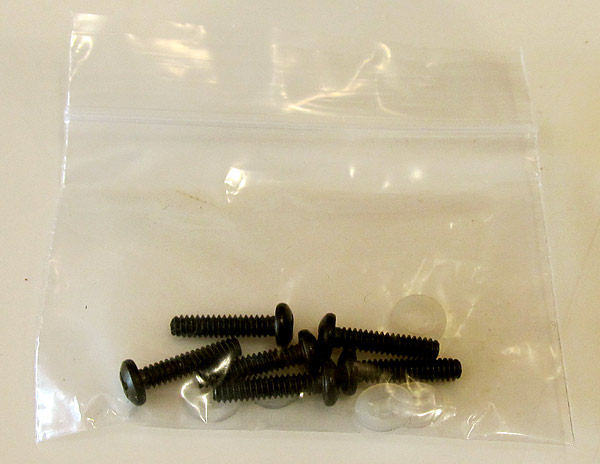 The MS35206-228 screws are included with the stick covers. |
 I painted the two (F-14114) control stick boot doublers and the (F-01452A) aft tunnel cover with Krylon Cover Maxx gloss black paint. |
 As per step one, on page 42-03 of the builder's manual and referencing figure one, I riveted the (F-01452A) aft tunnel cover doubler to the (F-01452) aft tunnel cover setting AN470AD3-3 rivets with our hand held squeezer. |

|
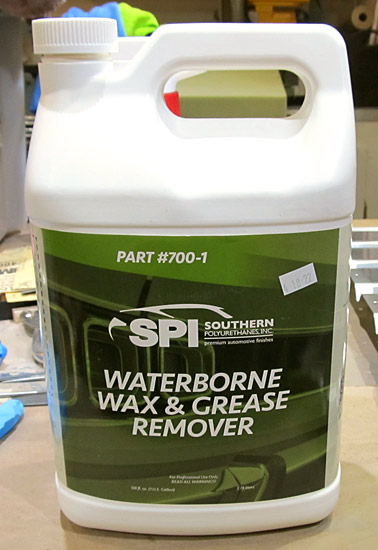 When I clean the bare metal parts in preparation for priming, I usually clean them with soap and water first and then use this SPI (Southern Polyurethanes, Inc.) waterborne wax and grease remover. |
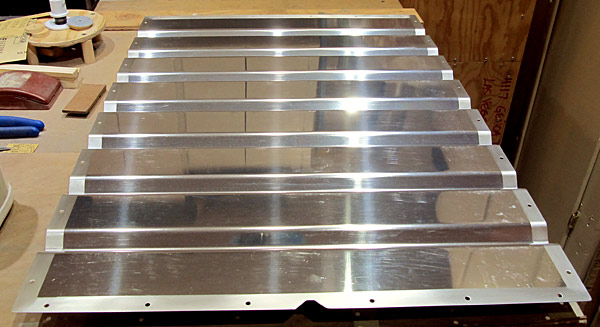 I cleaned and degreased the (F-01406F) baggage bulkhead corrugation with the SPI waterborne wax and grease remover in preparation for priming. |
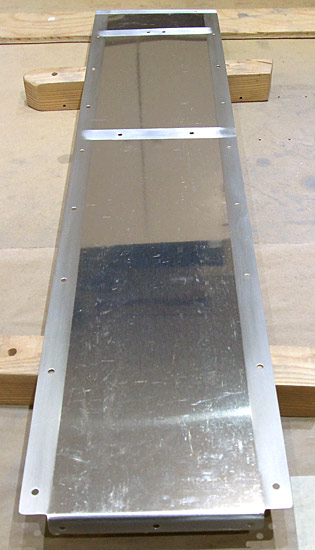 I cleaned and degreased the (F-01446) baggage floor cover with the SPI waterborne wax and grease remover in preparation for priming. |
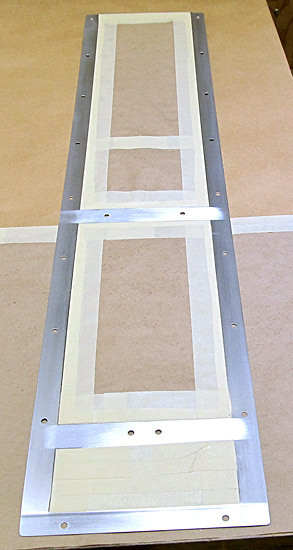 I masked the centers of the (F-01446) baggage floor cover and also the (F-01406F) baggage bulkhead corrugation, in order to expose the edges, in preparation for priming. |
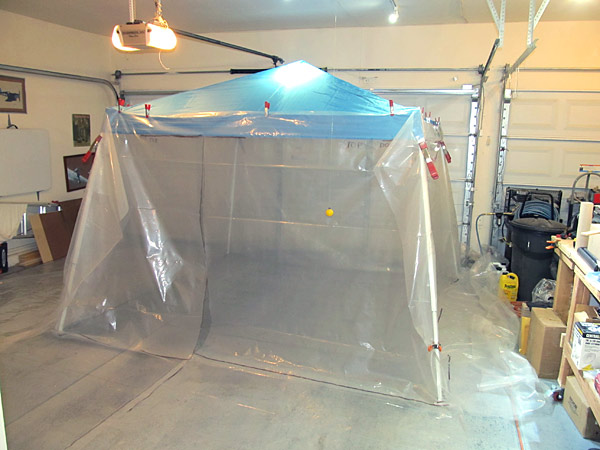 This is my large paint booth that I use in the garage to paint some of the medium sized parts. |
 I clamp 6 mil plastic sheeting, that I bought from Home Depot, to cover the sides and bottoms in order to contain the overspray of paint. |
 When I am done using the paint booth, I fold it up and it is stored in the wheeled storage bag that was included in the pop-up canopy kit. |
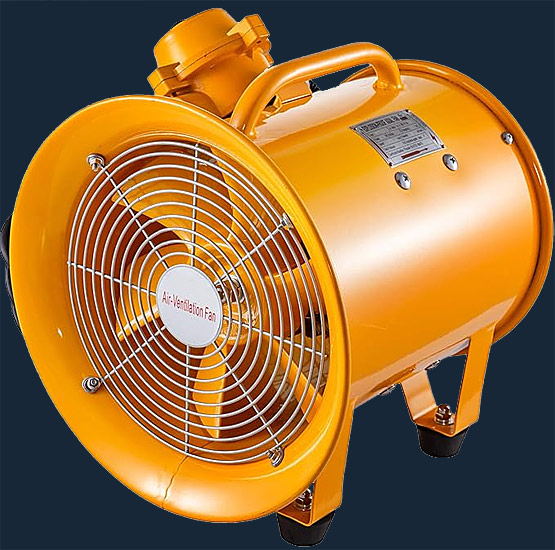 To exhaust the booth when I am painting, I use a Vevor 12 inch explosion proof fan. |
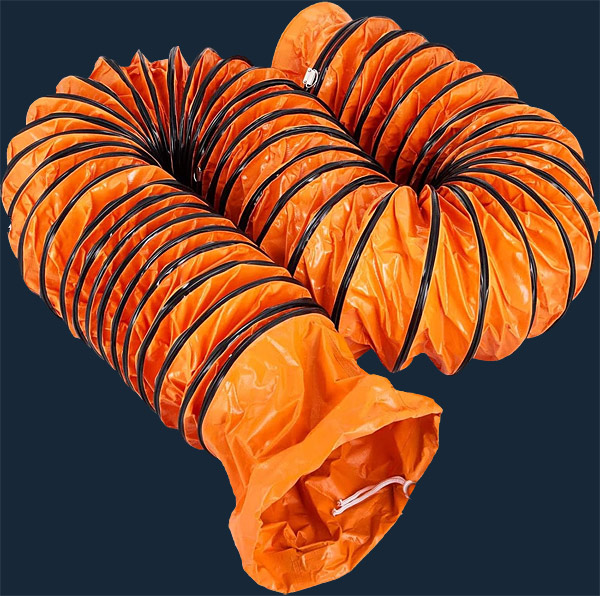 This is the 12 inch x 25 foot Vevor PVC flexible duct hosing that I am using to vent between the paint booth and the exhaust fan. |
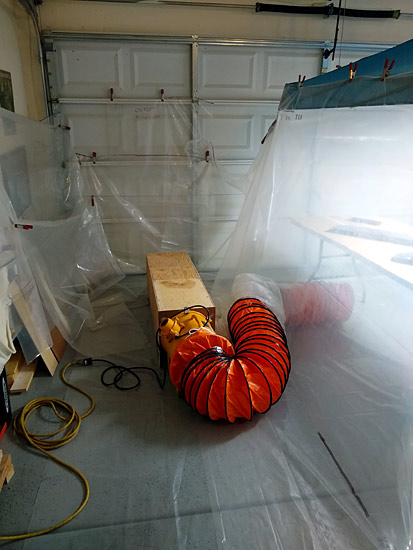 Here you can see the exhaust set up... |
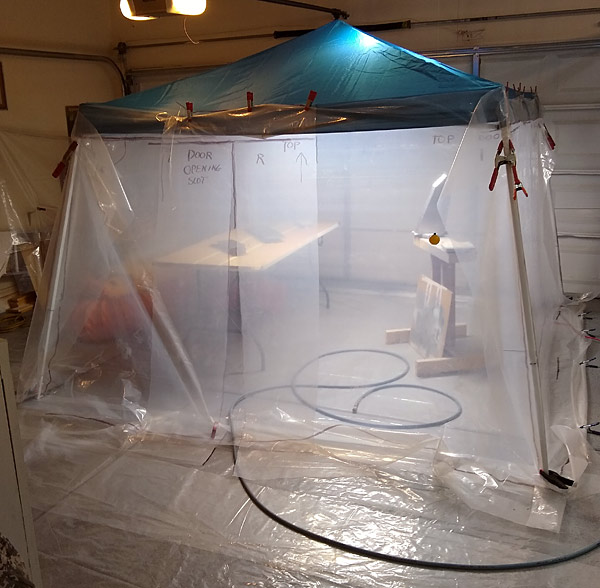 Here is the booth in use, I use a light unit from Harbor Freight to light the booth. |
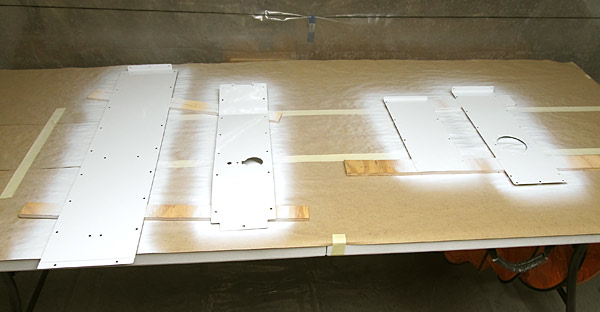 I primed the following parts with SPI (Southern Polyurethanes, Inc.) 6610-4 gray epoxy primer: |
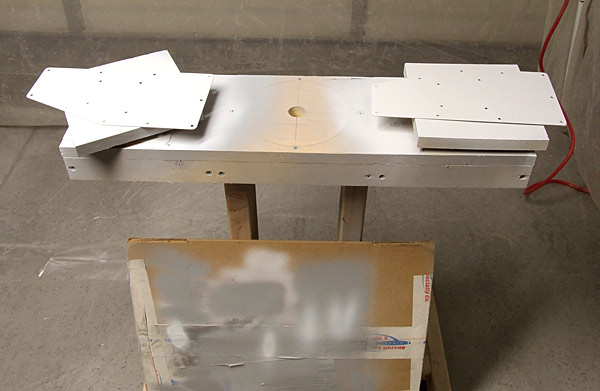 (F-01406F) front side of baggage bulkhead corrugation |
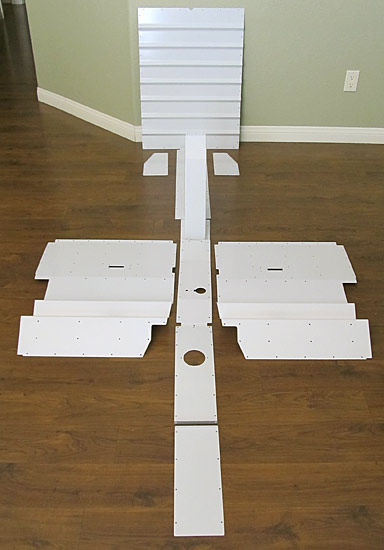 All of the parts were sanded and scuffed before painting with Stewart Systems Ekocrylic waterborne E5301 smoke gray. |
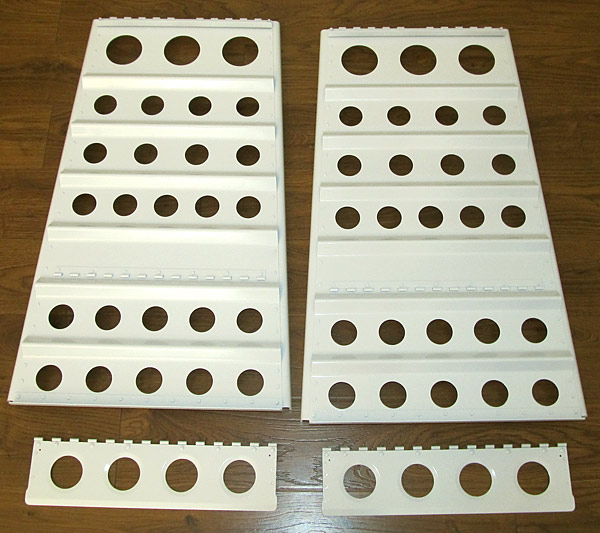 The seat back brace assemblies and the seatback assemblies were painted with Stewart Systems waterborne Ekocrylic E5301 smoke gray paint. |
 The (F-00017-L and F-00017-R) left and right steps are made of 4130 chromium molybdenum alloy steel. They are very hard and strong but the texture is grainy and rough. I want to sand and smooth them out in preparation for painting. I am using silicon carbide sandpaper so that I do not get dissimilar metal contamination. I am starting out with 150 grit sandpaper. |
 I sanded the (F-00017-L) left step first, starting out with 150 grit silicon carbide sandpaper and working up through the grits to at least 400 grit so that when I apply the primer and topcoat paints I'll get a super smooth finish....the idea is not to have to use any heavy fillers as well. I also fashioned a heavy copper wire rod to hold the step and manuever it as I paint it in the paint booth. |
 Now to sand the (F-00017-R) right step. |
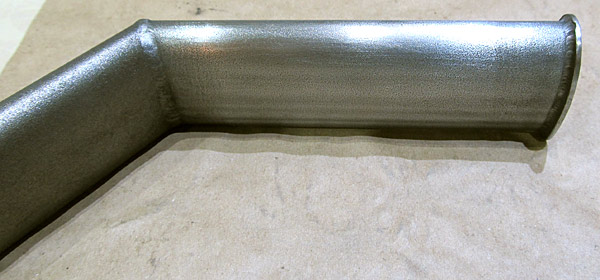 If you look closely, you can see the textured surface of the step, I still need to get this one a little smoother for painting. |
 I finished sanding the (F-00017-R) right step. Now it is time to clean the steps with soap and water and then wax and degrease them with the degreaser. |
 I washed and degreased the two steps with SPI (Southern Polyurethanes, Inc.) 700-1 waterborne wax and grease remover. |
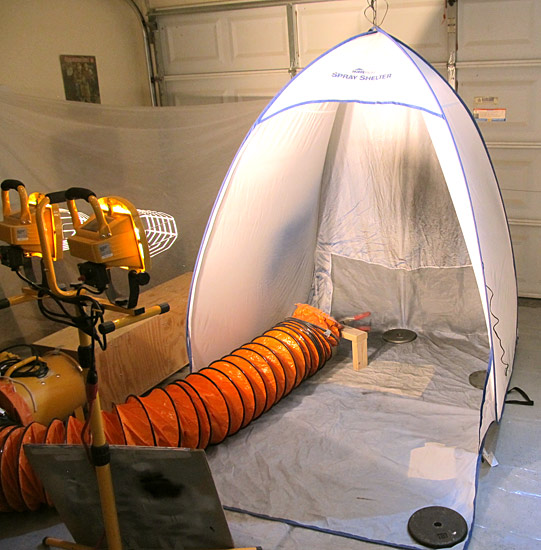 I am priming the (F-00017-L and F-00017-R) left and right steps with SPI (Southern Polyurethanes, Inc.) 6610-4 gray epoxy primer. |
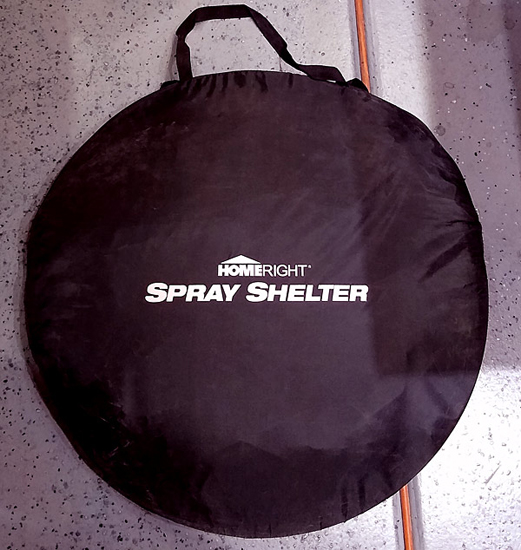 This spray booth folds up into a small carrying bag when not in use. |
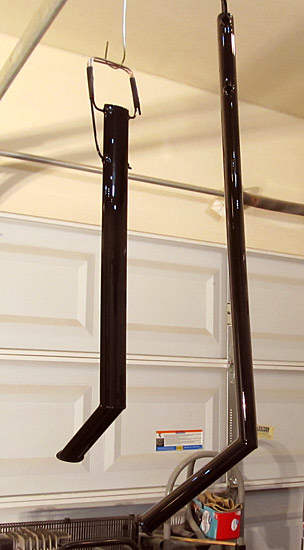 I painted the (F-00017-L and F-00017-R) left and right steps with UTECH 500 gloss black paint. |
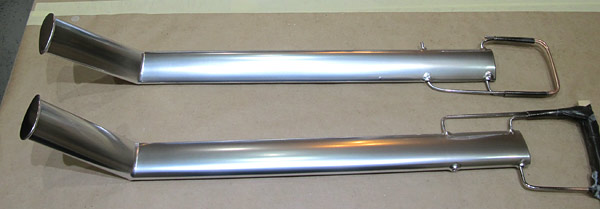 I painted the (F-00017-L and F-00017-R) left and right steps with Alclad ALC 107 chrome. |
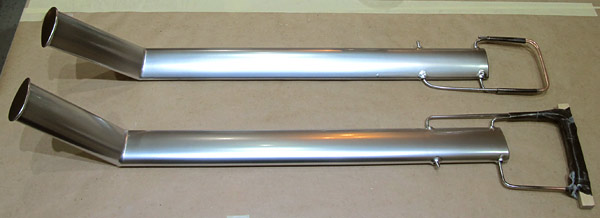 In order to protect the finish I painted the (F-00017-L and F-00017-R) left and right steps with three coats of Alclad ALC 310 clear lacquer at 22 psi. |
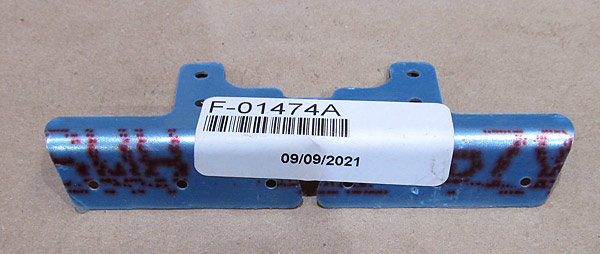 As per step one, on page 38-04, referencing figure one, the (F-01474A-L and F-01474A-R) left and right stiffener angles need to be dimpled to accept (AN426AD3-4) rivets. |
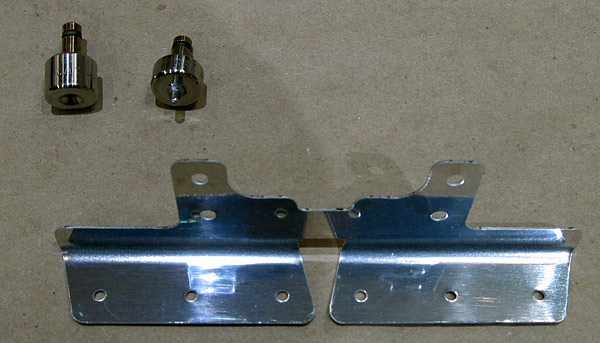 I am using 3/32" dimple dies and our DRDT2 dimple machine to dimple the stiffeners. |
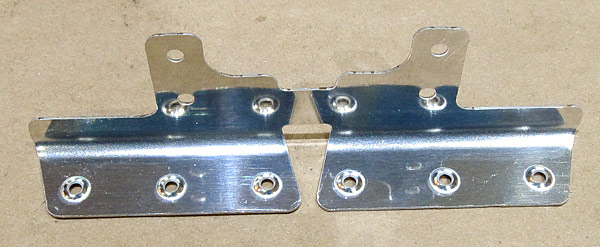 *Make sure to reference figure one on page 38-04 so that the correct side of the (F-01474A-L and F-01474A-R) stiffener angles are dimpled. |
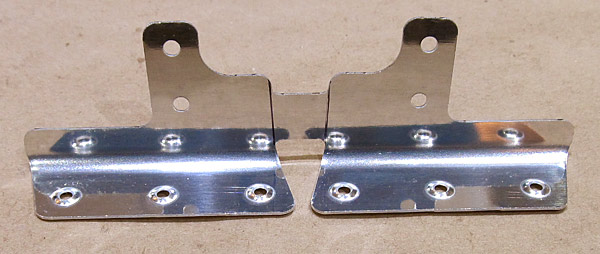 I drew layout lines onto the (F-01474A-L and F-01474A-R) stiffener angles because in step two, on page 38-04, figure one, they need to be separated into two parts. |
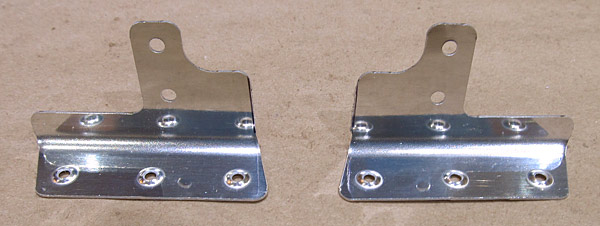 I used a bandsaw to separate the (F-01474A-L and F-01474A-R) stiffener angles. |
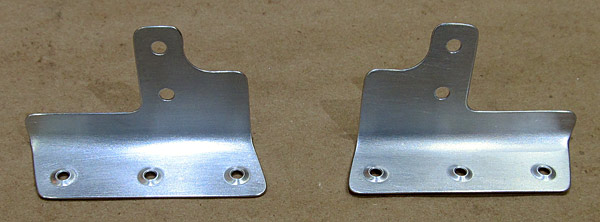 All of the holes and edges of the (F-01474A-L and F-01474A-R) left and right stiffener angles were deburred and the surfaces were scuffed with a maroon Scotch-Brite™ pad in preparation for painting. |
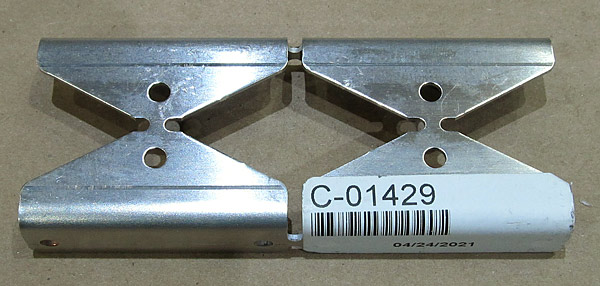 The (C-01429) latch bellcrank angles need to be separated next... |
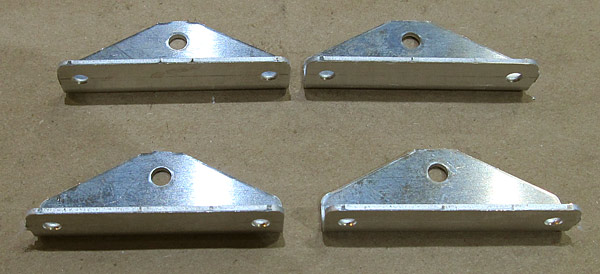 As per step ten, on page 38-04, figure three, I separated the (C-01429) latch bellcrank angles into four parts using our bandsaw. |
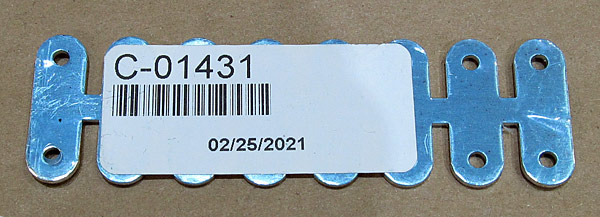 The (C-01431) latch links need to be separated. |
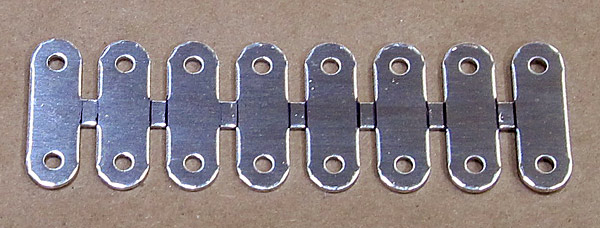 I drew layout lines onto the (C-01431) latch links to guide the cutting process on the bandsaw. |
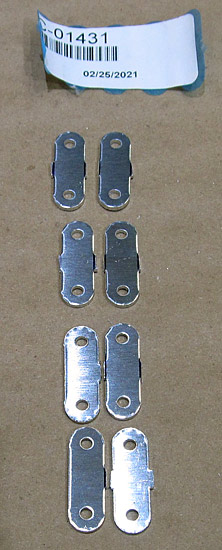 As per step eleven, on page 38-04, figure four, I separated the (C-01431) latch links into eight parts using our bandsaw. |
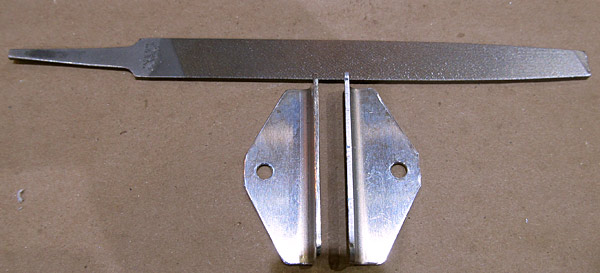 I am deburring the edges and holes of the (C-01429) latch bellcrank angles. I always start out with a small file and then finish off with sandpaper. |
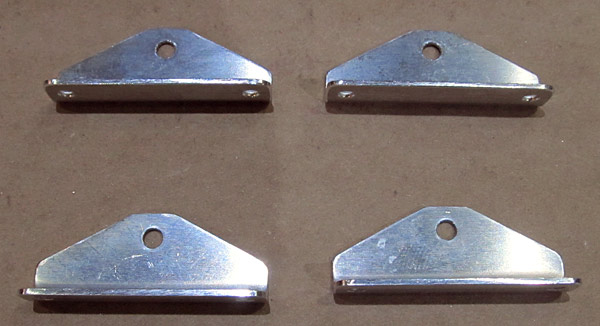 The edges of the four (C-01429) latch bellcrank angles that were separated in step ten, on page 38-04, figure three, and the holes, were deburred. |
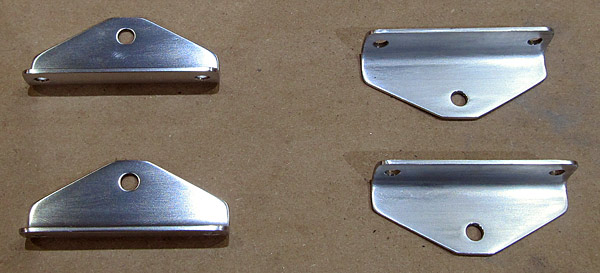 I am going to polish these four (C-01429) latch bellcrank angles because they will be visible in the cockpit area so it is going to start with sanding them smooth with fine grit sandpaper. |
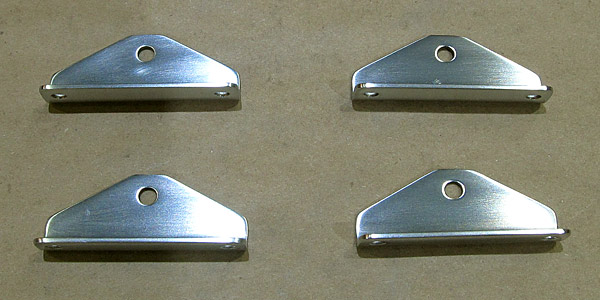 The sanding process starts out with 320 grit sandpaper and continues up to 15000 grit sandpaper. |
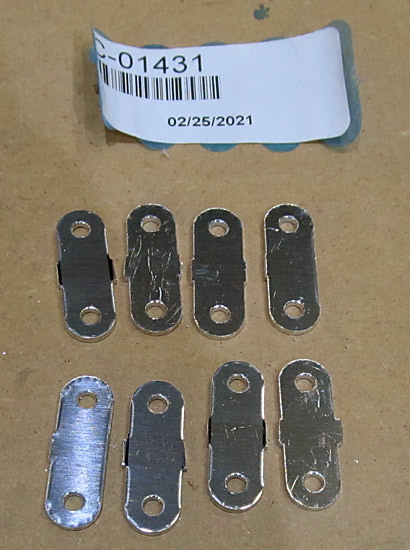 The eight (C-01431) latch links are small so getting them ready to polish will be a challenge. I first start out with the small file to debur the edges and debur the holes. |
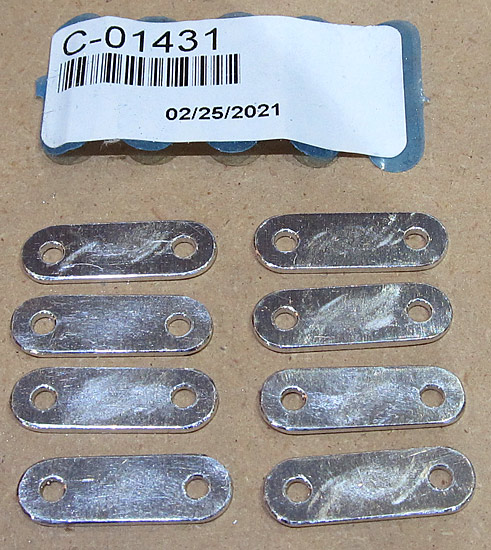 The edges of the eight (C-01431) latch links have been deburred and sanded, and now comes the tedious task of polishing them. |
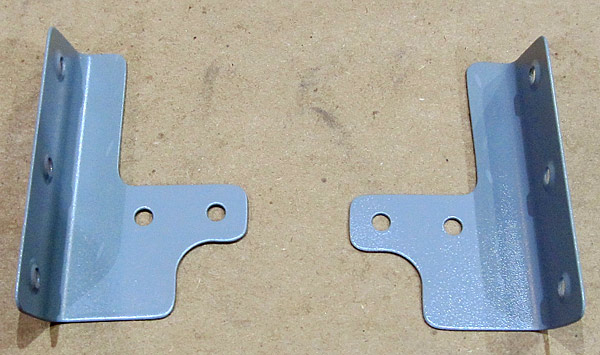 I primed the (F-01474A-L and F-01474A-R) left and right stiffener angles with SPI 6610-4 gray epoxy primer. |
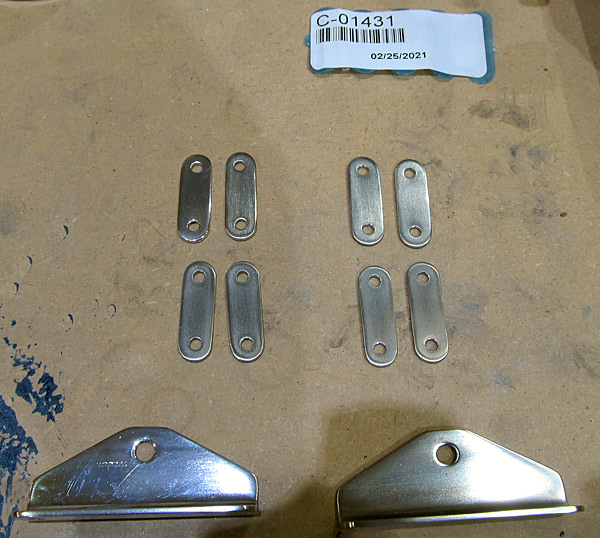 The eight (C-01431) latch links that were separated in step eleven, on page 38-04, figure four, are in the sanding phase of being polished. |
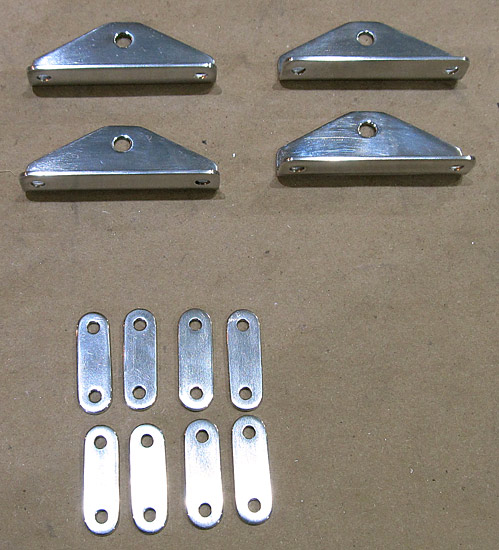 The top four (C-01429) latch bellcrank angles have had some polishing done on the buffing wheel. |
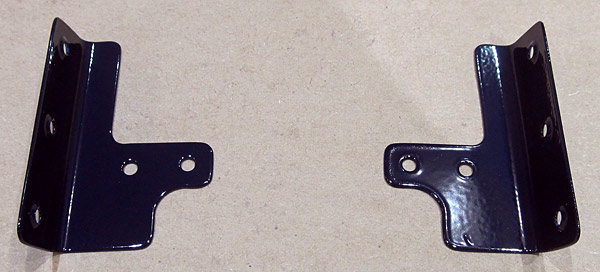 I painted the two (F-01474A-L and F-01474A-R) stiffener angles with Stewart Systems Ekocrylic E5465 Royal Blue, which is the same color that the roll bar assembly is painted. |
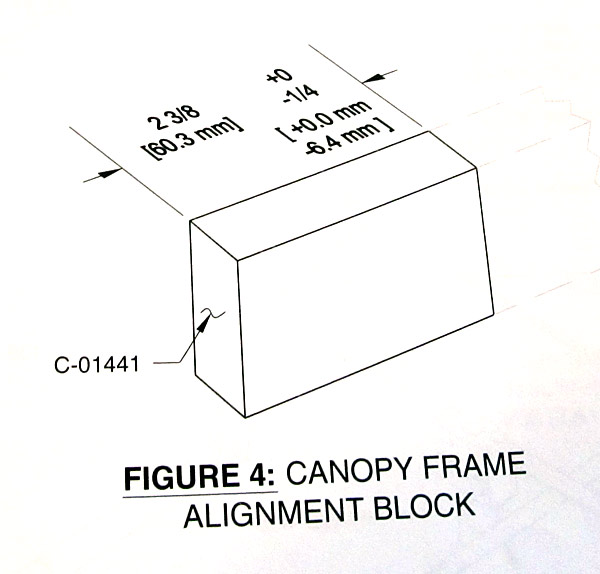 Since I had the miter saw out working on another project I thought I would jump ahead to step six, on page 38-19, figure four and fabricate the four (C-01441) canopy frame alignment blocks. |
 The (C-01441) canopy alignment blocks are cut out from one piece of wood supplied in the kit. This is what it looks like before cutting the blocks. |
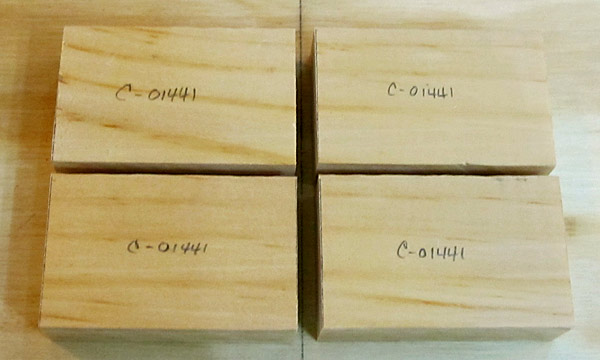 Four (C-01441) canopy frame alignment blocks! |
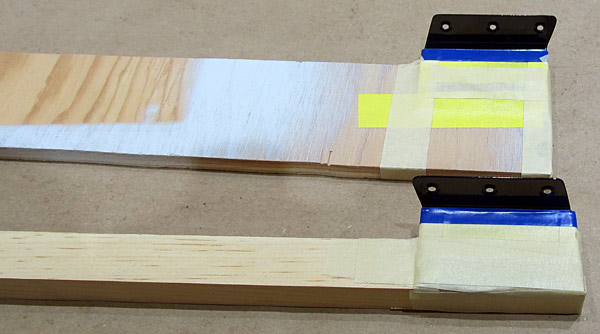 The (F-01474A-L and F-01474A-R) left and right stiffener angles are positioned at the base of the roll bar assembly so part of the stiffener angle is painted royal blue, to match the roll bar color, and the other half of the stiffener angle is riveted onto the aft fuselage top side skins, which is smoke gray. |
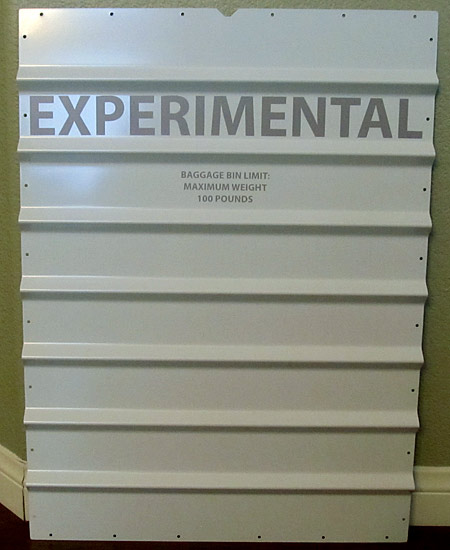 I applied the required "Experimental" placard to the (F-01406F) baggage bulkhead corrugation. |
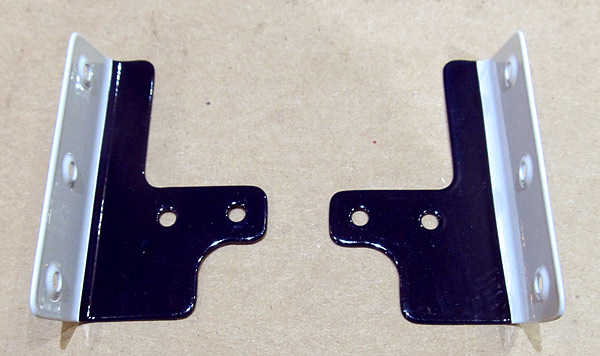 The second half of the two (F-01474A-L and F-01474A-R) left and right stiffener angles were painted with Stewart Systems E5301 Ekocrylic smoke gray paint. |
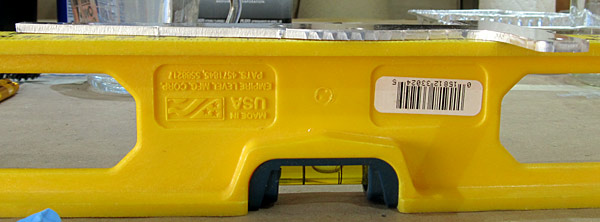 As per step one, on page 38-05, I checked the flatness of the (C-607) latch handle. |
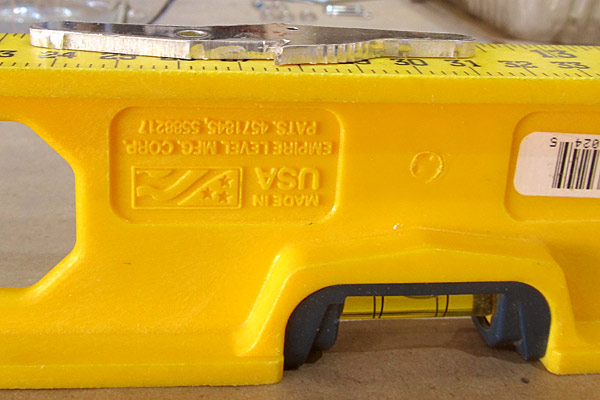 As per step one, on page 38-05, I checked the flatness of the (C-609) canopy latch. |
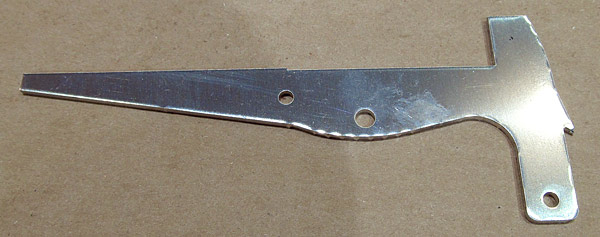 As per step two, on page 38-05, figure one, I am deburring the edges of the (C-607) latch handle. |
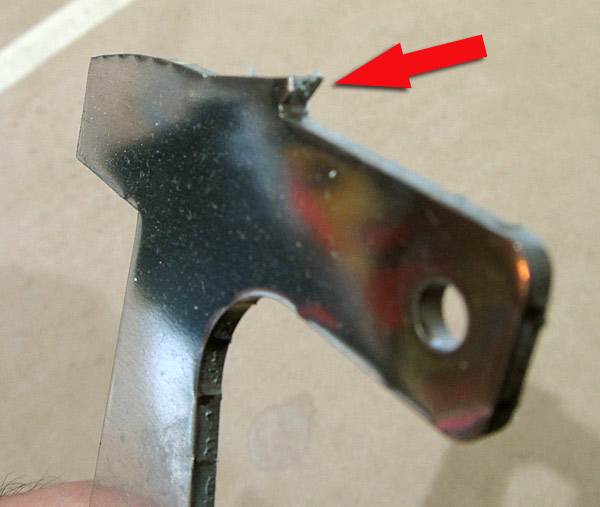 This (C-607) latch handle had a small chip in the catch; I was able to file it flat and was a little worried if the mechanism would function correctly but thankfully everything functions well! |
 The (C-609) canopy latch is next for deburring. The edges on this is just as rough as the latch handle is.... |
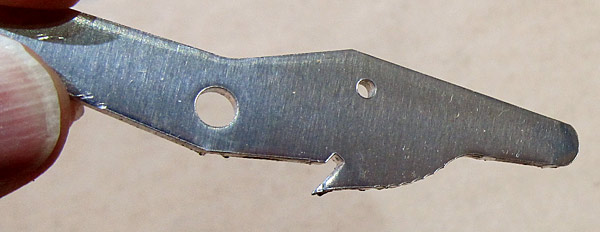 *Don't forget to inspect the notch on the (C-609) canopy latch, mine had a small chip in the notch also. |
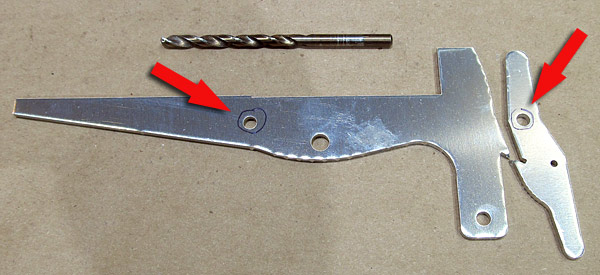 As per step three, on page 38-05, figure one, there are two holes on the (C-607 and C-609) latch handle and canopy latch that need to be final drilled #12 size. The photograph shows these holes circled with a sharpie pen. |
 Back to deburring the edges on the (C-607) latch handle.... |
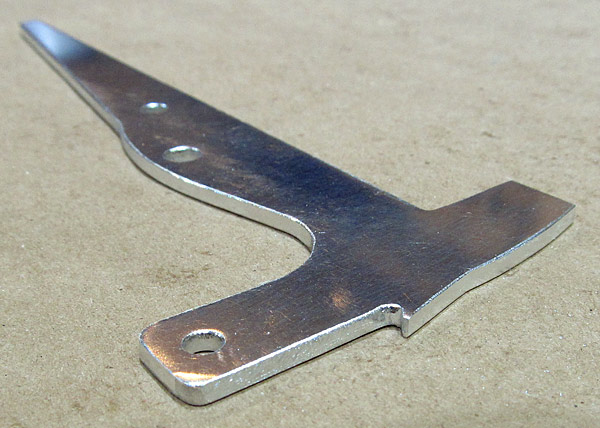 I deburred the edges of the (C-607) latch handle and am now starting to sand them smooth. |
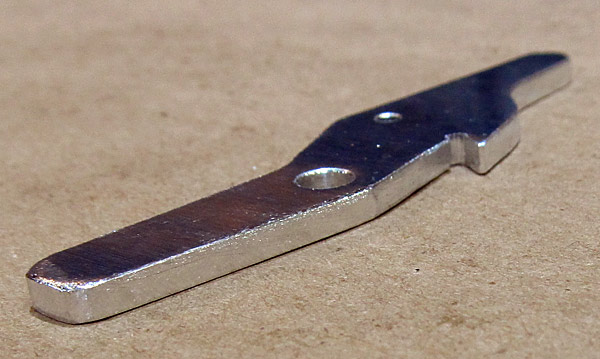 The edges and the holes have been deburred on the (C-609) canopy latch. |
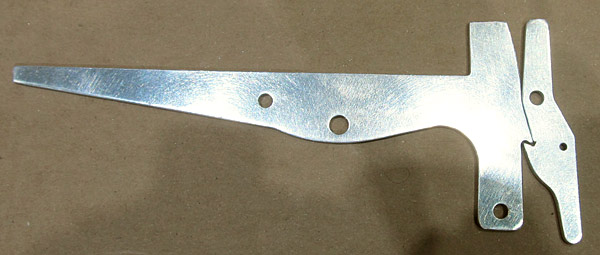 Remember the chips in the notches of the (C-607 and C-609) latch handle and canopy latch? |
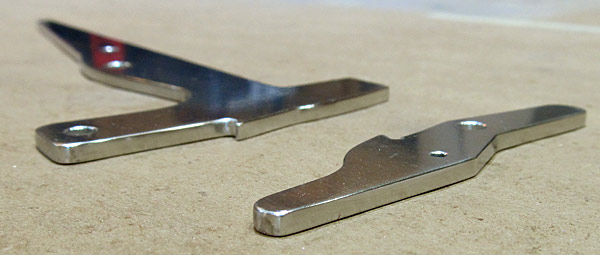 The edges on the (C-607) latch handle and the (C-609) canopy latch have been final sanded and polished. |
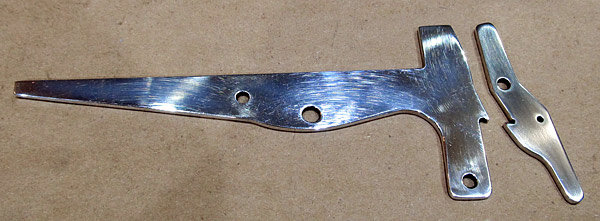 The surfaces on the (C-607) latch handle and the (C-609) canopy latch have been final sanded and ready to be polished. |
 I polished the (SL-3) with Nuvite NuShine IIS, it is a final grade metal polishing compound. |
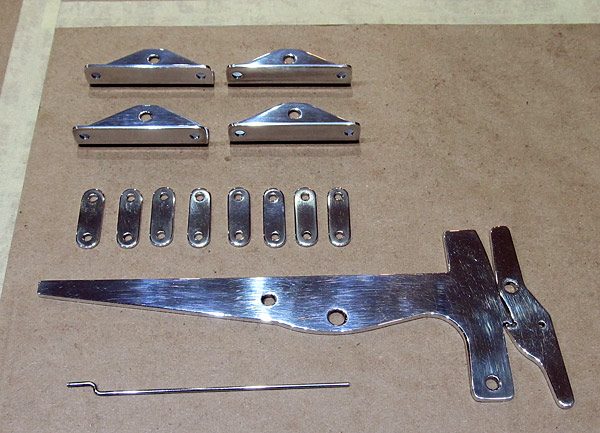 These are the canopy and door latching parts, they have been polished with Nuvite NuShine IIA polishing compound "grade A" which is a fine metal polishing compound used just before the final mirror finish compound Nuvite NuShine IIS. |
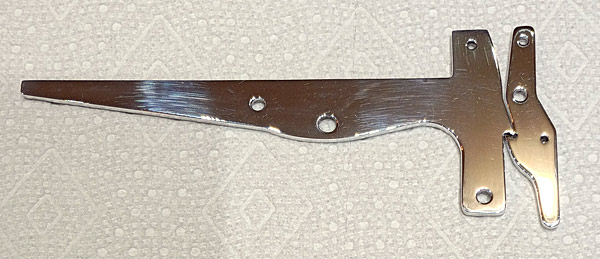 The (C-607) latch handle and the (C-609) canopy latch have been polished with Nuvite NuShine IIS final metal polishing compound. |
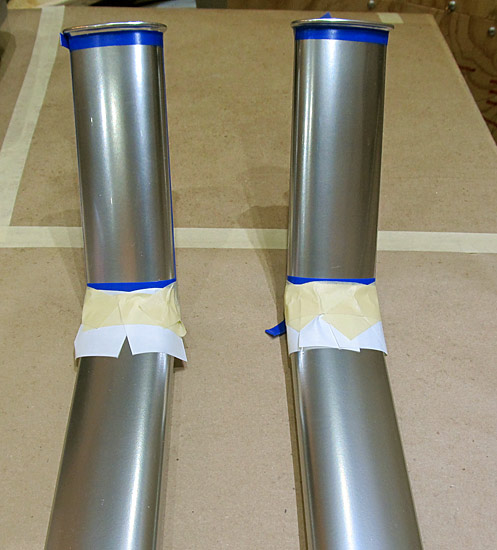 The (F00017-L and F-00017-R) left and right steps are masked off so that they can be painted with wing walk material. |
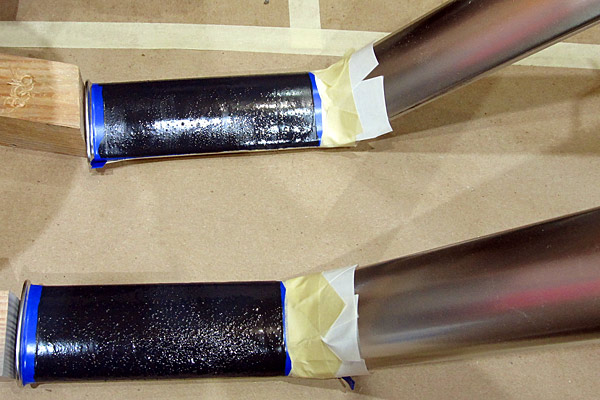 I painted the treads on the (F00017-L and F-00017-R) left and right steps with Randolph's wingwalk paint. |
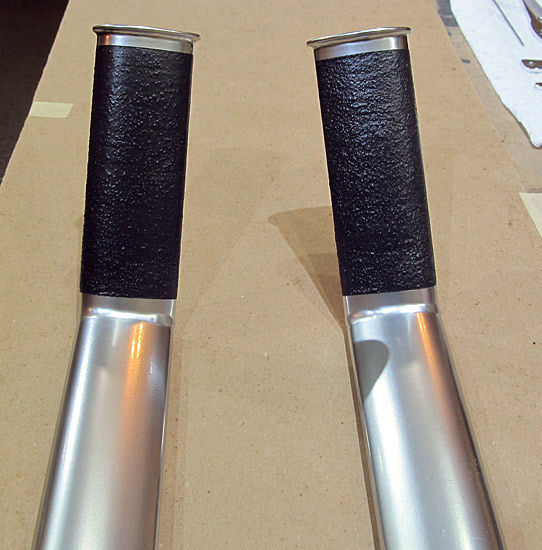 This is what two coats of the Randolph's wingwalk mixture looks like when fully dried. |
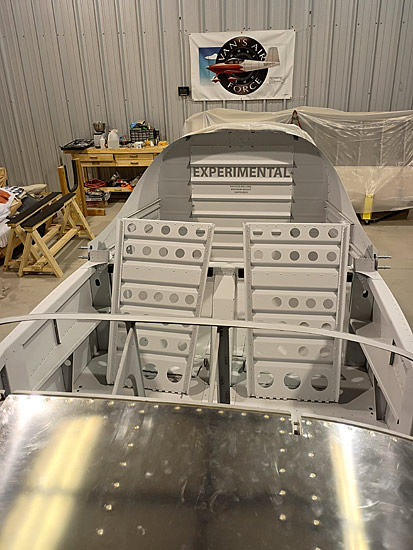 I temporarily installed the (F-01406F) baggage bulkhead corrugation after applying the "Experimental" placard to the aft portion of the baggage bin. |
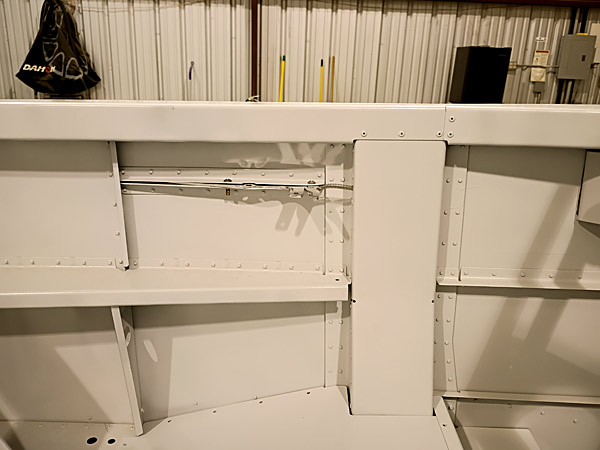 As per step eight, on page 38-05, figure one, I installed the door latch mechanism to the fuselage to check for fit and function. |
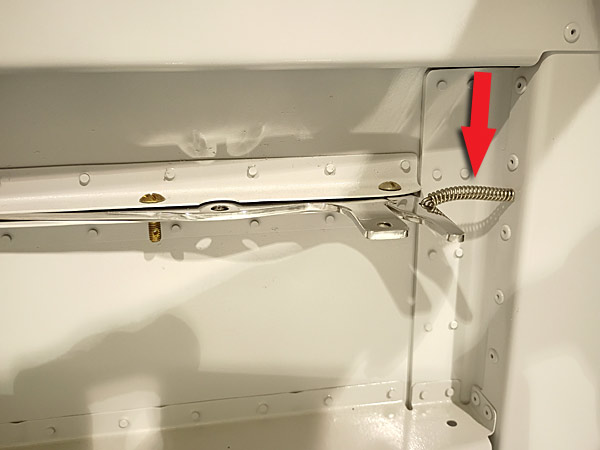 This is what I mean when I mention the flex of the (C-615) spring. There is supposed to be a modification that can take care of this and make everything work in a more "solid" action. |
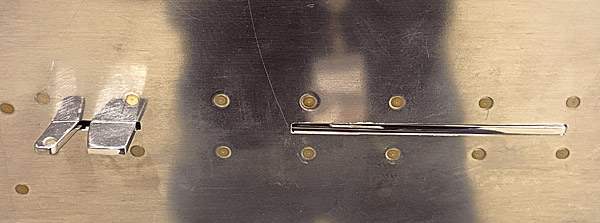 This is what the door latch mechanism looks like from the exterior of the fuselage. |
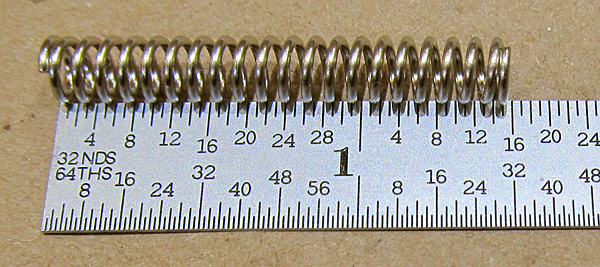 This is the (C-615) door latch spring. |
 The (SL-3) rod is part of the latching mechanism, it connects to the (C-609) canopy latch through the (C-615) spring to a hole in the (F-01487-L) center section channel. The rod is more or less a guide to keep the mechanism in alignment. |
 This is the (C-01421) canopy latch pushrod. It connects the door latch assembly to the canopy latch torque tube assembly which engages the canopy latch pins to lock the canopy when flying. |
 I polished the (C-01421) canopy latch pushrod with Nuvite NuShine IIS metal polishing compound. |
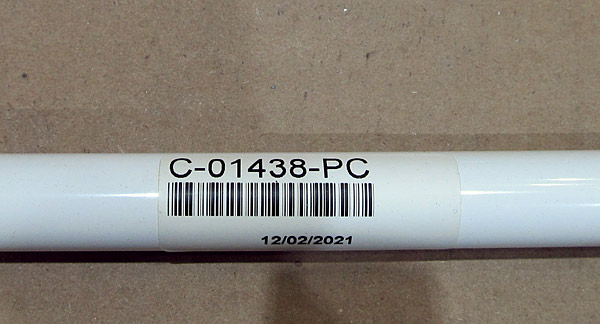 This is the (C-01438) canopy latch torque tube. |
 The (C-01438) canopy latch torque tube is 42 7/8" long. |
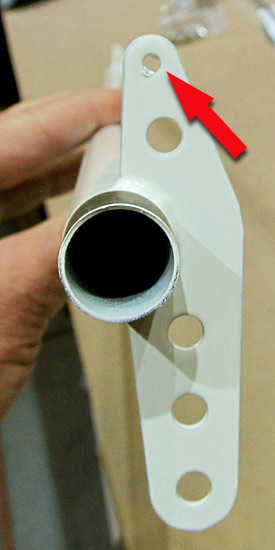 As per step ten, on page 38-05, figure three, the 1/8" hole on the (C-01438) canopy latch torque tube needs to be final #30 drilled. |
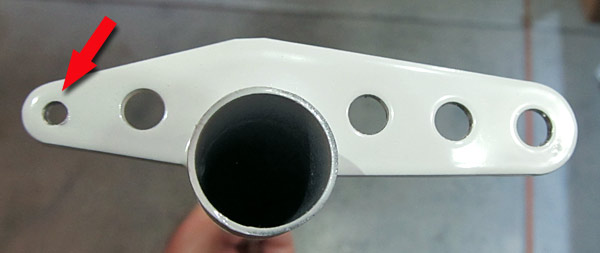 The 1/8" holes were final #30 drilled and deburred on each side of the (C-01438) canopy latch torque tube. |
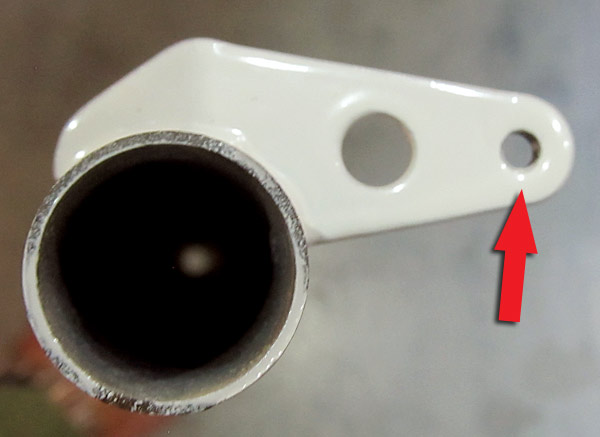 Additionally according to figure three, on page 38-05, there is a 1/4" hole that needs to be final drilled, it is only on the left side. |
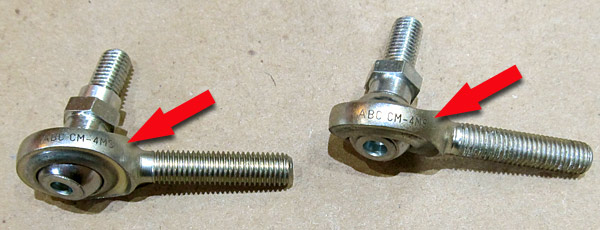 As per step thirteen, on page 38-05, figure four, there needs to be two (CM-4MS) bearings attached to the ()1421) canopy latch pushrod. |
 As per step thirteen, on page 38-05, figure four, the Canopy Latch Pushrod Assembly was fabricated by attaching the two (CM-4MS) angular bearings to the (C-01421) canopy latch pushrod and clocking them 90° from each other at a length of 20 13/16". |
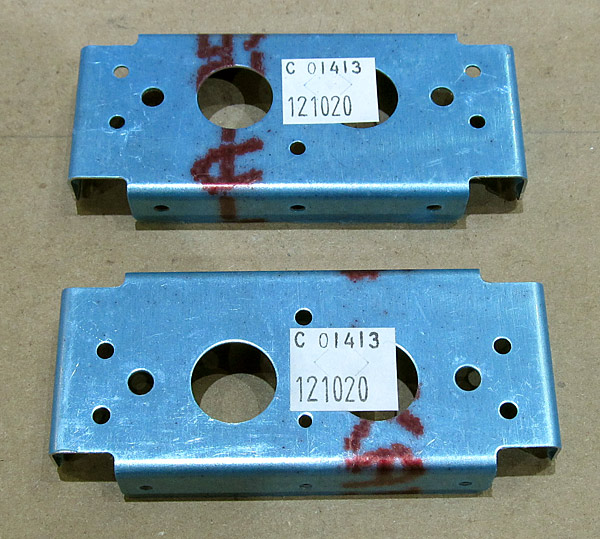 The edges and the holes need to be deburred on the (C-01413) inboard hinge intercostals. There are two of these. |
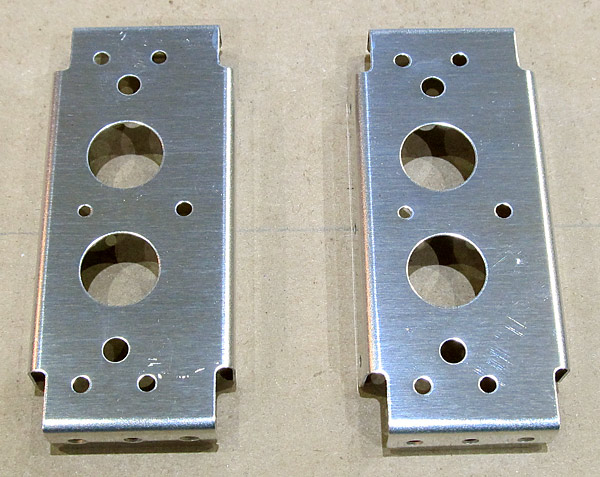 The edges and the holes of the (C-01413) inboard hinge intercostals were deburred. |
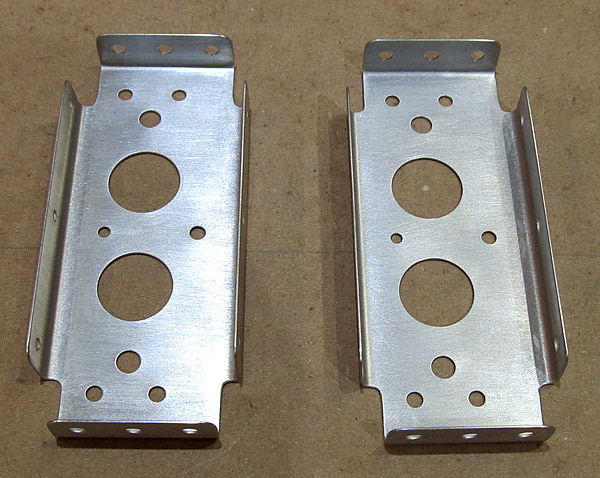 The surfaces of the (C-01413) inboard hinge intercostals were scuffed with maroon Scotch-Brite™ pads in preparation for priming. |
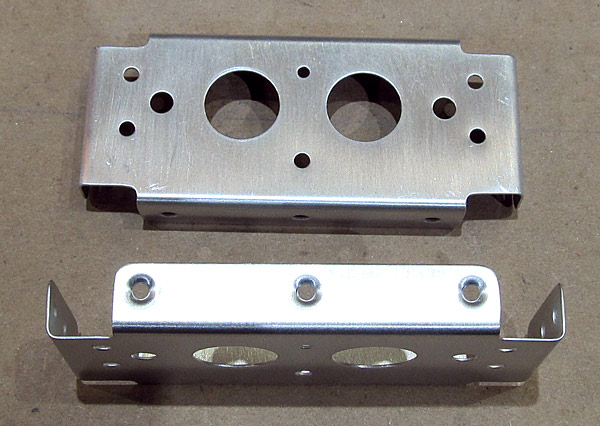 As per step eight, on page 38-06, figure two, the top flanges of the two (C-01413) inboard hinge intercostals, were dimpled with 3/32" reduced diameter female dimple die sets using our hand squeezer. |
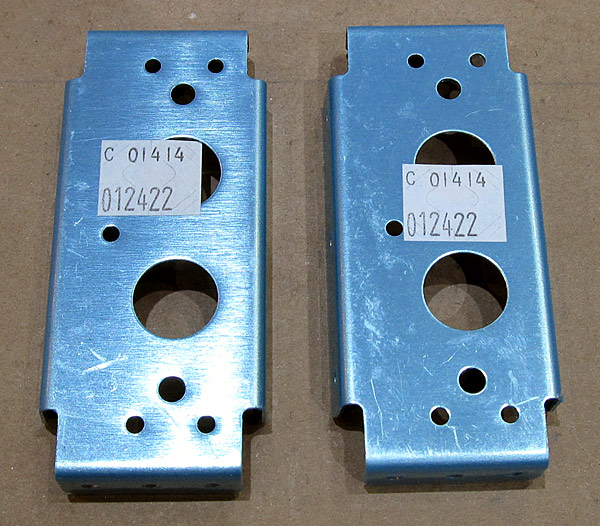 The two (C-01414) outboard hinge intercostals need to be deburred. |
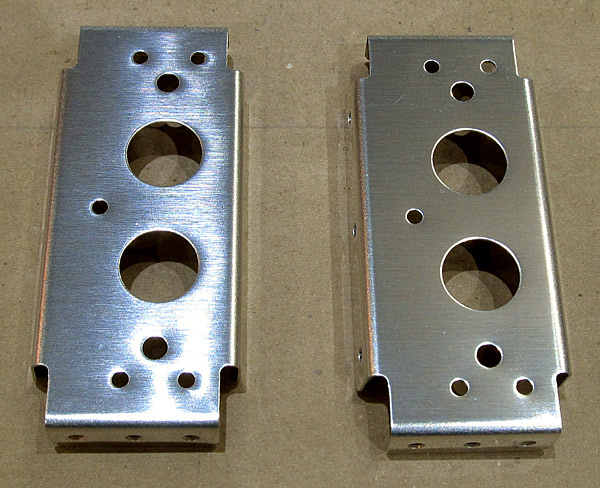 The edges and the holes were deburred. |
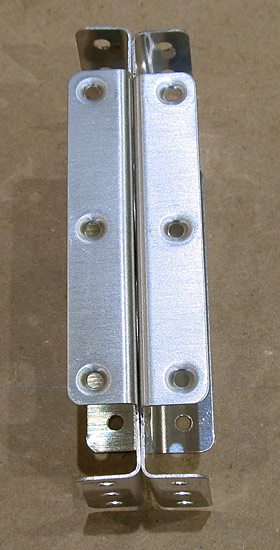 As per step eight, on page 38-06, figure two, the top flanges of the (C-01414) outboard hinge intercostals were dimpled with 3/32" reduced diameter female dimple die sets using a hand squeezer. |
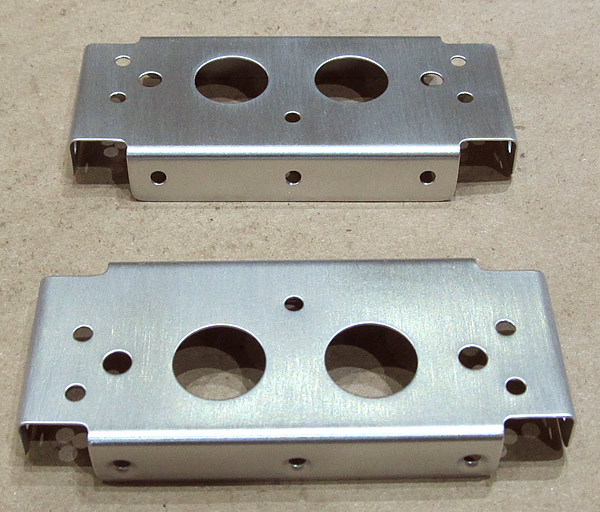 The surfaces of the (C-01414) outboard hinge intercostals were scuffed with maroon Scotch-Brite™ pads in preparation for priming. |
 These are the two (C-01412) canopy hinges. They need to be deburred and I have elected to polish them to a mirror finish. |
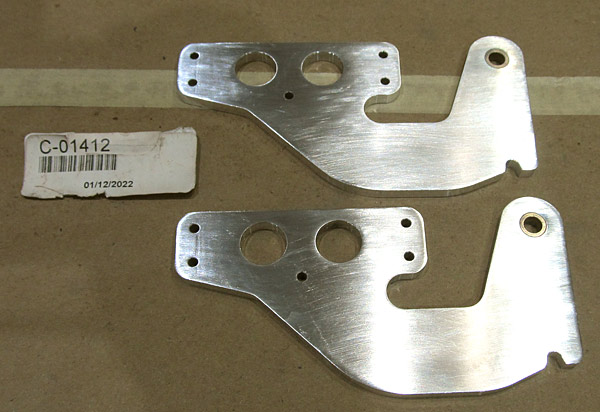 As I began to sand the surfaces for polishing I noticed that there was a shallow groove on each of the hinges (you can see them on the left part of the tab in this photograph). |
 I start with 320 grit sandpaper and end with 15000 grit and then final polish with Nuvite NuShine IIS metal polish. This is about the 5000 grit portion of the sanding. |
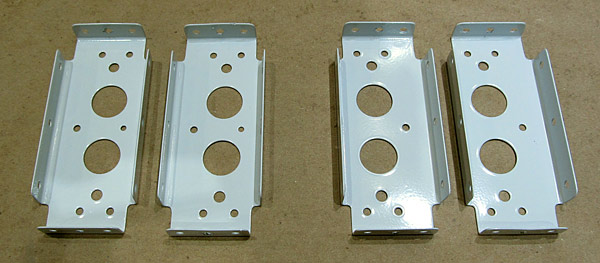 I primed the (C-01413 and C-01414) inoboard and outboard hinge intercostals with SPI 6610-4 gray epoxy primer. |
 The (C-01412) canopy hinges are still being sanded to 15000 grit sandpaper and will soon be ready to be polished with Nuvite NuShine IIA and IIS polishing compound. |
 As I explained earlier I didn't like the way that the (C-615) spring "kinked" when it was in position in the canopy latch assembly. |
 First I need to get some aluminum tubing, at first I thought that 5/32" diameter tubing would work but it was too wide so I ended up using 1/8" tubing which fit better inside the (C-615) spring. |
 Next, one end of the tubing needs to be flared, I used a dowel rod to make the flare. The aluminum is soft enough to make the flare but it does take some effort to get the job done....not too hard, not to soft. |
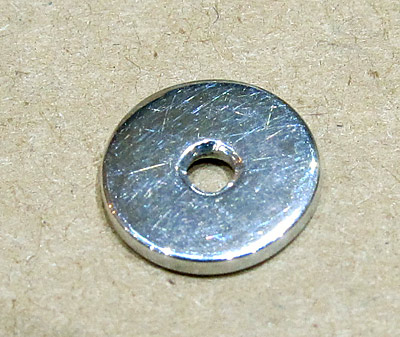 This is a stop washer that will prevent the flared aluminum tube to ride up over the (C-609) canopy latch. |
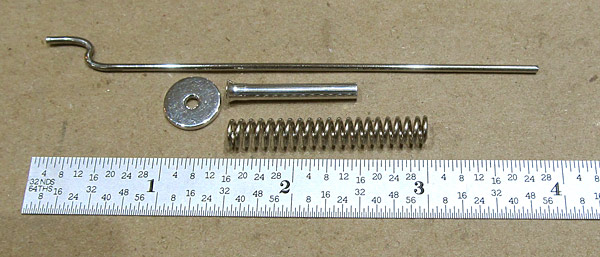 These are all of the parts for the modification, everthing was polished with Nuvite NuShine IIS metal polish. |
 This is how everything goes together, I need to install it onto the airframe and check the function... |
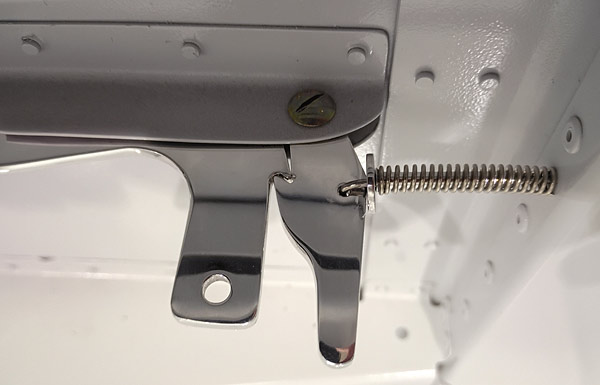 I reattached the canopy latch assembly with the new parts described above and the fit is much better. |
 This is another view of the canopy latch assembly with the new parts added. I haven't installed the (VA-104-1A) knob to the (C-607) latch handle yet. |
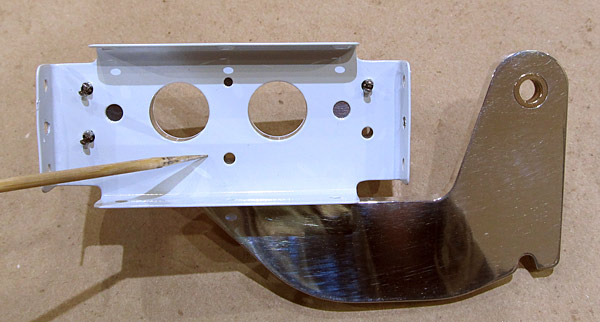 As per step nine, on page 38-06, figures three and four, the (C-01413) inboard hinge intercostals and the (C-01414) outboard hinge intercostals were clecoed to the (C-01412) canopy hinges so that they could be riveted together with AN470AD4-8 rivets. |
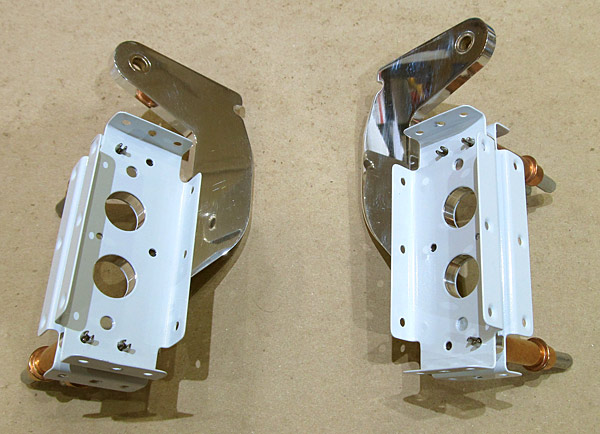 The smaller #40 hole defines the inside half of the canopy hinge assembly so double check how everything is clecoed together before riveting. |
 Before I rivet the canopy hinge assemblies together I wanted to final size the holes in the (F-00017-L and F-00017-R) steps. |
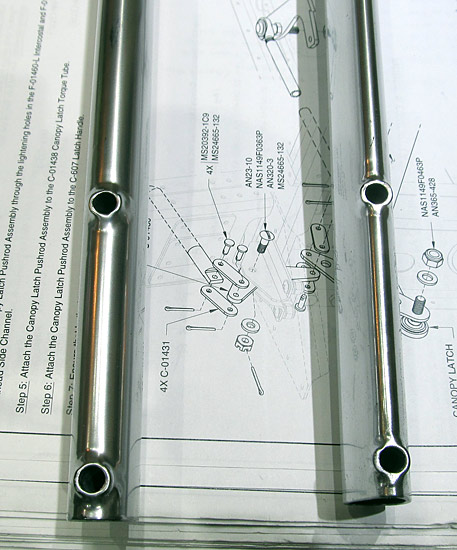 The holes in the (F-00017-L and F-00017-R) steps were final sized using a .2480" ream on the drill press. |
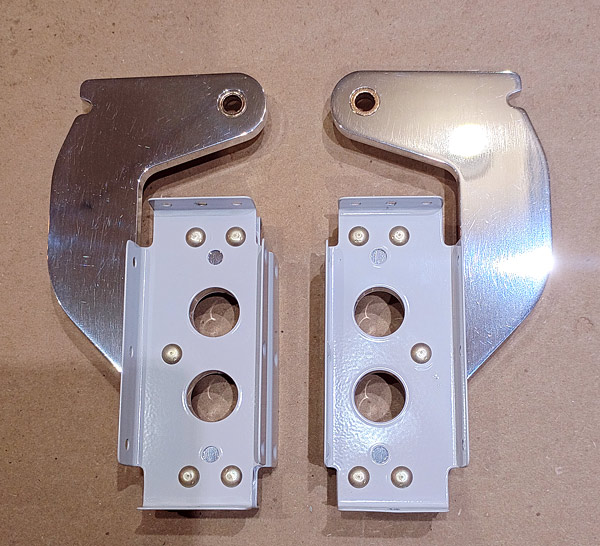 Back to the riveting... |
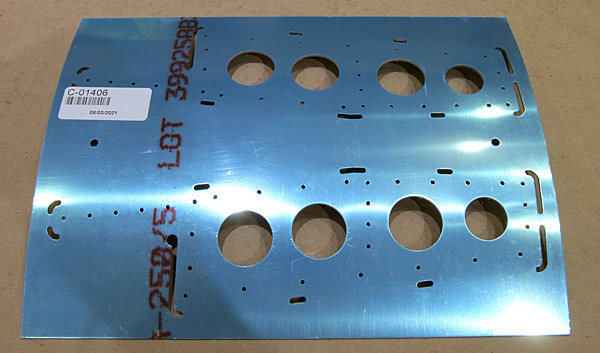 This is the piece that the (C-01406) forward canopy rails are separated from. |
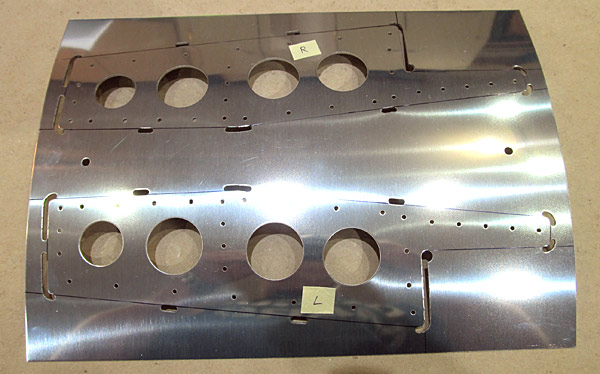 I used a sharpie pen to lay out the cut lines and separated them using a bandsaw. |
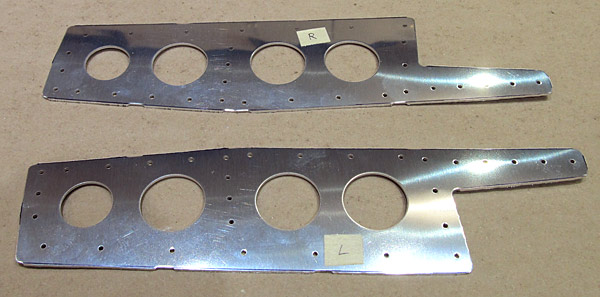 As per step one, on page 38-07, figure one the two pieces were separated. Now there is (C-01406-L) left foward canopy rail and a (C-01406-R) right forward canopy rail. |
 As you can see, the bandsaw cut needs to be filed and deburred and the material is thick. |
 The edges and all of the holes were deburred on the (C-01406-L) left forward canopy rail. I also used 220 grit sandpaper to smooth out the edges. |
 The (C-01406-R) right forward canopy rail is next to be deburred. As you can see, the edges are rough and when I cut them on the bandsaw I cut just a little wide of the line so there is plenty of file work to do at first. |
 The edges and all of the holes on the (C-01406-R) right forward canopy rail have been deburred and smoothed with 220 grit sandpaper. |
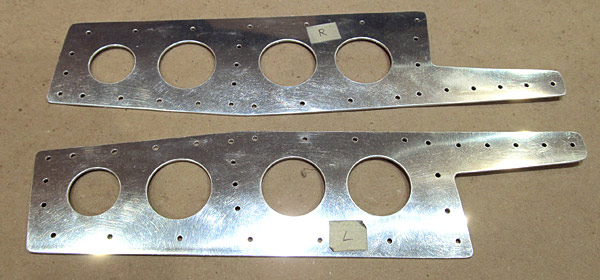 I will probably sand the edges on the (C-01406-L and C-01406-R) left and right forward canopy rails up to 400 grit sandpaper. |
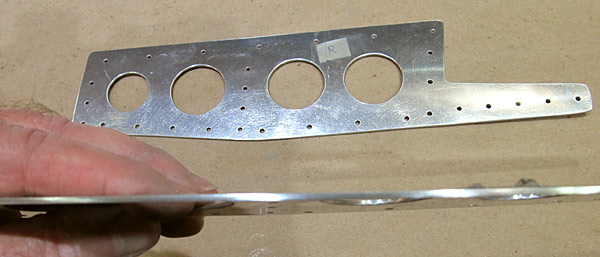 The edges of the (C-01406-L and C-01406-R) left and right forward canopy rails were sanded and polished starting with 320 grit sandpaper and ending with 600 grit sandpaper. |
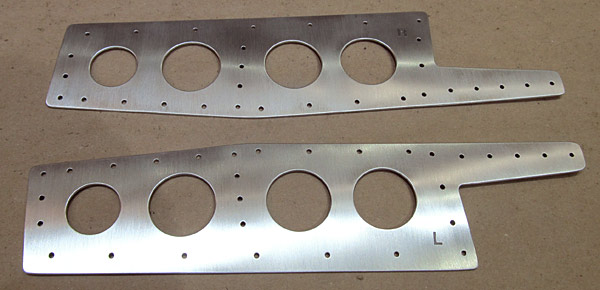 I scuffed the surfaces of the (C-01406-L and C-01406-R) left and right forward canopy rails with maroon and gray Scotch-Brite™ pads in preparation for priming. |
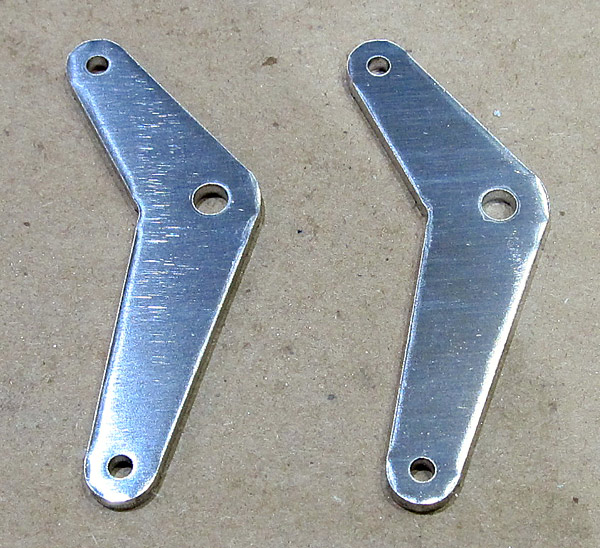 All of the holes in the (C-01430) latch bellcranks were deburred as well as the edges of the left latch bellcrank....the right bellcrank still has to have edges deburred. |
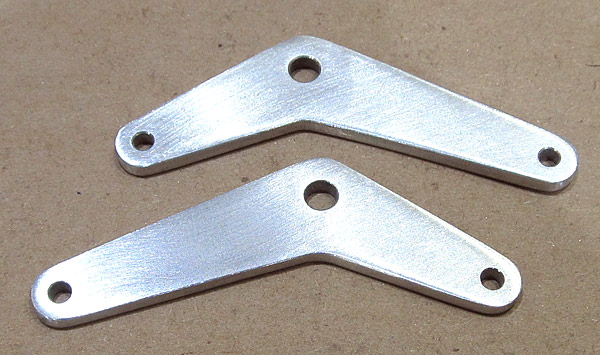 I deburred the edges of the second (C-01430) latch bellcrank. |
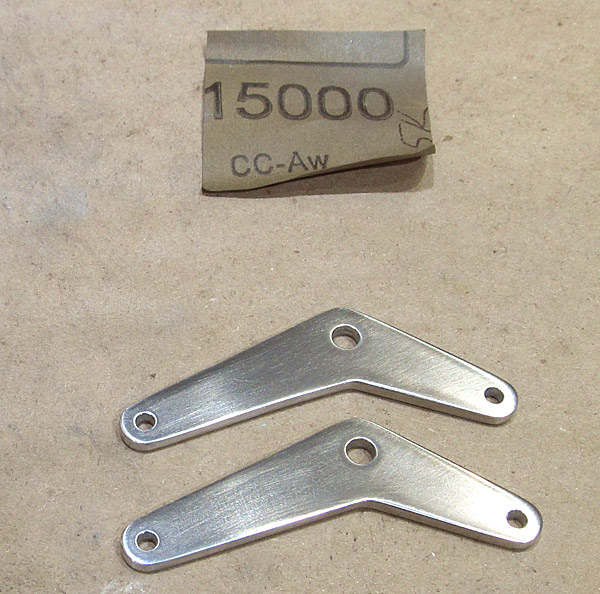 The goal is to sand the surfaces up to 15000 grit sandpaper and then begin the polish process, I am using Nuvite NuShine polishes for the final polishing of the surfaces. |
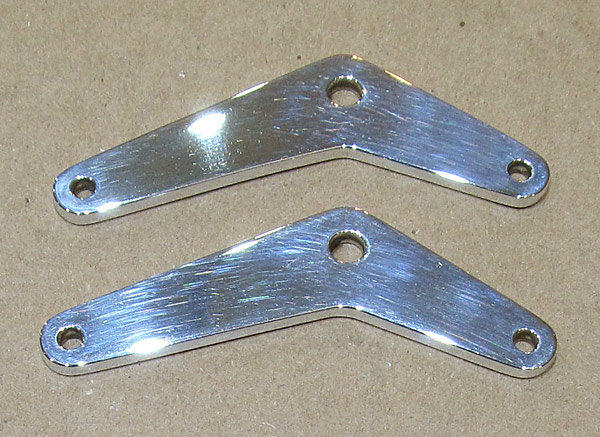 I start out with Nuvite NuShine IIA (red label) and finish with Nuvite NuShine IIS (green label) polish. |
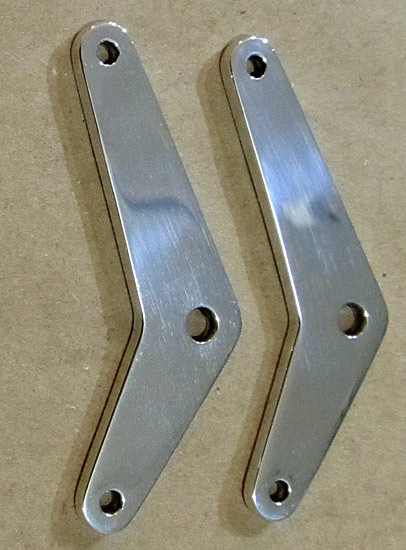 This is after the Nuvite NuShine IIS has been applied by hand, for better results a rotary buffer can be used but these parts are so small I prefer to just hand polish them. |
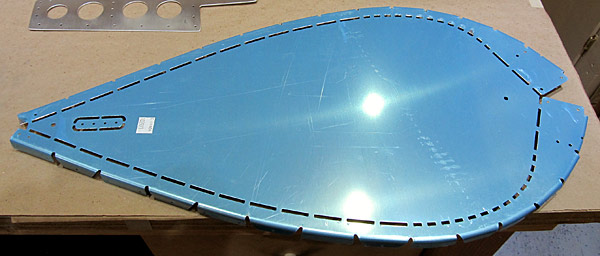 The (C-01404-L and C-01404-R) left and right support flanges and the (C-01404A) support flange splice need to be separated from this single piece of aluminum. The protective blue vinyl will be removed first. |
 The protective blue vinyl was removed from the edges and all of the holes were deburred first. |
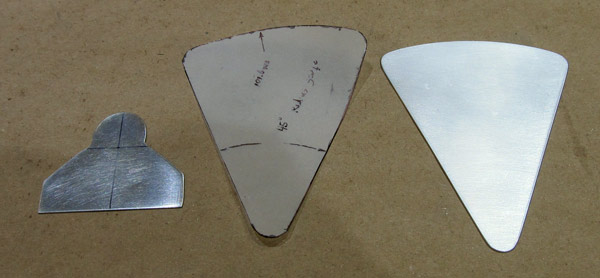 Since I was going to be using the bandsaw I thought it would be a good idea to cut out some of the contour templates that will be used later in the fiberglass portion of the canopy build, (see pages 38-25 and 38-41). |
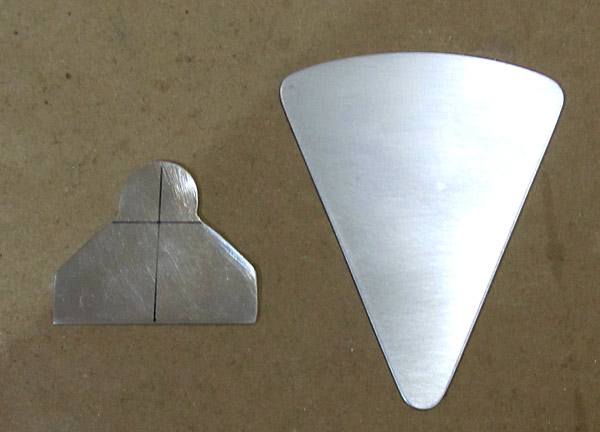 These are the two types of templates that will be used later in the fiberglass lay up of the canopy, they have been cut out using the bandsaw and then deburred and smoothed out with sandpaper. |
 Now it's time to separate the (C-01404-L and C-01404-R) support flanges and the (C-01404A) support flange splice. I did that using our bandsaw. |
 These are the (C-01404-L and C-01404-R) left and right support flanges. |
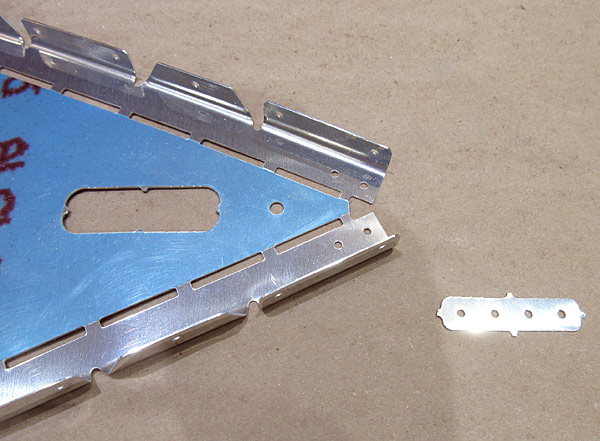 This is the (C-01404A) support flange splice. I separated it using a small metal cutting hand saw. |
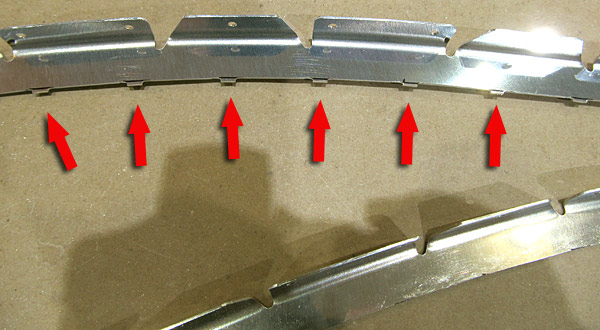 Now to debur the edges of the (C-01404-L and C-01404-R) left and right support flanges. As you can see the "nubs" that held these flanges onto the teardrop piece of aluminum are going to consume some deburring time with a small file. |
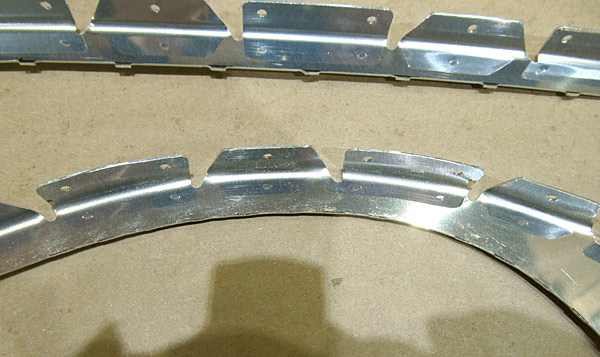 The (C-01404-L) left support flange has been deburred using a small file and the (C-01404-R) right support flange (above) has yet to be deburred. |
 Here is a better picture of the (C-01404-L) left support flange deburred. |
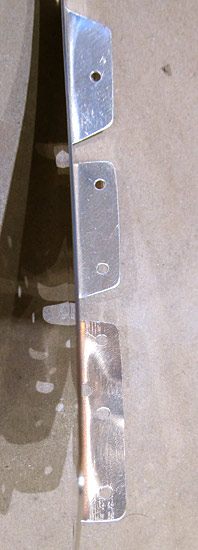 Of course some of the hardest spots to be deburred are the little gaps between the individual flanges, I still use a small round file to get to those... |
 The (C-01404-L and C-01404-R) left and right support flanges and the (C-01404A) support flange splice have been deburred and the edges have been polished smooth with sandpaper. |
 I like to scuff the surfaces of the pieces that I know are going to be painted so now I am scuffing the (C-01404-L and C-01404-R) left and right support flanges with maroon and gray Scotch-Brite™ pads. This is the finished right support flange. |
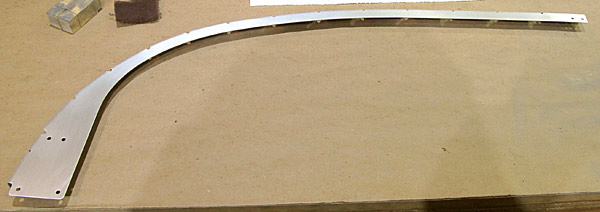 This is the (C-01404-L) left support flange, it has been finish scuffed with maroon and gray Scotch-Brite™ pads in preparation for painting. |
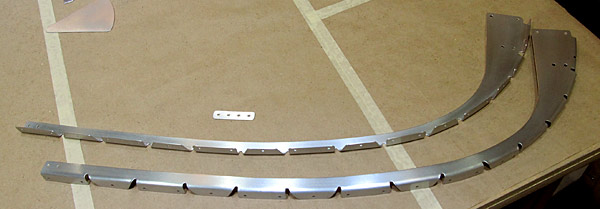 The (C-01404-L and C-01404-R) left and right support flanges, and the (C-01404A) support flange splice have been scuffed and will be primed and painted after final fitting has been completed. |
 This is the (C-01418) tip up canopy skin. For now I only want to remove the protective blue vinyl in the places that will be riveted so that the majority of the skin can be protected from scratches as much as possible. |
 I used a small tipped soldering iron to remove the blue vinyl from the seams that will eventually be dimpled and riveted. |
 This is the bottom surface of the (C01418) canopy skin. |
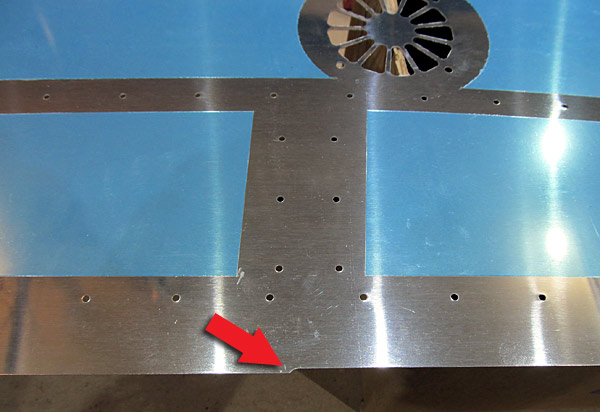 I deburred all of the holes in the (C-01418) canopy skin and have deburred the edges, the slots in the cooling fan openings still have to be deburred. |
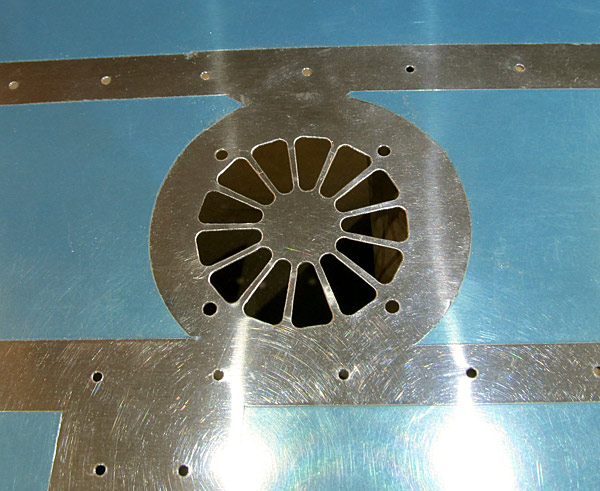 The fan slots in the (C-01418) canopy skin (right side) were deburred. These are deburred using a small round file....tight maneuvering! |
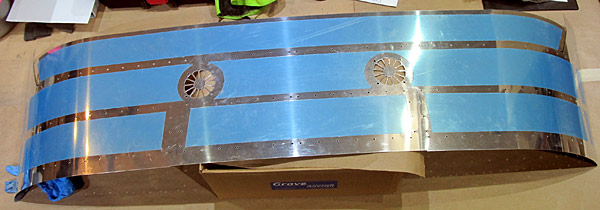 Both sets of fan slots in the (C-01418) canopy skin were deburred, final sanding to go... |
 The edges of the (C-01418) canopy skin were sanded and polished smooth with sandpaper (up to 600 grit). The bare places on the skin that are going to be dimpled next were scuffed with maroon and gray Scotch-Brite™ pads; it's just easier to scuff the surfaces now then after they have been dimpled. |
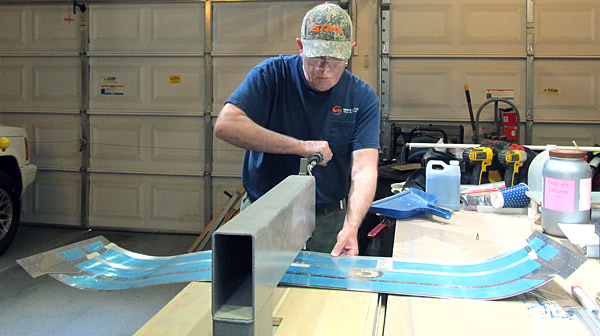 As per step three, on page 38-07, figure three, there are indicated holes that need to be dimpled on the (C-01418) canopy skin at this time. |
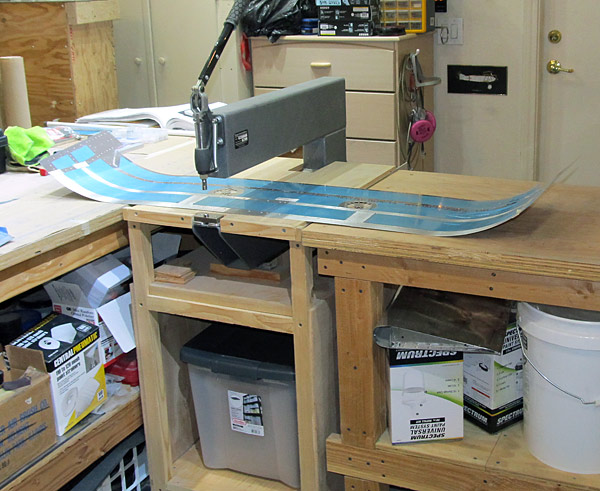 Make sure to start in the middle and work symmetrically outboard when dimpling and use plenty of support under the (C-01418) canopy skin. |
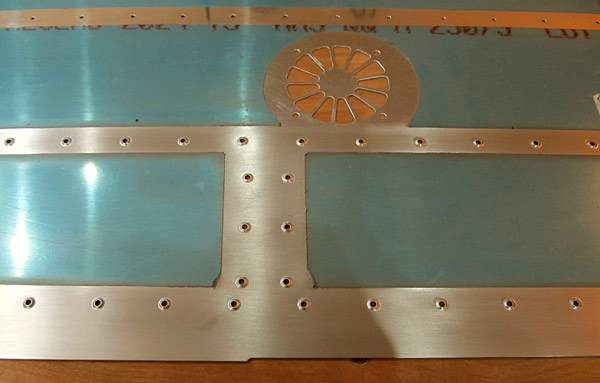 These are the dimpled holes... |
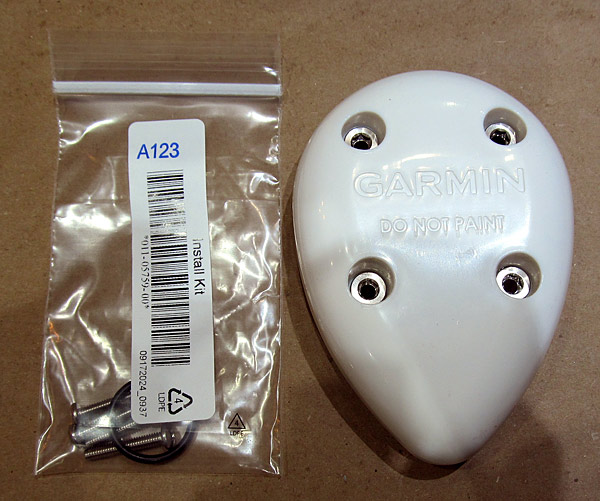 On a side note, I received a Garmin GA-35S WAAS GPS antenna and I need to fabricate a doubler for it so it can be mounted on the dorsal side of the fuselage just aft of the rear window. |
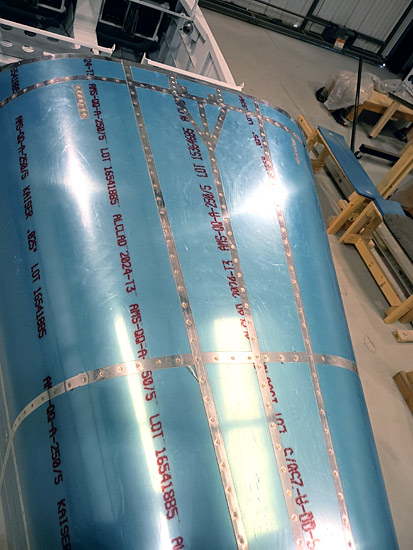 This is the dorsal section of the fuselage where I intend to mpunt the GPS antennas. |
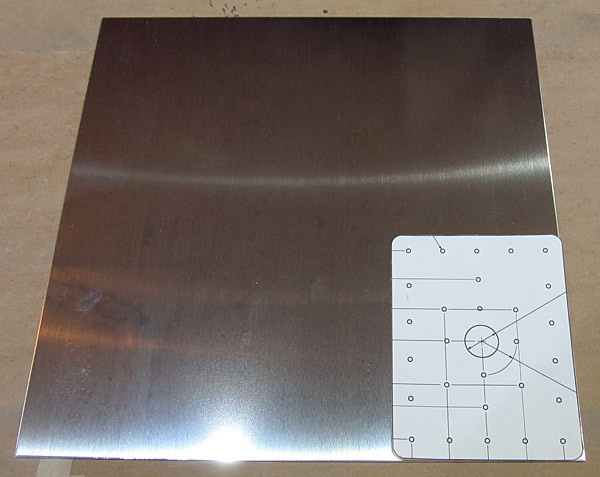 Garmin recommends using .063" 2024 T3 Alclad aluminum for the doubler so that is what the doubler will be fabricated from. |
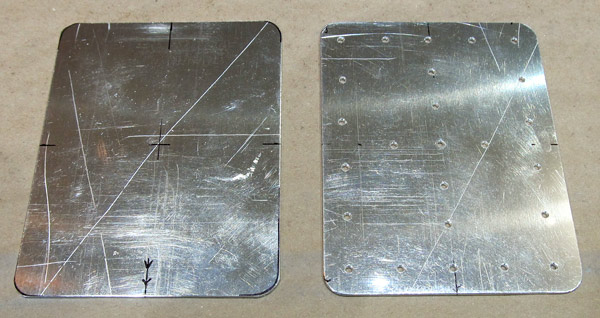 Using the template found online for the Garmin GA-35 WAAS GPS antenna doubler, I cut out two doublers from the .063" 2024 T3 Alclad aluminum using our bandsaw. |
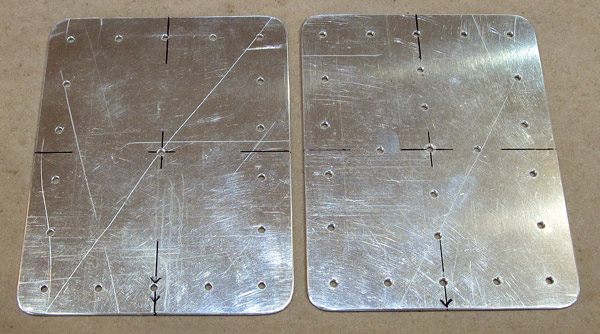 A Garmin GA-35S WAAS GPS antenna will not work with a doubler drilled out like this if you enlarge the center hole in the center position indicated, the result would be that the antenna sticks out a 1/4" past the edge of the doubler....ask me how I know! |
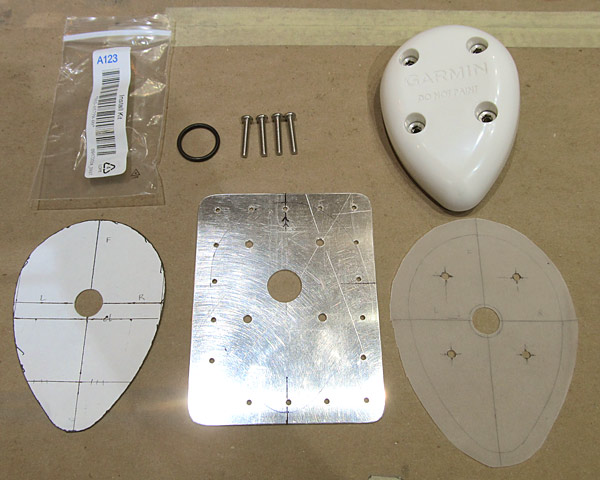 These are all of the parts and templates that I used to fabricate the doubler for the Garmin GA-35S WAAS gps antenna. |
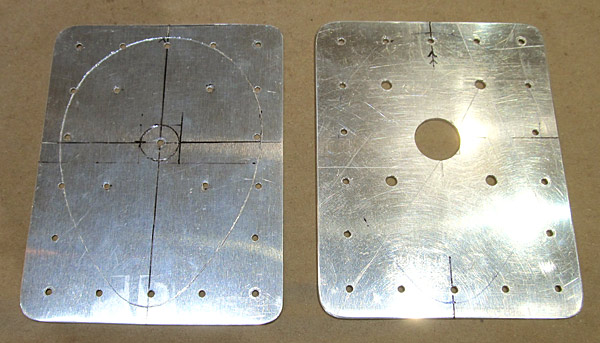 The template on the left of this photogragh is just a thin aluminum drilling guide that I will use to match drill the aircraft skin with. The holes are all #40 drill holes and after they are all drilled into the skin, I will final size them to fit the doubler. |
 This is the final doubler with the Garmin GA-35S WAAS GPS antenna attached to it. The antenna will be attached to a Garmin navigator. |
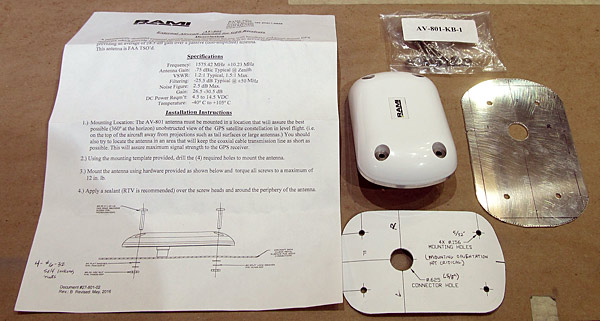 I am installing a second RAMI AV-801 WAAS GPS antenna to our airplane, it is going to be used by a panel mounted iPad system for pitot/static and independant AHRS PFD for the right side of our instrument panel. |
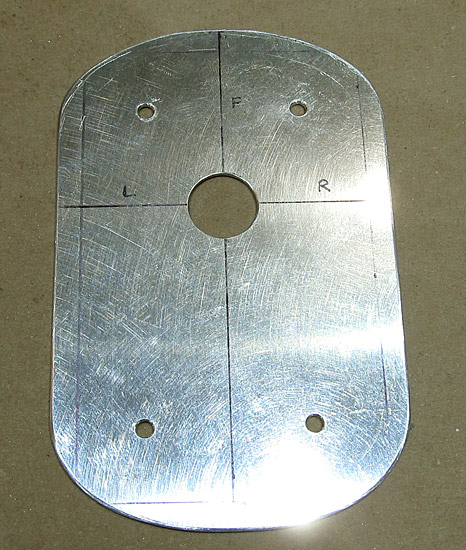 I fabricated the doubler from .063" 2024 T3 alclad aluminum as well. The center hole is 11/16" in diameter but it can be as small as 5/8". The four mounting screws are #6-32 size. |
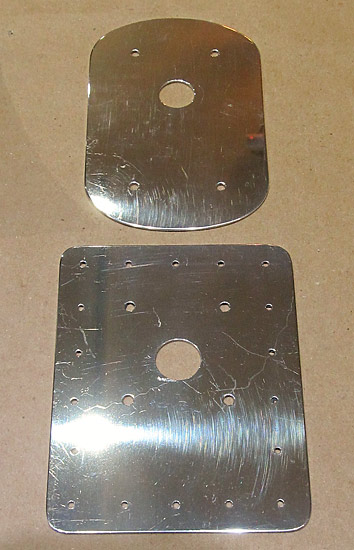 These are the two GPS antenna doublers. |
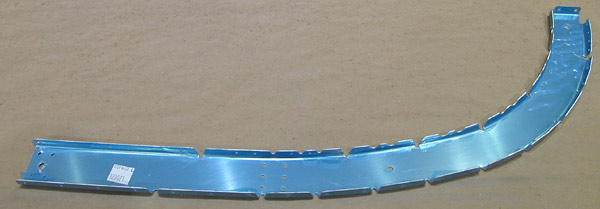 There are six separate canopy frames that make up the core of the tip-up canopy section and each of them need to be deburred. The frames are left and right specific and are attached in the middle by splice plates; when assembled they span just a little over 46". |
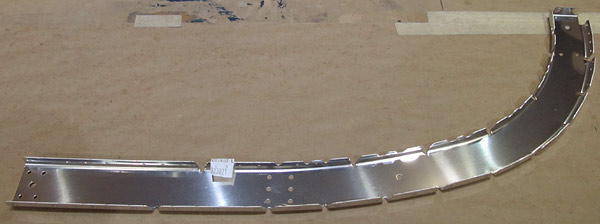 I am using a small file to debur the edges of the (C-01403-L) mid canopy frame and all of the holes have been deburred as well. |
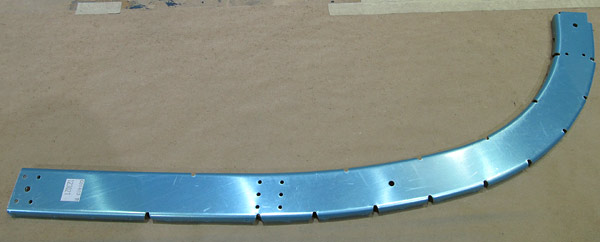 This is the (C-01403-R) right mid canopy frame. The protective blue vinyl has to be removed and the deburring process begins again. |
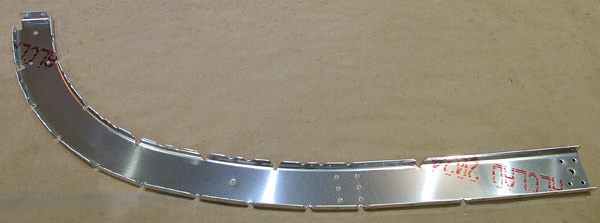 I like to use small files to debur the edges of the material, but first I wash off the red ink with acetone. |
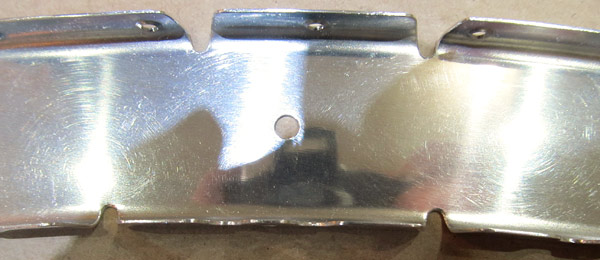 This is what the edges look like after they have been deburred with the file. Later I will polish them with fine sandpaper. All of the holes have been deburred too. |
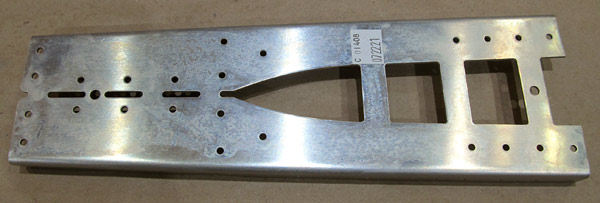 As per step five, on page 38-08, figure two, the (C-01408) forward canopy rail bases need to be separated. |
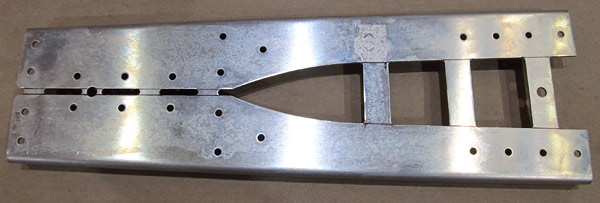 I used a fine line sharpy pen to lay out the cut lines before going over to the bandsaw to separate the pieces. |
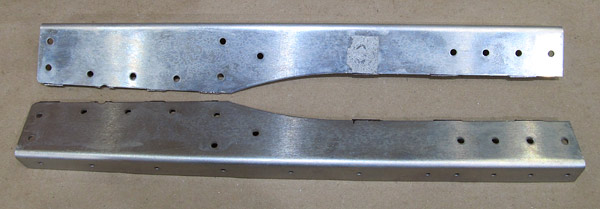 The (C-01408) forward canopy rail bases have been separted using the bandsaw and some heavy duty deburring needs to be done now! |
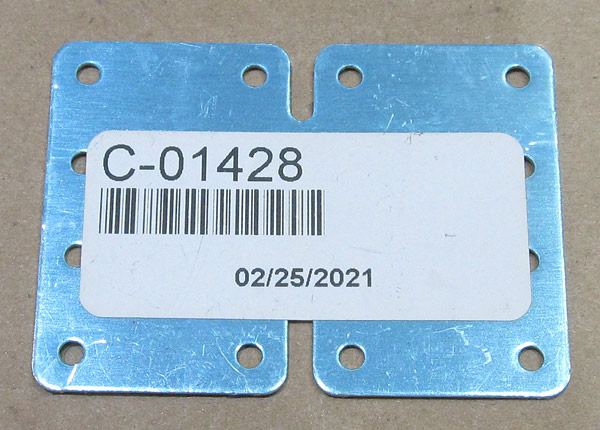 Since I have the bandsaw out, I might as well separate the (C-01428) canopy frame splices. |
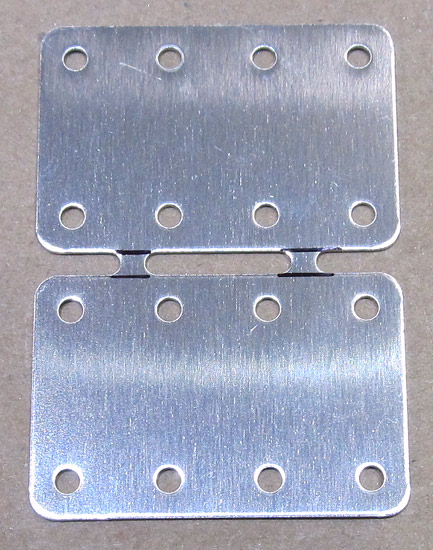 I removed the protective blue vinyl and laid out the cut lines with a fine line sharpy pen. |
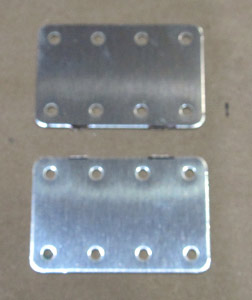 As per step six, on page 38-08, figure three, I separated the (C-01428) canopy frame splices on the bandsaw. |
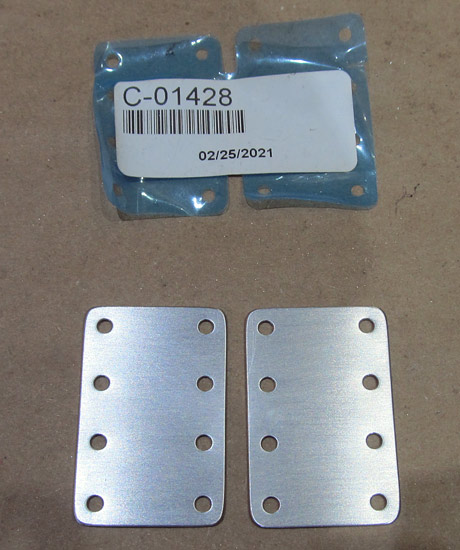 The edges of the (C-01428) canopy frame spices were deburred with a small file and then the edges were polished with fine sandpaper. All of the holes were deburred. |
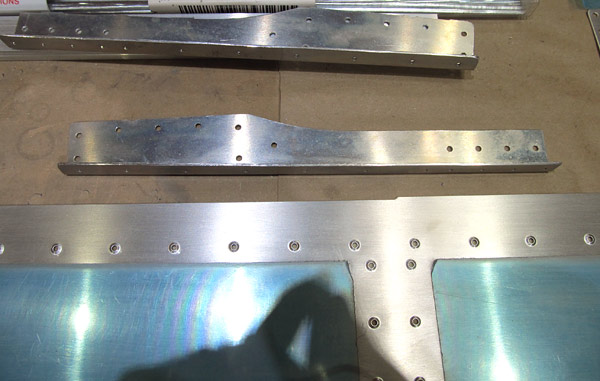 The edges of this (C-01408) forward canopy rail base was deburred with a small file and all of the holes were deburred. |
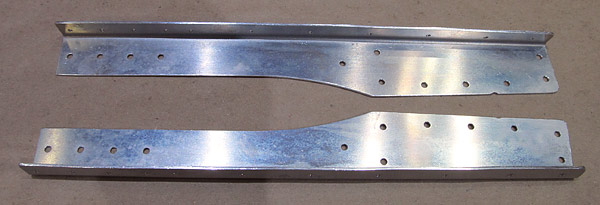 I finished deburring the edges of the second (C-01408) forward canopy rail base and polished the edges of the two forward canopy rail bases with fine sandpaper. |
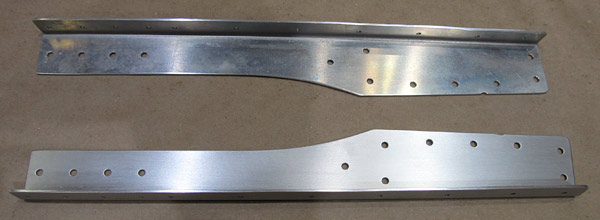 I began scuffing the surfaces of the (C-01408) forward canopy rail bases with maroon and gray Scotch-Brite™ pads in preparation for priming. |
 Both of the (C-01408) forward canopy rail bases have been scuffed with maroon and gray Scotch-Brite™ pads. |
 Ready for paint! |
 I have begun polishing the edges of the (C-01403-L and C-01403-R) left and right mid canopy frames with fine sandpaper. |
 I scuffed the surfaces of the (C-01403-L and C-01403-R) left and right mid canopy frames with maroon and gray Scotch-Brite™ pads in preparation for priming. |
 These are the (C-01403-L and C-01403-R) left and right mid canopy frames laid out as they will be used in the tip up canopy. |
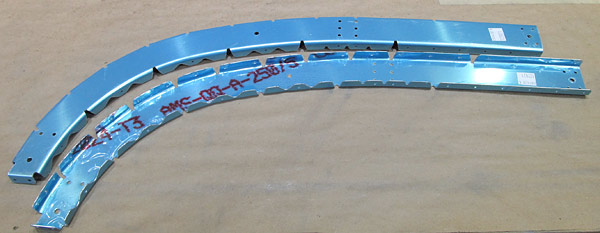 There are three rows of canopy frames in the forward part of the tip up canopy. These are the (C-01402-L and C-01402-R) left and right forward canopy frames; they will be joined in the center with a (C-01428) canopy frame splice. |
 After the protective blue vinyl has been removed the edges of the canopy frames will be deburred first. |
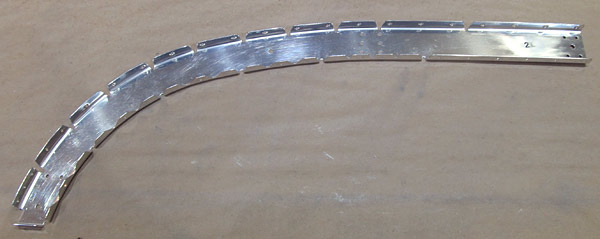 I started with the (C-01402-L) left forward canopy frame first and deburred the edges with a small file. All of the holes have been deburred as well. |
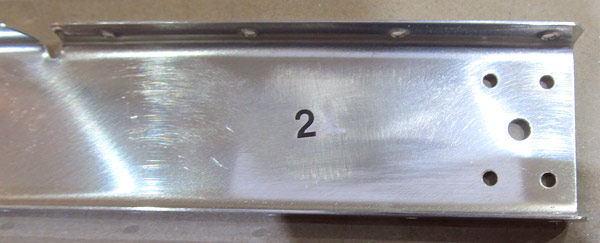 This is what the edges look like after they have been deburred with the small files....polishing the edges with fine sandpaper comes next. |
 I deburred the edges of the (C-01402-R) right forward canopy frame, deburred all of the holes, and polished the edges with fine sandpaper. |
 I scuffed the surfaces of the (C-01402-L) left forward canopy frame with maroon and gray Scotch-Brite™ pads in preparation for priming. |
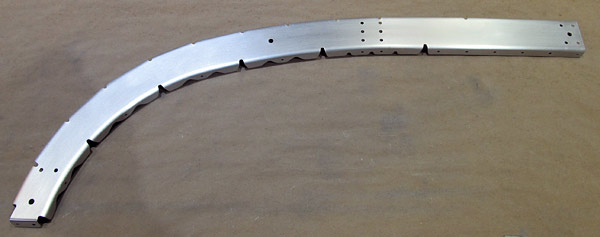 I scuffed the surfaces of the (C-01402-R) right forward canopy frame with maroon and gray Scotch-Brite™ pads in preparation for priming. |
 There are three rows of canopy frames in the forward part of the tip up canopy. |
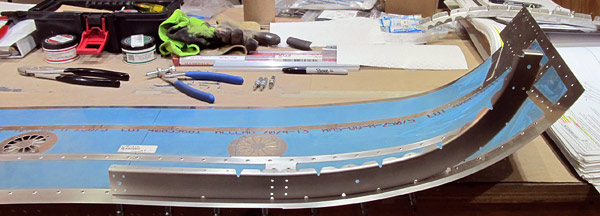 As per steps one and two, on page 38-08, and referencing figure one, the (C-01402-L and C-01402-R) left and right forward canopy frames and the (C-01403-L and C-01403-R) left and right mid canopy frames need to be fluted so that the holes in the pre-dimpled frames match up to the holes in the (C-01418) canopy skin and also conform to the curvature of the skin. |
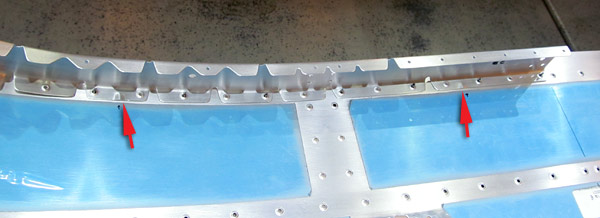 This photogragh shows what the flutes look like. |
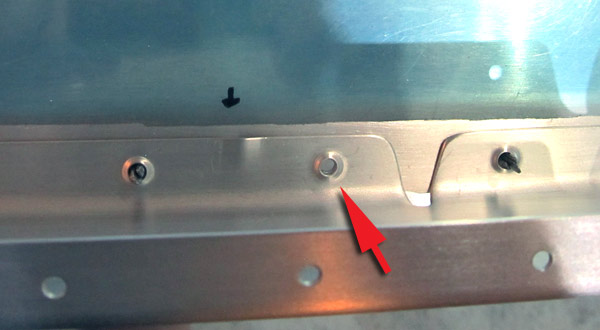 If you look close at this photogragh you can see that the flange hole still isn't quite lined up with the canopy skin hole underneath. |
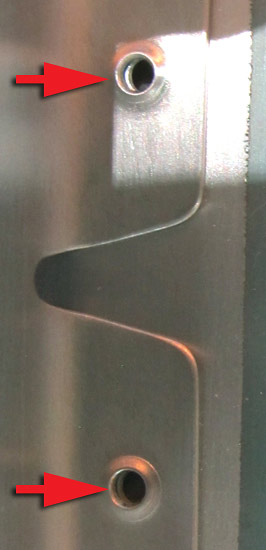 Here is an even closer look at what I was talking about; the holes aren't lined up, you can see a small "sliver" of metal on the edges of the hole underneath so a flute is required. |
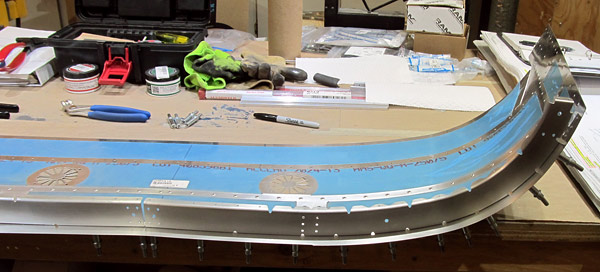 Once the right forward frame was fluted it is time to flute the (C-01402-L) left forward canopy frame. Start clecoing every other hole from the center and work outwards. |
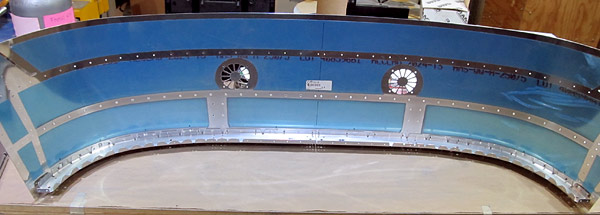 Sometimes it helps to stand the canopy skin and frames on end so that the fluting progress can be checked not only for hole alignment but for gaps between the flanges and the canopy skin. |
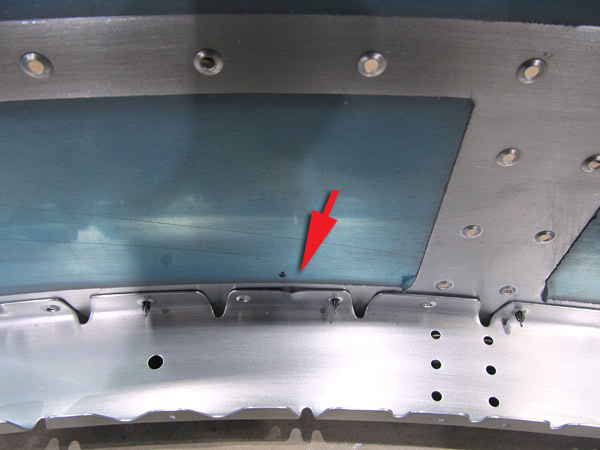 Here is a gap between the flange hole and the canopy skin. The dimpled skins are not nesting within each other just yet. A deeper flute or possibly a double flute might be required. |
 Time to start the fluting process again but this time it is the (C-01403-L and 01403-R) left and right mid canopy frames that need fluting. |
 I have all of the canopy frames clecoed to the canopy skin as well as the support flanges. The fluting is done, now it is time to check for gaps. |
 As per step three, on page 38-08, the flanges of the (C-01402-L and C-01402-R) and (C-01403-L and C-01403-R) canopy frames and the (C-01404-L and C-01404-R) support flanges were verified to lay flat against the (C-01418) canopy skin. |
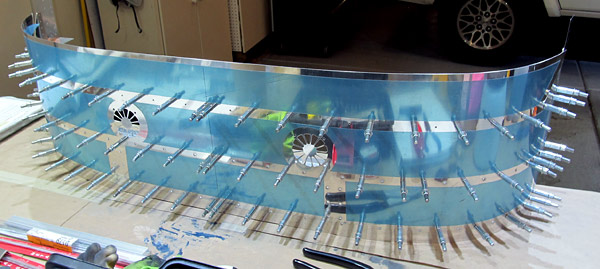 That's a lot of clecos! |
 Time to remove the protective blue vinyl and debur the (C-01415-L and C-01415-R) left and right forward intercostals. |
 The edges of the (C-01415-L and C-01415-R) left and right forward intercostals were deburred with a small file and then polished with fine sandpaper. All of the holes were deburred as well. |
 Time to remove the protective blue vinyl and debur the (C-01416-L and C-01416-R) left and right aft intercostals. |
 The edges of the (C-01416-L and C-01416-R) left and right aft intercostals were deburred with a small file and then polished with fine sandpaper. All of the holes were deburred as well. |
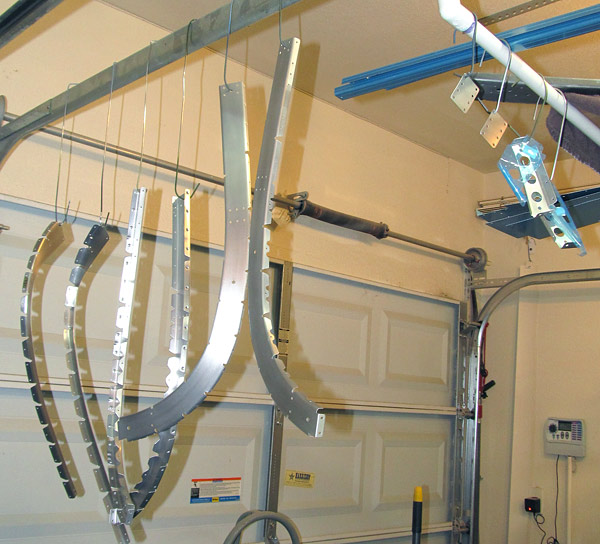 I cleaned all of the canopy parts with soap and water and then degreased them with Southern polyurethane Incorporated waterborne wax and grease remover in preparation for priming. |
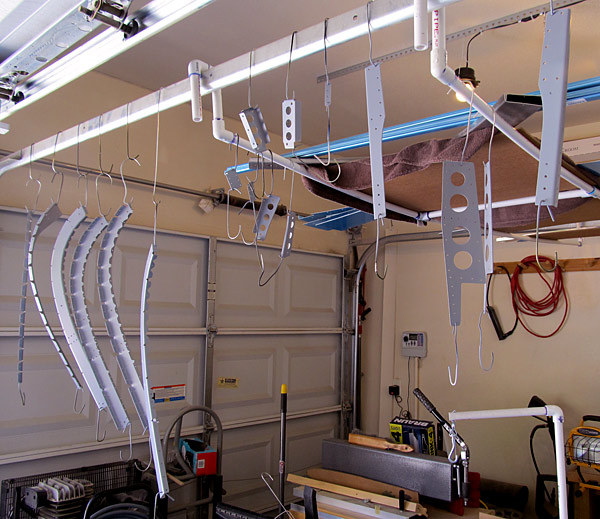 I primed all of the canopy parts with Southern polyurethane Incorporated 6610-4 two part, gray epoxy primer. |
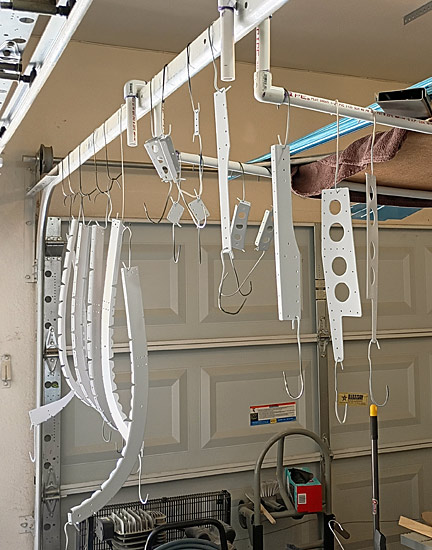 I finish coated all of the canopy parts with Stewart Systems E5301 EkoCrylic waterborne smoke gray paint. |
 These parts are finish coated with Stewart Systems E5301 EkoCrylic waterborne smoke gray paint. They will make up the tip-up canopy frame. |
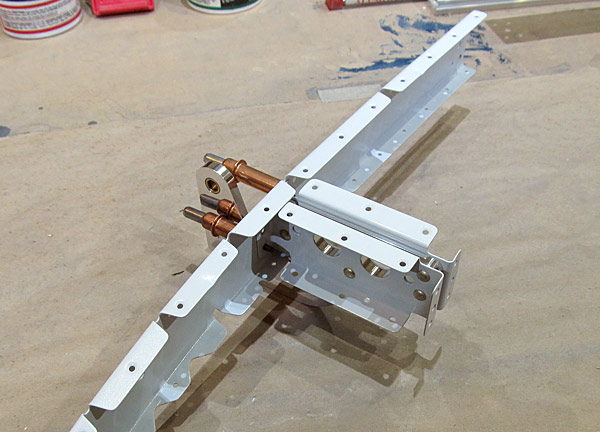 The left hinge assembly was clecoed to the (C-01402-L) left forward canopy frame to be riveted into place with AN470AD4-4 rivets. |
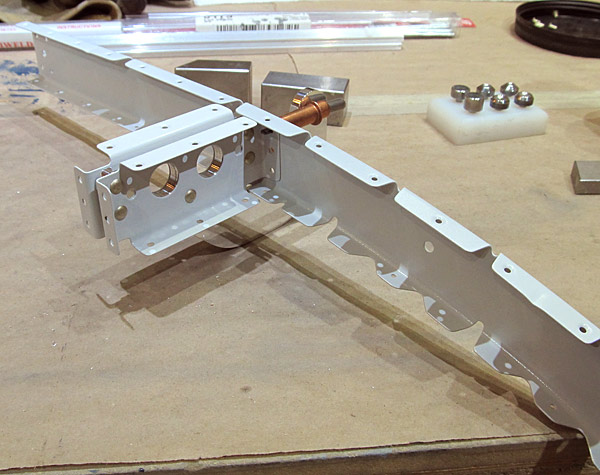 The right hinge assembly was clecoed to the (C-01402-R) right forward canopy frame to be riveted into place with AN470AD4-4 rivets. |
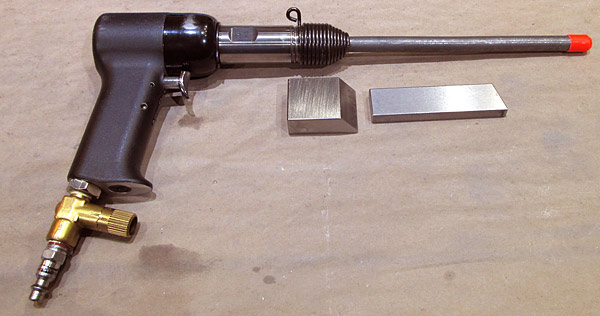 I am using our 3x rivet gun with a 1/8" cupped, 10 1/2" extension and a combination of 4" and 2" x 1 1/2" x 3/4" tungsten bucking bars to do the job. |
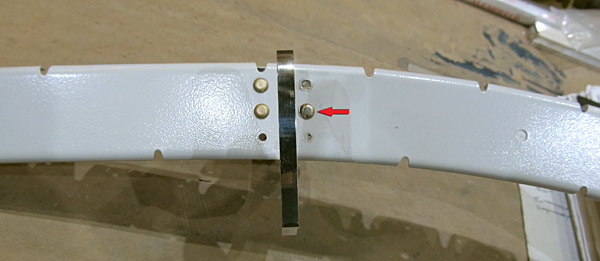 It's been a while since I used the rivet gun last so I needed to drill this bad rivet "smiley" out and set it again.... |
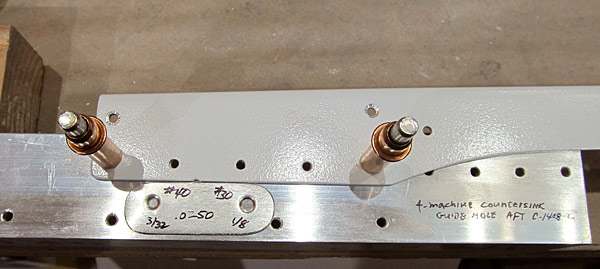 I skipped ahead just a little and machine countersunk the bottoms of the (C-01408-L and C-01408-R) left and right forward canopy rail bases. I did this because in step five, on page 38-09, referencing figure one, they will be rivited to the left and right forward canopy frame assemblies with AN426AD4-4 rivets. |
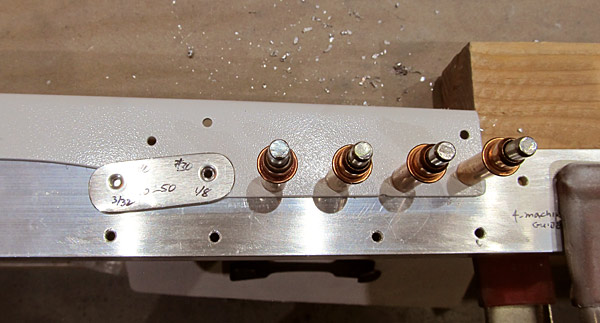 This is the (C-01408-R) right forward canopy rail base and just like the left one it is being machine countersunk to receive a #30 dimpled .025" skin. I cleco the countersunk holes as I move along. |
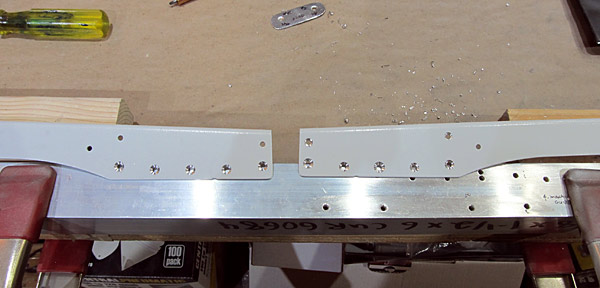 The machine countersinking is progressing... |
 As per step ten, on page 38-16, referencing page 38-17 figure two, the bottoms of the (C-01408-L and C-01408-R) left and right forward canopy rail bases were machine countersunk to receive the head of AN426AD4-4 rivets and to receive a .025" dimpled skin. |
 As per step one, on page 38-09, referencing figure one, clecoed and then riveted the left and right hinge assemblies to the (C-01402-L and C-01402-R) left and right forward canopy frames using a 3x rivet gun equipped with a 10 1/2" inch, 1/8" cupped extension, setting AN470AD4-4 rivets making sure that the manufactured heads faced forward. |
 As per step two, on page 38-09, referencing figure one, clecoed the (C-01415-L and C-01415-R) left and right forward intercostals and the (C-01416-L and C-01416-R) left and right intercostals to the (C-01403-L and C-01403-R) left and right mid canopy frames. |
 I wanted to get started on deburring the (C-01417) canopy frame close-out before I riveted the intercostals to the mid canopy frames....(only because the rivets were at our hangar which is over twenty miles away). |
 After deburring all of the holes, I clamped the (C-01417) canopy frame close-out to the bench and deburred the edges with a small file. |
 After the filework was done I polished the edges of the (C-01417) canopy frame close-out with fine sandpaper. |
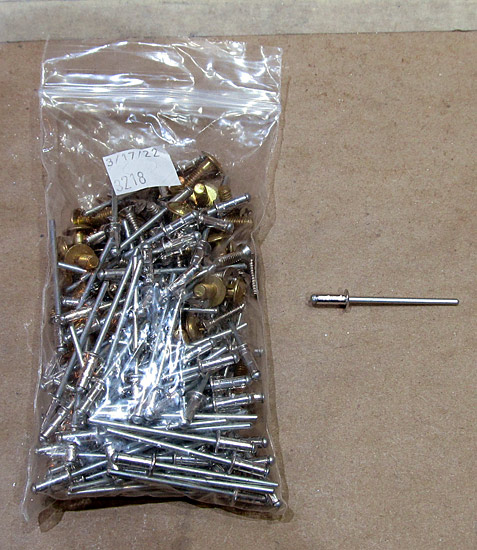 Remember the rivets that were at the hangar over twenty miles away? Well here they are bag 3218....LP4-3 rivets will be used to secure the intercostals to the mid canopy frames. |
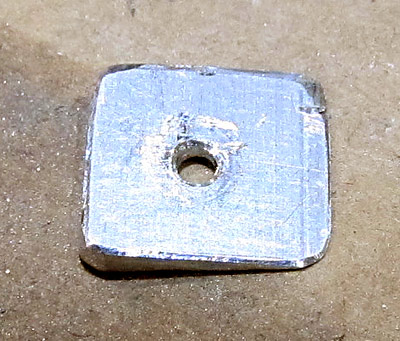 These little wedges are really handy when setting blind rivets in tight spaces. |
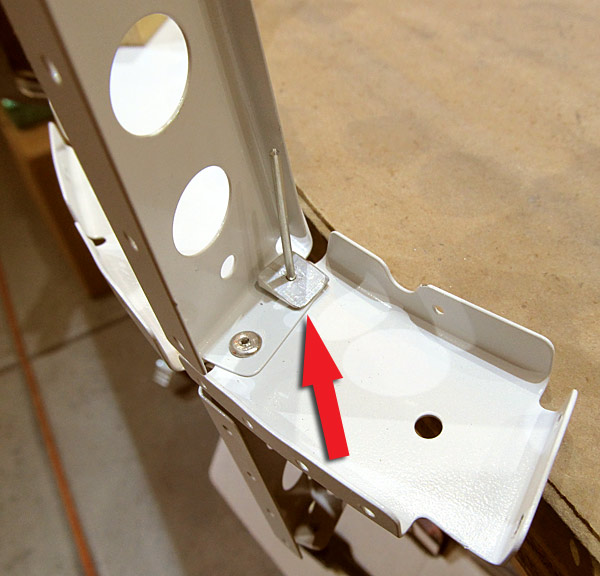 That handy little rivet wedge offsets the rivet gun just enough to squarely set the rivet! |
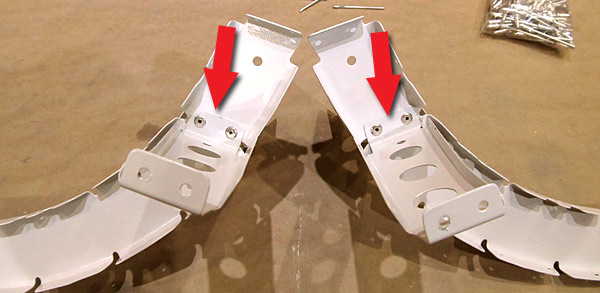 As per step two, on page 38-09, referencing figure one, the (C-01415-L and C-01415-R) left and right forward intercostals and the (C-01416-L and C-01416-R) left and right aft intercostals were riveted to the (C-01403-L and C-01403-R) left and right mid canopy frames with LP4-3 blind rivets using our hand rivet gun. |
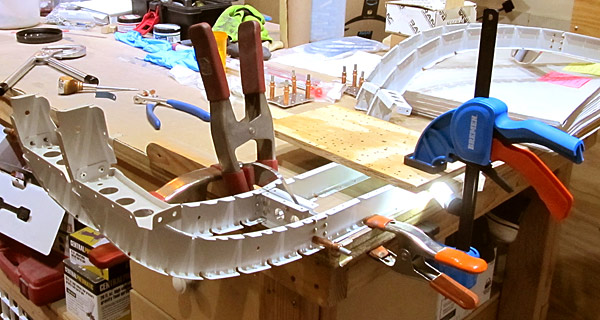 As per step three, on page 38-09, referencing figure one, clecoed the left canopy hinge assembly to the (C-01403-L) left mid canopy frame and then clamped this to the workbench so that they could be riveted together with AN470AD4-4 rivets which were set using our pneumatic squeezer. |
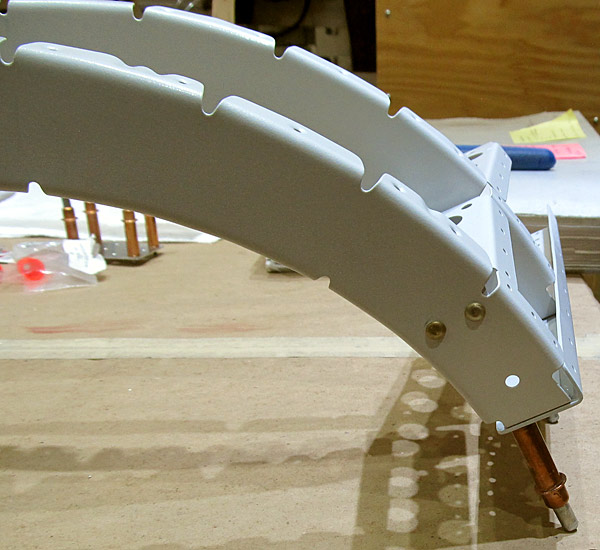 As per step four, on page 38-09, referencing figure one, I clecoed the (C-01415-L and C-01415-R) left and right forward intercostals to the (C-01402-L and C-01402-R) left and right forward canopy frames and riveted them together with AN470AD4-4 rivets set with our pneumatic rivet squeezer. |
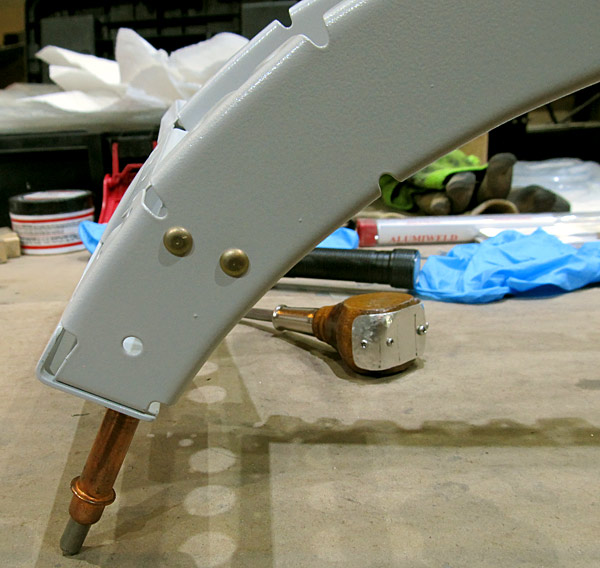 This is the right forward canopy frame. |
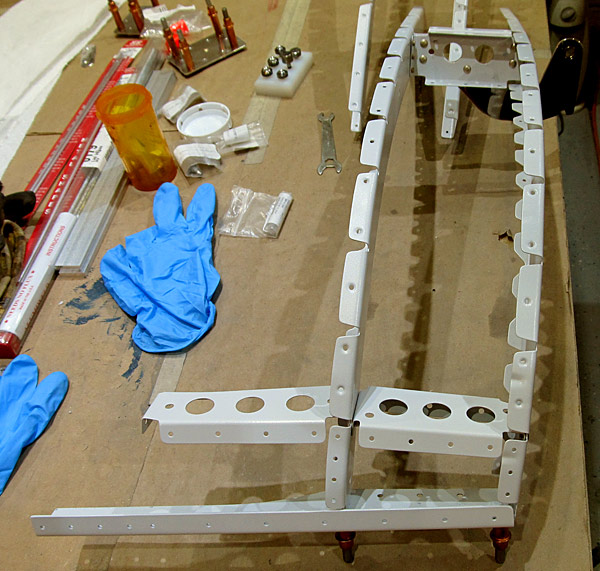 This is the side view of the right forward canopy frame. |
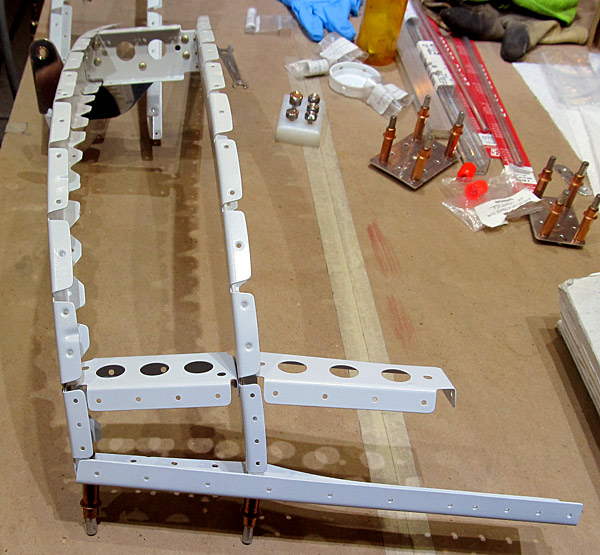 This is the side view of the left forward canopy frame. |
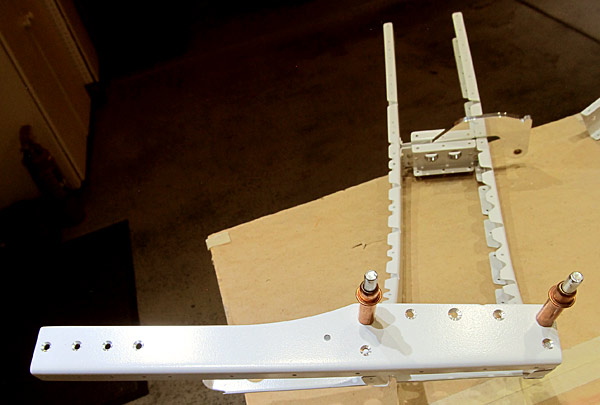 As per step five, on page 38-09, referencing figure one, I clecoed the (C-01408-L and C-01408-R) left and right forward canopy rail bases to the (C-01402-L and C-01402-R) left and right forward canopy frames and to the (C-01403-L and C-01403-R) left and right mid canopy frames. |
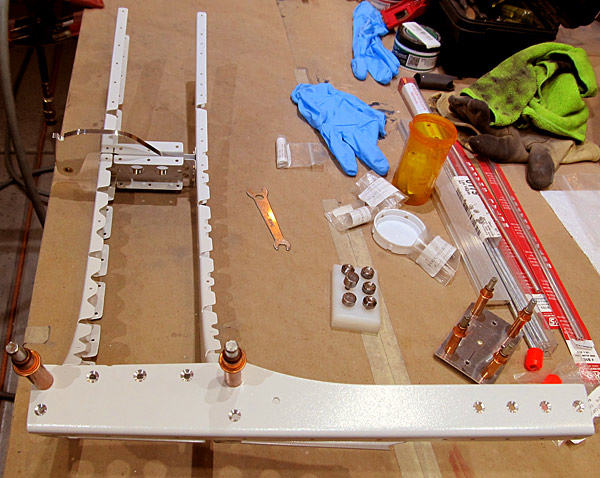 This is the Right Forward Canopy Frame Assembly. |
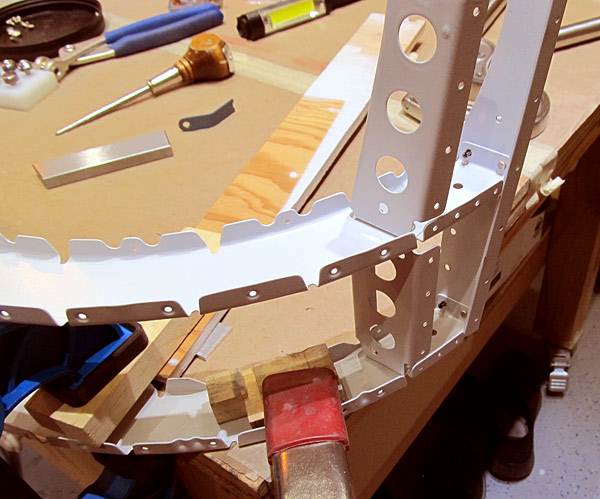 This is just a inside view of the rivets that were set to attach the (C-01408-L) left forward canopy rail to the (C-01402-L) left forward canopy frame and the (C-01403-L) mid canopy frame, now collectively known as the Left Forward Canopy Frame Assembly. |
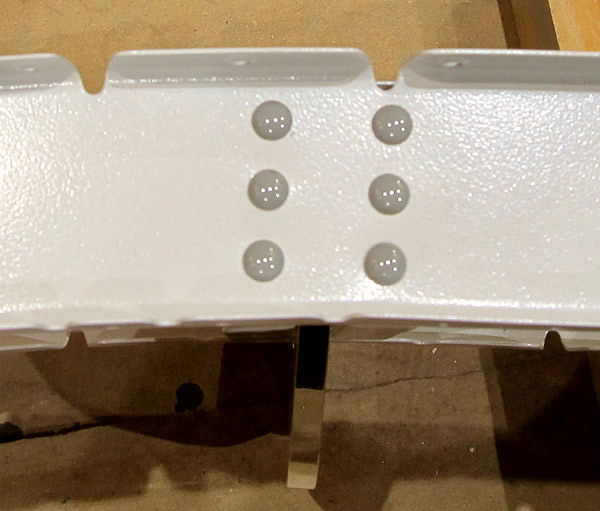 I mixed up some SPI, Southern Polyurethanes Inc., (6610-4) gray epoxy primer to touch up the heads of the AN470AD4-4 rivets that were set. |
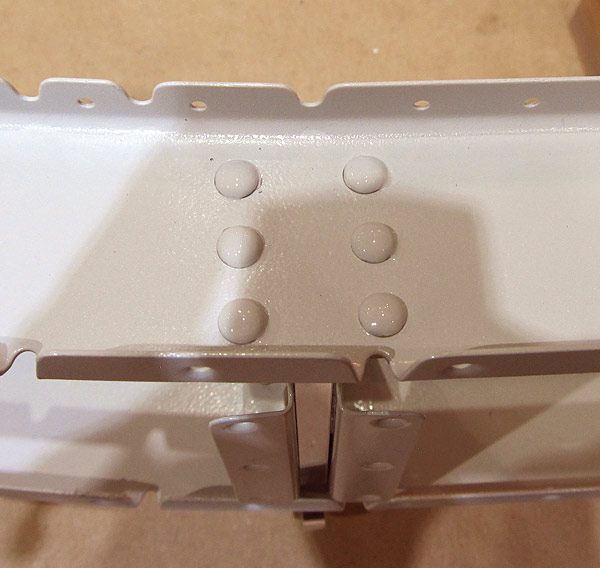 I top coated the AN470AD4-4 rivets with Stewart Systems E5301 EkoCrylic smoke gray paint. |
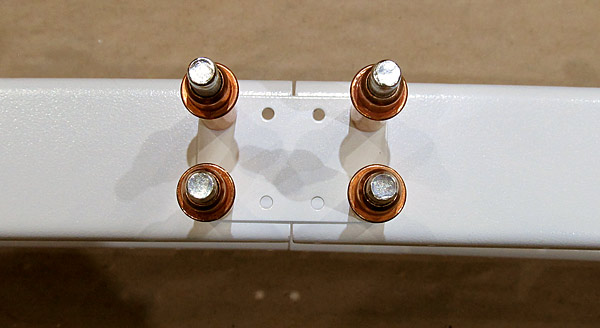 As per step six, on page 38-09, referencing figure one, I clecoed the (C-01428) frame splices to the left and right forward canopy frame assemblies. |
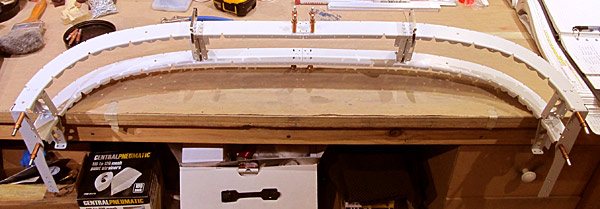 There are two (C-01428) frame splices, this photograph shows them connected to the forward and mid canopy frames from overhead. |
 The joined left and right forward canopy frame assemblies are positioned on their backs for the next step.... |
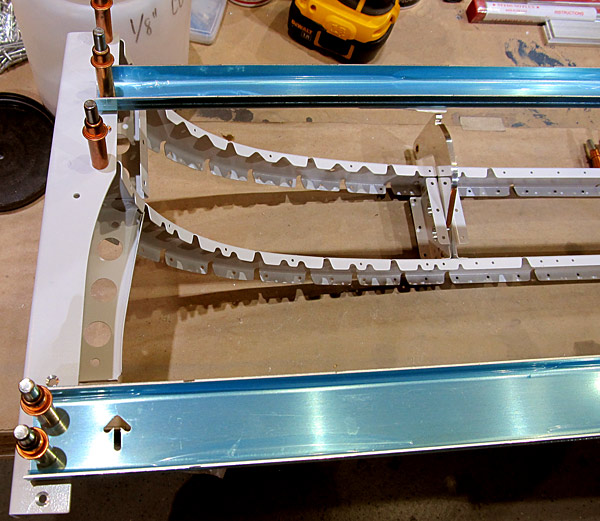 As per step seven, on page 38-09, referencing figure one, the (C-01442A) forward canopy fixture was clecoed to the (C-01408-L and C-01408-R) left and right forward canopy rail bases. |
 Here is what it all looks like when the (C-01442A and C-01442B) forward and mid canopy fixtures are clecoed in place. |
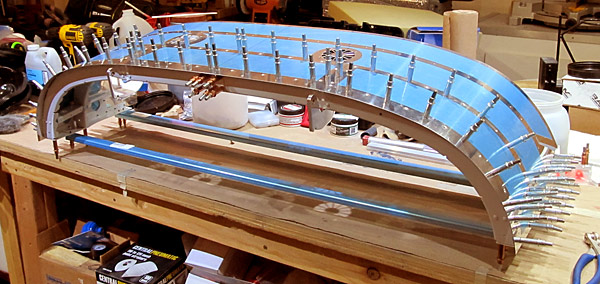 The whole assembly was carefully flipped over and as per step eight, on page 38-09, referencing figure one, the (C-01406-L and C-01406-R) left and right forward canopy rails and the (C-01418) canopy skin was clecoed to the left and right forward canopy frame assemblies starting in the center and working symmetrically outboard clecoing every other hole. |
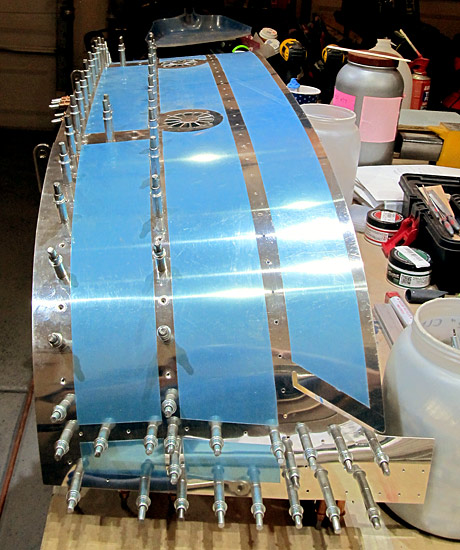 Here is what it all looks like from the side.... |
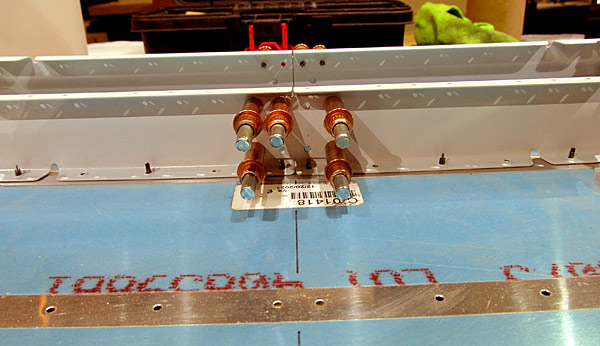 Once again the assembly was carefully flipped over and as per step nine, on page 38-09, adequate fluting was checked between the flanges of the (C-01402-L and C-01402-R) left and right forward canopy frame, the (C-01403-L and C-01403-R) left and right mid canopy frames, and the skin of the (C-01418) canopy skin. |
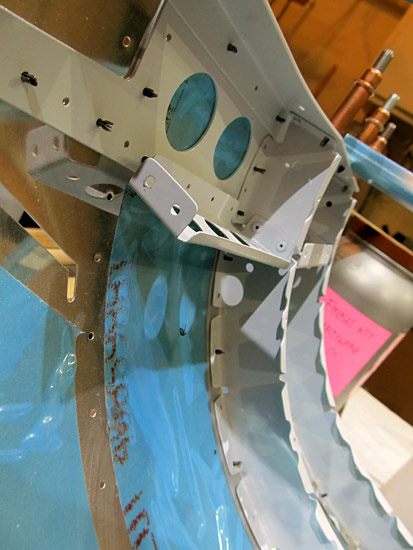 No gaps here... |
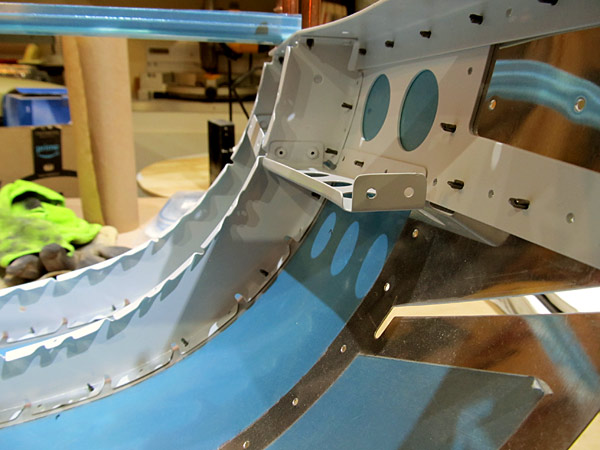 No gaps here... |
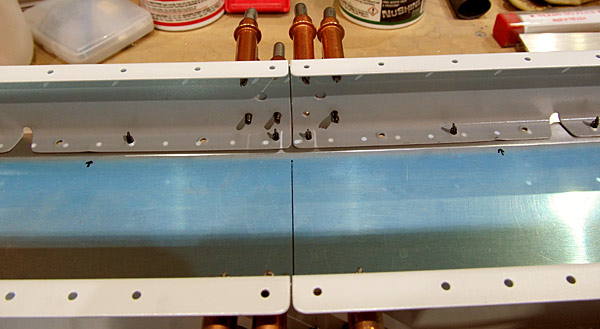 No gaps here... |
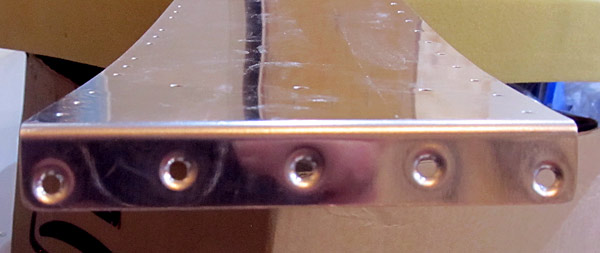 As per step one, on page 38-10, referencing figure one, the holes in the flanges of the (C-01417) canopy frame close-out were dimpled using a 1/8" dimple die set using our hand squeezer. |
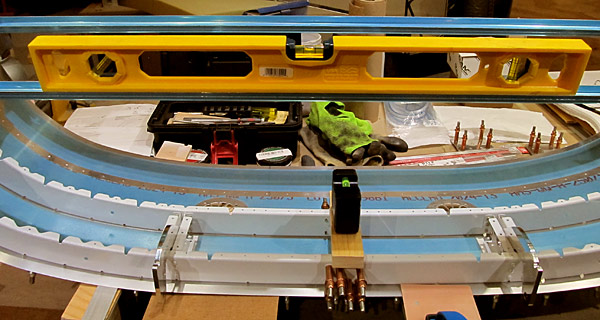 The canopy assembly has been on it's back and now has to leveled and stabilized so that the (C-01417) canopy frame close-out can be clecoed in place. |
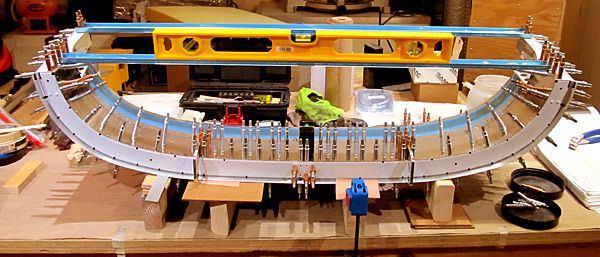 As per step five, on page 38-10, the (C-01417) canopy frame close-out was clecoed into position, clecos added to each available hole in the forward canopy frame assemblies. |
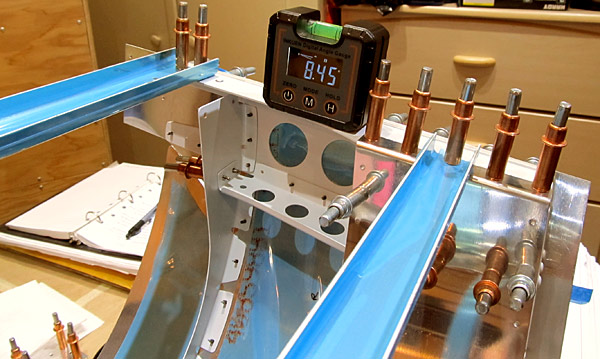 The canopy assembly was re-checked for level and stability and as per step seven, on page 38-10, a check was made for canopy twist using a digital level. |
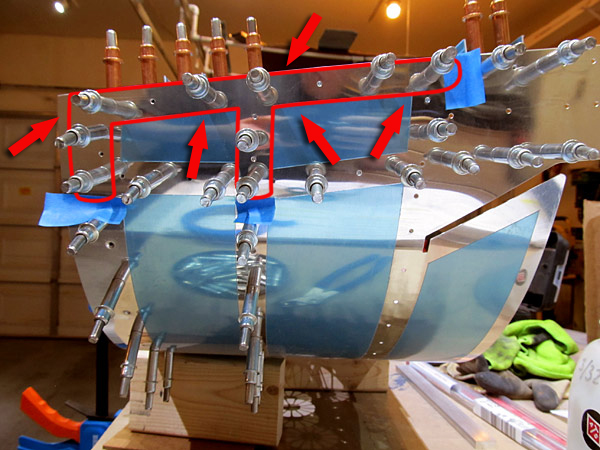 As per step eight, on page 38-10, referencing figure two, the holes outlined in red in this photograph were final #40 drilled and re-clecoed. |
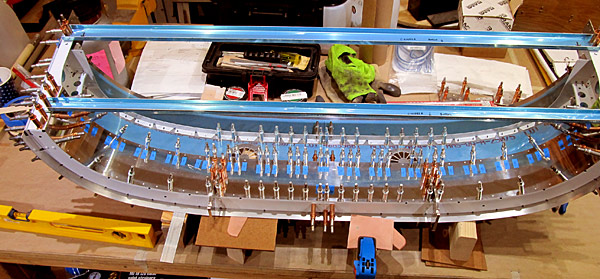 As per step nine, on page 38-10, referencing figure three, the (C-01404-L and C-01404-R) left and right support flanges were clecoed to the (C-01418) canopy skin and the (C-01416-L and C-01416-R) left and right aft intercostals. |
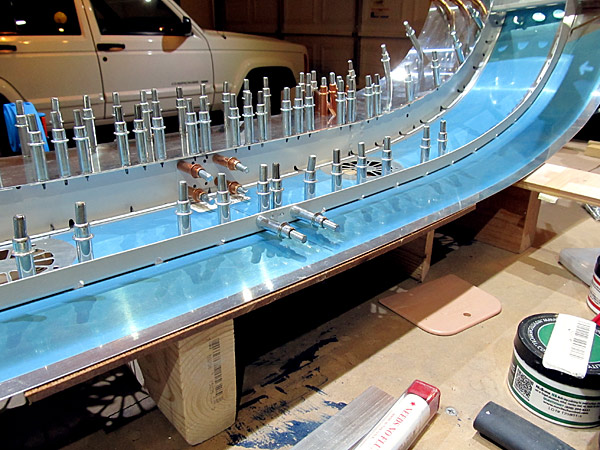 As per step ten, on page 38-10, referencing figure three, the (C-01404A) small support flange splice was clecoed to the (C-01404-L and C-01404-R) left and right support flanges. |
 As per step eleven, on page 38-10, double checked the canopy assembly for twist and made adjustments as necessary. The individual holes that needed to be drilled on the (C-01417) canopy frame close-out were marked to be drilled 1/8" or 3/32" according to detail A and figure three, using blue tape beside each hole. |
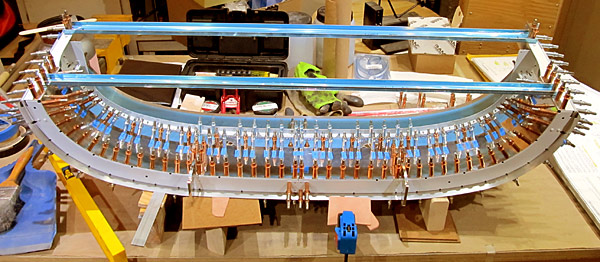 As per step twelve, on page 38-10, referencing figure three and detail A, match and final drilled the holes in the (C-01417) canopy frame close-out, beginning in the center and working symmetrically outboard. |
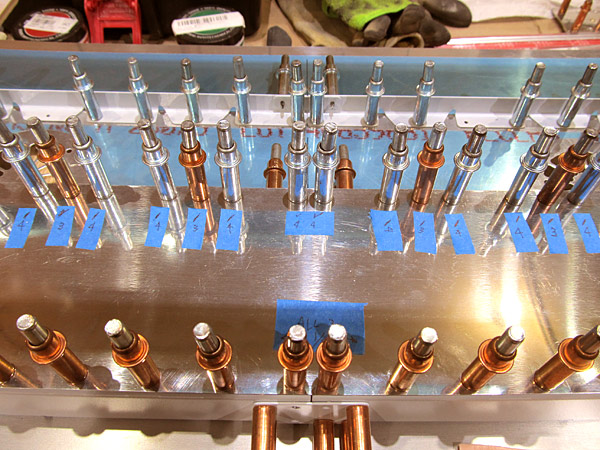 That's a lot of clecos! |
 As I stated earlier, it is hard to know when to paint the parts in section 38. When the tip up canopy is open everything will be seen so I feel that all needs to be painted but do you paint it after the frame is all put together, or do you paint the parts individually as the frame is being built? |
 I primed the (C-01417) canopy frame close-out with Southern Polyurethane Incorporated (SPI) 6610-4 gray epoxy primer. |
 I top coat painted the(C-01417) canopy frame close-out with Stewart Systems E5301 EkoCrylic smoke gray paint. |
 As per step one, on page 38-11, referencing figure one, the (C-01409) canopy rail angles were separated into two parts; (C-01409-L and C-01409-R) left and right canopy rail angles. |
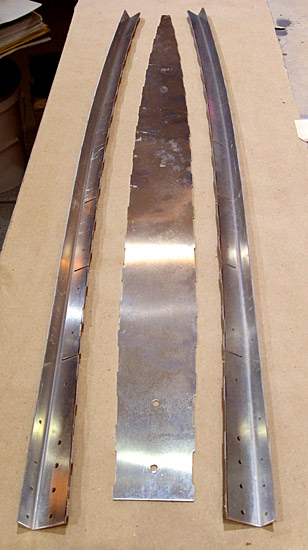 I used a bandsaw to separate the canopy rail angles but even with a fine toothed metal cutting blade it is still going to take a fair amount of filing to debur these pieces. |
 I edge deburred the (C-01409-L and C-01409-R) left and right canopy rail angles using a small file. |
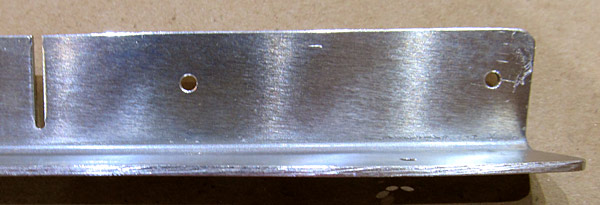 This is what the edges look like after deburring them with the small file. |
 All of the edges of the (C-01409-L and C-01409-R) left and right canopy rail angle edges have been sanded with fine sandpaper and polished. |
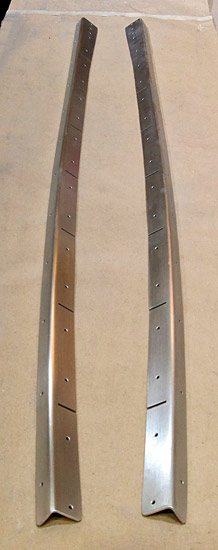 The surfaces of the (C-01409-L and C-01409-R) left and right canopy rail angles have been scuffed with maroon and gray Scotch-Brite™ pads in preparation for priming. |
 The (C-01407-L and C-01407-R) left and right aft canopy rails are next to be deburred but first I have to remove the protective blue vinyl. |
 All of the holes were deburred in the (C-01407-L and C-01407-R) left and right aft canopy rails and the parts were washed with acetone to remove the red ink stamped on the back side. |
 I like to clamp the aft canopy rails to a piece of angle to make it easier to debur the edges first with a small fine toothed file. |
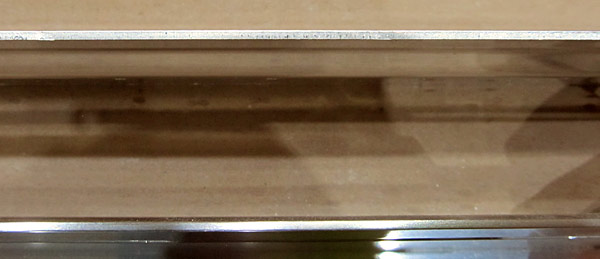 Here you can see what the edges of the (C-01407-L) aft canopy rail looks like before and after it has been deburred with a small file. |
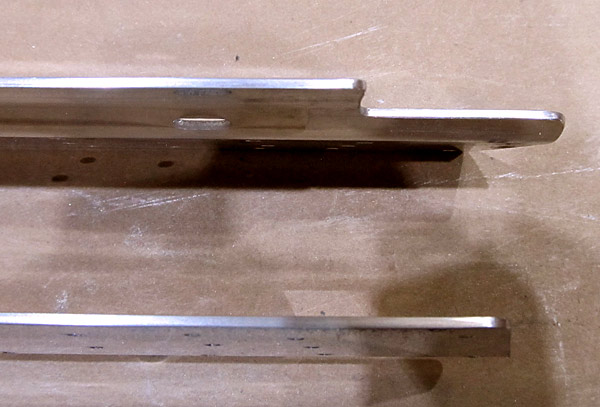 After the file work is done I like to sand and polish the edges with fine sandpaper. |
 As per step two, on page 38-11, referencing figure one, I used a single cleco to attach the (C-01409-L and C-01409-R) left and right aft canopy rail angles to the (C-01407-L and C-01407-R) left and right aft canopy rails. |
 Here is an overhead view of the (C-01409-L and C-01409-R) left and right aft canopy angles attached to the (C-01407-L and C-01407-R) left and right aft canopy rails by single clecoes in the middle. |
 This is probably a better overhead shot...Take notice of the bend in the (C-01409-L and C-01409-R) left and right aft canopy rail angles. |
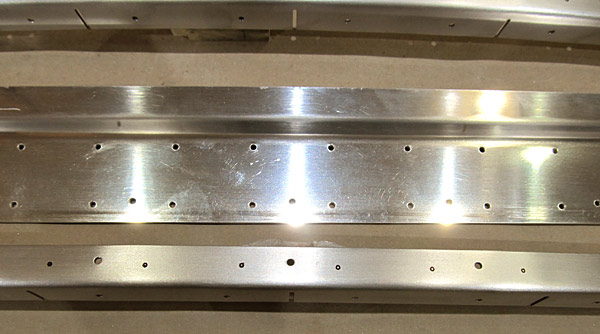 As per step three, on page 38-11, referencing figure two, the purpose to having these parts single clecoed together is so that the location of the pre-punched holes in the (C-01407-L and C-01407-R) left and right aft canopy rails could be marked onto the (C-01409-L and C-01409-R) left and right aft canopy rail angles which I did using a Sharpie. you can see the small circles on the angle at the bottom of this photograph. |
 After the location of the pre-punched holes were marked onto the (C-01409-L and C-01409-R) left and right aft canopy rail angles, everything was taken apart (step four) so that the angles could be straightened. |
 As per step five, on page 38-11, referencing figure one, the (C-01409-L and C-01409-R) left and right aft canopy rail angles were fluted as required to reduce the bowed down angles due to the manufacturing process. The flanges should rest on a flat surface, in this case I am using a level for that flat surface. |
 In this photograph you can see the small reference holes drawn by the Sharpie pen and the flutes required to straighten the aft canopy rail angles. |
